2013-2024 TREASURES OF STANISLAW AUGUST by Narodowy Bank
Issued by the National Bank Of Poland (NBP), also known as the Narodowy Bank, Treasures of Stanislaw August is a rare gem along the lines of the Monnaie de Paris’ superlative From Clovis to Republic series. Whereas that series took a modern designer, Christian Lacroix, and reinterpreted the styles of history for a modern, themed look, this series is firmly rooted in a historical source.
The last king of the Polish-Lithuanian Commonwealth was Stanislaw August Poniatowski, and around 1790 he instructed a pair of talented medallists, Jan Filip Holzhaeusser and Jan Jakub Reichel, to strike a series of medals based on a set of portraits by Marcello Bacciarelli painted some twenty years earlier. The result was issued by the Warsaw mint between 1791 and 1798. The NBP are releasing this series of 24 coin replicas, accurate even down to the diameter and depth of relief. Originally planned to be released at a rate of four per year for six years, the first three years from 2013 to 2015 saw three coins per year, and future years reduced that further.
Each coin is 2oz in weight, a nice size for a commemorative we think, but that also applies to the gold version, and 2oz of gold doesn’t come cheap. These are beautiful coins, expertly struck by the Mint of Poland and quite superbly realised. Considering these are very close replicas of medals over 200 years old, it’s obvious the two medallists responsible for those genuinely were talented. The reverse design includes one of the kings of Poland that ruled from 992 up until Stanislaw himself in 1795, although there is a big gap between 1025 and 1300 as, apparently, medieval kings from the Piast Dynasty weren’t particularly well thought of in the late 18th century.
The designs are of the highest order. The obverse sides carry an inscription with some notes on the life of the particular monarch. While the coins are boxed, some effort expended on a quality collection case would certainly be worthwhile for people having spent so much on the set. Fortunately, the Mint of Gdańsk did produce such a box, made of wood, with places for 24 issues in either silver or gold versions.
We’ve reproduced the release text for each coin, as it’s superbly done by Marta Męclewska, the former curator of the Numismatic Cabinet of the Royal Castle in Warsaw.
TABLE OF SUBSETS
BOLESLAW CHROBRY (992-1025)
Due to the absence of the original, the portrait of Bolesław Chrobry is a work of imagination. It shows the monarch wearing a crown from a later period. The inscription on the first medal in the series, on which the coin with Bolesław Chrobry has been modelled, reads as follows: “The first in Poland to be decorated with a royal crown, he, as the victor, delimited the borders of the state on the Elba, the Dnieper and the Ossa. Died in 1025 Anno Domini, aged 58, in the 33rd year of reign, on the 3rd day of April”.
This first king of Poland of the Piast dynasty, the son of Duke Mieszko I and Bohemian princess Dobrawa, born around 967 and crowned in 1025, created a powerful state, having conquered territories in the east (Red Ruthenia, temporarily Kiev) and west (Meissen, Upper Lusatia and Lower Lusatia). He elevated Poland into the European policy elite; at the Congress of Gniezno in 1000 Emperor Otto III presented him with the symbol of power, i.e. the lance of Saint Maurice, and placed his imperial crown on Bolesław‘s head as a pledge of coronation. The canonisation of Saint Adalbert in 999 enabled Bolesław to establish the organisation of the Polish church with an archbishopric in Gniezno and bishoprics in Kraków, Kołobrzeg and Wrocław. He waged wars against Bohemia and border German marches with changing fortunes. He started minting coins in his name with the name of Poland.
Coin designed by Robert Kotowicz (Rev & Obv)
WACLAW II CZESKI (1300-1305)
The second medal in the series, on which the coins have been modelled, depicts King Wacław II Czeski (Vaclav II). The series of medals, in similarity to the series of paintings by Marcello Bacciarelli from the 18th century, does not portray several crowned kings of Poland from the Piast dynasty who ruled after Bolesław I Chrobry. The Age of Enlightenment did not value Mediaeval history.
Wacław II Czeski is shown from the profile, in a crown on a soft hat, in an ermine robe, with an ornate chain on his neck. On the reverse, there is the following inscription (here in translation): Son of Bohemian king Přemysl Ottokar III, son-in-law of Přemysl I [II] king of Poland, he died in Prague Anno Domini 1305, after five years of ruling Poland, at the age of 33, on 24 June.
Wacław II Czeski from the Bohemian dynasty of Přemyslids was born in 1271; he became the king of Bohemia in 1283. Taking active part in the political power struggles of Polish parties related to the succession of the Duchy of Krakow following the death of Leszek the Black, he managed to take control of Lesser Poland and accepted the title of Duke of Krakow and Sandomierz in 1291. Next, he was paid homage by the following duchies: Duchy of Bytom, Duchy of Cieszyn, Duchy of Opole, Duchy of Racibórz, and later the Duchy of Legnica and Wrocław. He also took control of Greater Poland and Gdańsk Pomerania, thus winning over Władysław Łokietek (Ladislaus the Elbow-high) in his aspirations to win the crown. In 1300, archbishop Jakub Świnka crowned him the king of Poland in Gniezno. He married Elizabeth Richeza, daughter of King Přemysl II, thus consolidating his power as the king. He introduced a monetary reform in Bohemia by minting Prague groschen, which have become the universal tender in Central and Eastern Europe for two and a half centuries.
Coin designed by Ursula Walerzak (Rev & Obv)
WLADYSLAW I LOKIETEK (1306/1320-1333)
The third coin in the series is a medal depicting King Władysław Łokietek (Ladislas the Elbow-high or Ladislas the Short), who restored the Piast dynasty to the throne after a short rule of two kings by the name of Vaclav from the Czech Premyslid line. Władysław Łokietek’s greatest merit was to unify vast areas of the Kingdom of Poland after the period of regional disintegration.
The portrait by Marcello Bacciarelli, which served as the model for the medal by Jan Filip Holzhaeusser, shows the king’s bust. His features were most likely modelled on his tomb in the Wawel cathedral. The king is wearing a helmet with chain mail and a tassel as well as rich Reiter armour (it was anachronous as it was used only in the 17th century).
The medal’s reverse reads (in translation): The son of Casmir, duke of Kuyavia, three times banished; when he returned to his motherland he united and merged the dispersed parts of the state. He died A.D. 1333, aged 73, having ruled for 13 years, on 2 March.
Władysław Łokietek, from the Kuyavian line of Piasts, was born in 1260 or 1261. Initially he was the duke of Brześć in Kuyavia. He enlarged his domain fighting tirelessly with regional dukes, although with varying results. He won, lost and recovered the Duchies of Łęczyca, Sieradz, Sandomierz, Greater Poland and Eastern Pomerania. In 1306, after four-year banishment and the deaths of kings Wacław II (Vaclav II) and Wacław III (Vaclav III), he finally took control of Lesser Poland, and in 1314 of Greater Poland. Despite the victory in the battle of Płowce, he lost Gdańsk Pomerania and later Kuyavia to Teutonic Knights. Western Pomerania, Silesia, Masovia and Czerwień Towns also remained outside of his territory. With the consent of the Pope, he was crowned on 20 January 1320 – not in Gniezno, but in the Krakow Wawel cathedral as the first Polish king crowned there. He struck the first Polish golden coin – the famous florin. Only one such coin has survived until the present.
Coin designed by Anna Watrobska-Wdowiarska (Rev) and Robert Kotowicz (Obv)
CASIMIR THE GREAT (1333-1370)
The fourth coin in the series is a medal depicting the son of Władysław Łokietek (Ladislas the Elbow-high or Ladislas the Short) – Casimir, who gained the title of “Great” due to his enormous contribution to the restoration of the Piast monarchy, although he became the last ruler of this first Polish dynasty.
The image of the king on the medal is a natural reference to the portrait by Marcello Bacciarelli (a different crown and garments, a prominently displayed shield with a crowned lion, showing – in a mirror reflection – the coat of arms of the annexed Red Ruthenia).
In translation the reverse of the medal reads (on the coin the original text is slightly shortened): The Son of Łokietek, the first who collected the native rights and announced them in Wiślica, fortified many towns, incorporated Red Ruthenia into the Crown, desired to make and made citizens and farmers happy; the last king of the House of Piast. Died on the 5th of November 1370, at the age of 60, having ruled for 33 years.
The long reign of Casimir the Great, born in 1310, yielded many benefits to the country. The King reinforced power in the hereditary districts – Greater Poland, Sieradz and Wieluń Land, Lesser Poland and Kuyavia. Losing Gdańsk Pomerania to the Teutonic Knights, and in 1348 – the Silesian principalities to Bohemia, he directed his expansion towards the east and south. He annexed the Principality of Galicia–Volhynia (Red Ruthenia) and subordinated Mazovia and Podolia. The trade route connecting the Baltic Sea with the Black Sea was established. The economy boomed, supported by modernisation measures – the unification of law, settlement of towns, as well as treasury and military reforms. The country gained dozens of new castles and many secular and church buildings. In 1364 the king founded Kraków Academy, the first Polish university. He carried out a monetary reform, creating new monetary units, including the first thicker silver coin – the Kraków grosz.
Coin designed by Anna Watrobska-Wdowiarska (Rev) and Robert Kotowicz (Obv)
LOUIS I OF HUNGARY (1370-1382)
The fifth coin of the series commemorates Louis I from the French Angevin dynasty (d’Anjou), son of Charles Robert and Elizabeth of Poland. Louis was King of Hungary from 1342, and in 1370 – under previously made arrangements regarding the succession of the Angevins to the Polish throne in the event there were no male descendants of Casimir the Great – he became King of Poland.
The medallic image of Louis, bearing resemblance to the portrait by Marcello Bacciarelli, shows the right profile of the king, with a beard, wearing a robe with rosettes and a buckled coat. He has an ornamental crown on his head, different than the one in the portrait.
The medal’s reverse reads in translation (on the coin’s obverse in an abbreviated version): From a French house, son of Charles of Anjou, King of Hungary, and King of Hungary himself nephew of Casimir the Great from his sister Elizabeth’s side, he gave many privileges to the nobility. He died in Trnava A.D. 1382, aged 56, having reigned Poland for 12 years, on 12 September.
Louis, born in 1326 in Visegrád, became King of Poland after 28 years of successful reign in Hungary (where he was nicknamed the Great). In Poland, after his coronation in Cracow on 17 November 1370, it was his mother, Elizabeth of Poland, and later bishop Zawisza Kurozwęcki, who reigned in his stead during Louis’ frequent absences; a prominent role was also played by Duke Vladislaus II of Opole. In order to obtain permission for his daughters to succeed to the throne, Louis granted the Polish szlachta (gentry) the Privilege of Koszyce in 1374, which included tax exemptions and other liberties. This way he weakened the royal authority but laid a cornerstone for the later nobles’ democracy. He waived claims on Silesia in favour of Bohemia and gave Red Ruthenia to the Hungarian crown. He fought victorious battles for Hungary in the Balkans and towards the end of his life conquered Dalmatia and Dubrovnik. He died in Nagyszombat (in Latin Tyrnavia, currently Trnava in Slovakia) in 1382.
Coin designed by Urszula Walerzak (Rev and Obv)
JADWIGA OF ANJOU (1384-1399)
The sixth coin of the series commemorates Jadwiga of Anjou, daughter of Louis I of Hungary, who was crowned Queen of Poland in 1384. In 1386, Jadwiga was married to Ladislas Jagiello, Grand Duke of Lithuania. Despite her young age, thanks to her strong international position and wise politics, she gained prestige and respect. Known also for her piety and charity, publicly venerated, Jadwiga was canonized by the Roman Catholic Church in 1997.
The medallic image of Jadwiga, referring to her portrait by Marcello Bacciarelli, shows her left profile, with a veil and an ornamental crown on her head, a folded dress and a double strand pearl necklace.
The medal’s reverse reads in translation (on the coin’s obverse in an abbraviated version): The third daughter of Louis,crowned Queen of Poland A.D. 1384, on 15 October. Married to Ladislas Jagiello on 17 February A.D. 1386. She restored to Poland Red Ruthenia from Hungary’s occupation. Died A.D. 1399, aged 28, on 17 July.
Born in 1373 or 1374, Jadwiga succeeded to the throne of Poland at the age of ten; she ruled on her own for two years, then thirteen years together with Ladislas Jagiello. Well educated, she actively participated in politics and diplomatic mediations with Dukes of Lithuania Vytautas and Skirgaila as well as with the Teutonic Order. In 1387 she recovered to Poland Red Ruthenia, which had been incorporated into Hungary by Louis I of Hungary after the death of Casimir the Great. She contributed to the restoration of the Cracow Academy – she left her dresses and jewels to the Academy in her last will. She performed a wide variety of funding and charitable activities, she encouraged translations of Latin sacral texts into Polish. She died after giving birth to her daughter Elizabeth Bonifacia, who also died in 1399.
Coin designed by Anna Watrobska-Wdowiarska (Rev) and Robert Kotowicz (Obv)
LADISLAS JAGIELLO (1386-1434)
The seventh coin of the series shows Jagiello, the ruler of Lithuania from 1377. He was crowned King of Poland in 1386, following his baptism, his marriage to Poland’s Queen Jadwiga of Anjou and the adoption of the name of Władysław (Ladislas). Fulfillment of these commitments resulted in the formation of the personal union between Poland and Lithuania and initiated the Christianization of Lithuania. Thus Ladislas became the founder of the Jagiellonian dynasty, which ruled a significant part of Europe.
Medallic image of Ladislas, though imitating a portrait by Marcello Bacciarelli, is wrong because the painter had wrongly chosen the portrait of Sigismund-Augustus as a model. On the medal, the sovereign is shown in the right profile, bareheaded, with abundant beard and a coat draped around his shoulders. His left hand rests on a shield featuring the Lithuanian coat of arms, Vytis (the Chaser).
The medal’s reverse reads in translation (on the coin’s obverse the text is in an abbreviated version): Algirdas’ son, designated Jadwiga’s spouse A.D. 1385, crowned in 1386. He joined Lithuania and Poland together, made Lithuania Christian, founded the Academy in Cracow, defeated Teutonic Knights at Grunwald, and decided that no nobleman could be held in custody without a court ruling. He died A.D. 1434, at the age of 86, in the 48th year of his reign, on 31 May.
Ladislas was born under the name of Jogaila. His date of birth is still unknown (between 1351 and 1362) and subject to debate. He was the son of Algirdas, Grand Duke of Lithuania from Gediminid dynasty. Looking for allies to fight the Teutonic Knights, Jagiello turned to Poland. Under the Treaty of Krevo, in exchange for the Polish throne, he undertook to convert Lithuania into Christianity and to establish a union with Poland. The union benefited both countries politically, economically and culturally. He halted the expansion of the Teutonic Order and won the famous victory at Grunwald (1410). He joined a part of Spisz to Poland, restored Dobrzyń Land to Poland and Samogitia – to Lithuania. He received homage from Moldova and entered into an alliance with Brandenburg. To maintain the Dynasty he gave the nobles numerous priviledges, including famous act neminem captivabimus nisi iure victum (we shall imprison noone except if he has been lawfully sentenced). In 1400, he restored – thanks to Jadwiga’s donation – the Academy in Cracow, which was later named the Jagiellonian University.
Coin designed by Anna Watrobska-Wdowiarska (Rev) and Robert Kotowicz (Obv)
LADISLAS OF VARNA (1434-1444)
The eighth coin in the series depicts Ladislas of Varna, son of Ladislas Jagiello, crowned in 1434 as King of Poland, titular Grand Duke of Lithuania, and in 1440 as King of Hungary. In 1435 he received the homage of the Voivode of Moldavia and signed the Peace of Brześć Kujawski with the Teutonic Knights. His short reign was divided between Poland and Hungary.
The medal image of the king, based on a portrait painted by Marcello Bacciarelli, depicts the bust of an armoured man facing left. There is a wound on his temple, with blood running from under his broken helmet. A crown is placed on his helmet and there is a medallion of the Virgin Mary with Child hanging on his breast – on a decorative, 17th century-style armour.
On the reverse of the medal (on the averse of the coin the text is slightly shorter) it reads: Jagiello’s oldest son, intended as King of Poland during the life of his father, crowned as King of Hungary in the year of the Lord 1440. At the Battle of Varna against the Turks, he fell victim to treacherous advice and was killed in the year of the Lord 1444, at the age of 20, on the 10th of November in the eleventh year of his reign in Poland.
Ladislas, the first-born son of Ladislas Jagiello and his fourth wife, Lithuanian princess Sophia of Halshany, was born in 1424. On behalf of the minor king, crowned at the age of 10, the regency was held by a royal council, above all, by the Bishop of Cracow, Zygmunt Oleśnicki, who paved Ladislas’s way to the Hungarian throne. Despite the signed truce, as the leader of the victorious European crusade against the Turks in the Balkans (1443–1444), Ladislas undertook another expedition to Adrianople and was killed in the Battle of Varna. The king’s body was never recovered, the fact which underlay the legends about him surviving the battle and was the reason for a threeyear delay in acclaiming a new King of Poland. In 1906 a symbolic tombstone of Ladislas of Varna was erected in the Wawel Cathedral, and in 1935 a monument to him was built in Varna.
Coin designed by Anna Watrobska-Wdowiarska (Rev) and Robert Kotowicz (Obv)
CASIMIR JAGIELLON (1447-1492)
The ninth coin in the series depicts Casimir Jagiellon, the younger brother of Ladislas of Varna. His long reign was a very fruitful one as it saw the incorporation of Prussian territories, the Duchy of Oświęcim and a part of Mazovia into the Kingdom of Poland.
Of the 13 children born of his marriage to Elisabeth of Austria (known as the mother of kings), four of his sons were crowned, one was granted the nimbus of a saint and five daughters married into renowned European ducal families. The Jagiellonian dynasty became a significant political power in 15th-century Europe.
In the medallic bust of the king (modelled on a portait painted by Marcello Bacciarelli) the facial features bear resemblance to the tombstone sculpted by Wit Stwosz (Weit Stoss) in Wawel Cathedral. The medal features the king’s head covered with a fur cap decorated with a hat brush, and by the cloak fastened with a buckle there is a shield bearing the coat-of-arms of Royal Prussia.
The inscription on the reverse of the medal reads (in translation): Jagiello’s second son, having, at the inhabitants’ request, liberated Prussia from the Teutonic yoke, returned it to the Crown and made it a province. He died in Grodno A.D.1492, at the age of 66, in the 45th year of his reign, on 7 June.
Casimir, born in 1427, the son of Ladislas Jagiello and Zofia Holszańska, was proclaimed Grand Duke of Lithuania in 1440, but the personal Polish-Lithuanian union was formally renewed only after his coronation in 1447. The development of the Vistula-borne trade, the political emancipation of towns in the Teutonic state and the establishment of the Prussian Union all led to the issuing of the act of incorporation of Prussia into Poland in 1454. Following the Thirteen Years War with the Order of the Teutonic Knights that ended with Poland’s victory in 1466, Poland gained Gdańsk Pomerania (Pomerelia) and part of Prussian territories. The Order became a vassal to the Polish Crown. For his son, Ladislas, the king obtained the crowns of Hungary and Bohemia. Polish nobles were awarded new privileges. Science and culture flourished; Jan Długosz wrote his monumental history of Poland and Wit Stwosz (Weit Stoss) created his altarpiece in St. Mary’s Basilica in Kraków.
Coin designed by Anna Watrobska-Wdowiarska (Rev) and Robert Kotowicz (Obv)
JOHN ALBERT (1492-1501)
The tenth coin of the series portrays John Albert, the third son of Casimir Jagiellon, King of Poland from 1492, Duke of Głogów until 1498, ineffectively elected King of Hungary in 1490. His brief reign was difficult and tarnished by the defeat in Bukovina. During this period the Polish-Lithuanian personal union was suspended (the Grand Duke’s throne in Lithuania was taken over by his brother Alexander).
The medallic bust of the king in profile turned to the right (modelled on a portrait by Marcello Bacciarelli) bears a resemblance to the facial features sculpted on the Gothic-Renaissance tomb in Wawel Cathedral. On the medal, the king is shown wearing a kalpack with an ostrich feather; over his coat he is wearing a gold chain with a medallion.
The obverse of the coin reads in translation (a slightly abbreviated text taken from the reverse of the medal): Casimir’s third son, brother of Ladislas, King of Hungary and Bohemia, and of Saint Casimir, who defeated the Tartars and was defeated in battle by the Wallachians. Died in Toruń A.D. 1501 at the age of 41, in the 9th year of his reign, on 7 August.
John Albert, born in 1459, was the third son of Casimir Jagiellon and Elisabeth of Austria. He incorporated the Duchies of Zator and Płock into the Crown. In foreign policy he focused on fighting the Tartars and Turks, and on striving to regain Polish control over Moldova and Wallachia, Polish fiefs from 1387. The expedition of the levée en masse in 1497 ended in defeat in the battle of Koźmin in Bukovina, where approx. 5,000 Polish noblemen were killed (hence the saying, “In King Albert’s time the gentry died out”). The war was halted by the truce in 1501. To gain funds for the country’s defences from taxes, the nobility were granted new privileges (1496, the Piotrków Statutes). Important changes took place in the Polish parliamentary system – the former Privy Council was transformed into the Senate and the noblemen’s council conventions into the Chamber of Deputies of the Sejm. This lay the foundations of the so-called “noble democracy”. John Albert died without issue and was buried in Wawel. His heart was laid in Ss. Johns’ Cathedral in Toruń.
Coin designed by Anna Watrobska-Wdowiarska (Rev) and Robert Kotowicz (Obv)
ALEXANDER JAGIELLON (1447-1492)
The eleventh coin of the series portrays Alexander, the fourth son of Casimir Jagiellon and Elisabeth of Austria. Grand Duke of Lithuania from 1492 and King of Poland from 1501. The Polish-Lithuanian personal union was restored upon Alexander’s coronation. The king was reproached for ineffective foreign policy, submission to the magnates and mismanagement of the royal estate and treasury.
The coin’s reverse depicts the king’s bust based on the medal, shown in profle facing lef (modelled on a painting by Marcello Bacciarelli). The king is wearing a beret with an ostrich feather; he is dressed in a fur coat and a cafan underneath, over which the king is wearing a chain with a pendant.
The coin’s obverse reads in translation (the text from the medal’s reverse is slightly abbreviated): Casimir’s fourth son, by whose orders Chancellor Łaski consolidated and published the legislation. He died in Vilnius A.D. 1506 at the age of 45, in the 5th year of his reign, on 19 August.
Alexander, born in 1461, was placed on the throne of the Grand Duchy of Lithuania in 1492 according to his father’s will; his elder brother John Albert was then elected King of Poland, as a consequence of which the Polish-Lithuanian personal union was severed for 9 years. Afer Alexander’s ascension to the Polish throne in 1501, the union was reinstated under the act signed in Mielnik. As Grand Duke of Lithuania and then King of Poland, Alexander conducted unsuccessful wars over eastern territories of Lithuania, which were ultimately lost to the Grand Principality of Moscow in 1503. In 1495, he married Helena, a daughter of Ivan III, Grand Prince of Moscow. Alexander spent most of his time in Lithuania, delegating the rule of Poland to senators and his brother, Cardinal Frederick. The opposition of the nobility forced the king to limit the magnates’ rights and caused the Nihil novi constitution (“nothing new”, i.e. “nothing about us without us”) to be adopted by the Sejm at the sitting in Radom in 1505. The act granted dominance over the Senate and King to the nobility’s Chamber of Deputies. By that time Chancellor Łaski had drawn up a collection of laws, statutes and privileges, known as Łaski’s Statutes, which were approved by the same Sejm. Alexander Jagiellon died without issue in Vilnius in 1506 and was buried in Vilnius Cathedral.
Coin designed by Anna Watrobska-Wdowiarska (Rev) and Robert Kotowicz (Obv)
SIGISMUND THE ELDER (1506-1548)
The twelfth coin in the series depicts Sigismund I, the fifth son of Casimir Jagiellon and Elisabeth of Austria. Sigismund became the Grand Duke of Lithuania and King of Poland in 1506. Following the coronation of his son in 1529, he was dubbed “the Elder”. A partisan of a peaceful solution to political conflicts, he enjoyed the respect of both his subjects and foreign rulers. His reign ushered Poland into its golden age – a period of economic and cultural prosperity.
The reverse of the coin depicts the bust of the king modelled on a medal designed after a painting by Marcello Bacciarelli. The bust faces right, the king is wearing a crown and has a short beard over a ruff. He is clad in armour covered with a richly embroidered coat clipped with a decorative buckle and adorned with a jewelled Order of the Golden Fleece on a chain. This is the first medal in a series struck by Jan Jakub Reichel, the new court medal minter of Stanisław August (his predecessor in this post, Jan Filip Holzhaeusser, died in 1792).
On the obverse of the coin we can read a slightly shortened version of the text engraved on the reverse of the medal (in translation): Casimir’s penultimate son, distinguished by sagacity, triumph and wealth, a contemporary and equal of Emperor Charles V and Francis I of France. Died AD 1548, aged 81, in the 42nd year of his reign, on 1 April.
Sigismund was born in 1467. He married Barbara Zapolya (1512) and, after her death, Bona Sforza d’Aragona (1518). In 1499–1506 he held the title of Prince of Głogów. Elected King of Poland in December 1506, Sigismund was crowned in Kraków in January 1507. He reorganised and strengthened the Treasury and ensured increased Crown revenue from duty collection and the salt works. In 1515, he concluded an alliance with the Habsburgs. In 1526, the king incorporated the fiefdom of Masovia into the Polish Crown. He carried out an election vivente rege of his son Sigismund Augustus in 1529, and soon afterwards established in Poland the election viritim (all noblemen being entitled to vote on the condition of presenting themselves at the election site).
As a result of wars fought in 1507–1508 and 1512–1522 (and despite the victory at Orsza in 1514), Lithuania lost Smoleńsk to Muscovy. Following the war with the Teutonic Order (1519–1520), in 1525 Sigismund accepted the liege homage from Albrecht Hohenzollern, the Prince of Prussia (previously the Grand Master of the Teutonic Order). The king modernized the monetary system and integrated the Prussian coin into it in 1526. Sigismund was a generous patron of Renaissance art and remodelled Wawel Castle. He died in 1548 and was buried in Kraków on Wawel Hill.
Coin designed by Anna Watrobska-Wdowiarska (Rev) and Robert Kotowicz (Obv)
SIGISMUND AUGUST (1548-1572)
The thirteenth coin of the series depicts Sigismund-Augustus, the son of Sigismund the Elder and Bona Sforza d’Aragona, from 1529 the last independent Grand Duke of Lithuania, the King of Poland formally crowned in 1530 (vivente rege election of 1529) and reigning from 1548, following the death of his father. He was the last king from the male line of the Jagiellonian dynasty. He acquired Livonia as a fef and joined Poland and Lithuania in a union; he was distinguished by his tolerant attitude in matters of faith, he cared about the prestige of the state and was a patron of the arts.
The reverse of the coin presents the bust of the king transferred from a medal (based on a painting by Marcello Bacciarelli), in profile facing right, with a moustache and a split beard, in a Spanish costume – a small stiff hat with ostrich feathers, a ruff and a coat with an impressive sable fur collar, and a chain with the Order of the Golden Fleece on his neck.
The obverse of the coin carries a slightly shortened version of the text from the reverse of the medal (in translation): The only son of Sigismund the Elder and Bona Sforza, during his father’s life he was elected as king at the age of ten, afer the death of his father he acquired Courland as a fef of the Commonwealth, and he joined Lithuania and Poland in a lasting union, the last King of Poland from the Jagiellonian dynasty. He died childless in Knyszyn on the 18th of July Anno Domini 1572, at the age of 52, in the 24th year of his reign.
Sigismund-Augustus was born in 1520. He was married three times. In 1543, he married Elizabeth of Austria (died in 1545). In 1547, he married Barbara Radziwiłł (crowned in 1550, died in 1551) against the will of his parents and of the Polish Sejm. In 1553, Sigismund-Augustus married Catherine of Austria (they separated in 1563, she died in 1572). As a result of wars with Russia, in 1561 he acquired Livonia as a fief of the Kingdom of Poland, along with the secular Duchy of Courland and Semigallia established there and ruled by Duke Gotthard Kettler, the last Master of the Livonian Order of Knights. He began the development of the Polish fleet. He carried out many economic and military reforms, and the survey and so-called recovery of property – estates previously given to magnates were restored to the state treasury. The most important political act during his reign was the Union of Lublin signed in 1569. It resulted in the establishment of the Polish-Lithuanian Commonwealth, also known as the Commonwealth of Both Nations – from that point on Poland and Lithuania had a single ruler, a common foreign policy, a common Sejm and a single currency, while retaining separate laws, treasuries, offices and armies. The King died childless in 1572 in Knyszyn and was buried in a solemn ceremony at Wawel Castle.
Coin designed by Anna Watrobska-Wdowiarska (Rev) and Robert Kotowicz (Obv)
HENRY VALOIS (1573-1575)
The fourteenth coin in the series depicts Henry Valois. Born in 1551, he was the fourth son of the French King Henry II and Catherine de Medici, and the last French monarch of the Valois dynasty. He was the first elected monarch of the Polish-Lithuanian Commonwealth. Valois was elected in May 1573 following the heirless death of the last king from the Jagiellonian dynasty Sigismund II Augustus. He arrived in Poland at the end of January 1574, and his coronation took place at the Wawel cathedral on 21 February. After learning of the death of his brother Charles IX, who was the King of France, he left Poland on the night of 18-19 June 1574. He was crowned the King of France as Henry III in 1575 in Reims.
On the reverse the coin depicts the bust of the king transferred from a medal (according to a painting by Marcello Bacciarelli) with the profile facing right, in a velvet hat with ostrich feathers and a brooch pinned above the forehead, with a curled moustache and a small beard, with an earring in his right ear; in a decorative French robe with a lace collar, in a coat and with the Order of Saint Michael on a ribbon.
The obverse of the coin carries a slightly shortened version of the text from the reverse of the medal (in translation): The third son of the French King Henry II, elected Anno Domini 1573, crowned on the 21st day of February Anno Domini 1574, after only five months in Poland he left for France in order to take the throne of that kingdom, orphaned after the death of his brother – Charles IX. He was murdered on the 2nd day of August Anno Domini 1589, at the age of 38.
During the bloody religious war taking place in France, Henry Valois won the first Polish free election, even though he didn’t know the institutional system and the politics of the Polish-Lithuanian Commonwealth and wasn’t interested in them. He swore to abide by the legal acts prepared by the Election Sejm. These were the so-called Henrician Articles, which regulated the principles of the king’s reign (and guaranteed the basic rights of the nobility), the provisions of the Warsaw Confederation which guaranteed religious tolerance, and the pacta conventa – the personal pledges of the ruler regarding politics, the economy and culture. Henry Valois was widely criticized for his profligacy and promiscuous lifestyle. He failed to fulfil his promise to marry Infanta Anna Jagiellon, the sister of Sigismund II Augustus. A year after his departure from Poland, in June 1575, a state of interregnum was proclaimed in Poland and the nobility chose Anna Jagiellon as his successor. Despite that, Henry III continued to use the titles of the King of France and the King of Poland until the end of his life. He was stabbed to death during religious feuds in 1589. His grave is located in the Basilica of Saint Denis in Paris.
Coin designed by Anna Watrobska-Wdowiarska (Rev) and Robert Kotowicz (Obv)
STEPHEN BATHORY (1576-1586)
The fifteenth coin of the series carries the image of Stephen Bathory (Báthory István), the son of the Voivode of Transylvania and Prince of Transylvania from 1571, acclaimed King of Poland by the noblemen in December 1575. On 1 May 1576, he married Anna Jagiellon, who had been elected King of Poland a year before, whereby he acquired the right to the throne and was crowned in Kraków. He is regarded as one of the most outstanding Polish rulers.
The reverse of the coin features the king’s bust modelled on a medal (designed afer a painting by Marcello Bacciarelli). The bust faces lef, the king has a moustache, and is wearing a traditional Hungarian woollen cap decorated with feathers, a zhupan, and a delia cloak with a fur collar and buttons, clasped with a round fbula.
The obverse of the coin features a slightly shortened version of the text engraved on the reverse of the medal (in translation): Prince of Transylvania, spouse of Princess Anna Jagiellon, elected king A.D. 1575 on the 15th day of December, crowned the following year on the 30th day of May; forced the residents of Gdańsk into submission, militarily reincorporated Polotsk, Vitebsk, and Livonia into the Republic of Poland, established tribunals, founded the Academy of Vilnius; just, valiant, educated, snatched by untimely death A.D. 1586 in Grodno, at the age of 54, in the 11th year of his reign, on the 12th day of December.
Stephen Bathory was born in 1533. He received a thorough education in Austria at the Habsburg court, and in Italy. In Hungary, he was involved in fghting the Turks and Habsburgs, who were occupying the country. As the ruler of Poland, he strived to strengthen the king’s power. Having come to the throne, he forced the supporters of emperor Maximilian II Habsburg, who was running against him for king, into submission. In 1577, he defeated the mercenary troops of Gdańsk, which had opted for the Habsburg. Gdańsk, however, maintained complete autonomy for the price of accepting the election result and awarding the king half of the fees imposed on ships and goods entering the port (mooring fee). Bathory made a particular contribution in the military field. He organised, amongst others, the Peasant Infantry. He conducted victorious campaigns against Moscow, conquering Polotsk and Velikiye Luki. The Truce of Yam-Zapolsky in 1582 strengthened the rule of the Republic of Poland in Livonia and expanded the borders of Lithuania. He planned to create an anti-Turkish league based on cooperation between European states in order to liberate Hungary. In domestic policy, he improved the tax system and set up new mints. He also established further Tribunals – the Crown Tribunal (1578) and the Lithuanian Tribunal (1581). In 1579, he founded the Academy of Vilnius. He was tolerant of religious beliefs. He died in 1586 and was buried on Wawel Hill, where his tombstone by Santi Gucci is placed in St Mary’s Chapel.
Coin designed by Anna Watrobska-Wdowiarska (Rev) and Robert Kotowicz (Obv)
SIGISMUND VASA (1587-1632)
The sixteenth coin in the series depicts Sigismund III of the Vasa dynasty, the son of the Swedish King John III and Catherine Jagiellon, a daughter of Sigismund the Elder. He competed for the Polish throne with Maximilian III, Archduke of Austria. He was elected Polish king and crowned in 1587. Following his father’s death in 1592, he also took over the Swedish throne. In 1599, the Swedish parliament announced his dethronement. Sigismund Vasa waged numerous wars and enlarged Poland’s territory to its biggest size in history. While this period in the Commonwealth of Poland was marked by great economic prosperity, the king himself did not gain much praise from either his contemporaries or posterity.
The reverse of the coin features the bust of the king transferred from a medal (according to a painting by Marcello Bacciarelli) with the profile facing right, with a mustache and a small beard, in a high hat with a jewelled feather brooch, in a large lace collar, wearing a caftan with studs and an embroidered coat, and with the Order of the Golden Fleece on a chain.
The obverse of the coin carries a slightly shortened version of the text from the reverse of the medal (in translation): The son of the Swedish King John, the grandson of Sigismund the Elder by his mother Catherine, elected on the 19th day of August Anno Domini 1587, having captured Maximilian of Austria, his rival to the throne, and crowned on the 27th day of December, he forfeited the Swedish kingdom because of his adherence to the Catholic faith. During his reign, Poland’s neighbouring enemies were vanquished many a time, Smoleńsk was seized by the king’s army, a commendable peace treaty was signed with the Turks and civil wars were suppressed. He died in Warsaw, at the castle he had renovated, on the 30th day of April Anno Domini 1632, at the age of 66, in the 45th year of his reign.
Sigismund Vasa was born in 1566 in Sweden, at the castle in Gripsholm, where his parents were imprisoned until 1567. Brought up by the Jesuits, the young prince became a devout Catholic, averse to the heretics. His opponents included Jan Zamoyski, a great humanist of the epoch. Sigismund’s claim to the Swedish crown after losing it in 1599 led to long-lasting wars. Equally unpopular in the Commonwealth of Poland, his pro-Habsburg policy led to conflicts with Turkey, while the armed intervention in Moscow (the so-called Dymitriads and the brief enthronement of his son Ladislas on the Tsars’ throne) ended in failure. Sigismund was married twice – to Anna Habsburg and Constantia Habsburg, and fathered six children, among whom were the subsequent Polish kings, Ladislas and John Casimir. The king moved his residence to Warsaw and earned a reputation for being an outstanding patron and protector of the arts in the time of Mannerism and Early Baroque. He died in Warsaw in 1632, and was buried in Wawel Cathedral.
Coin designed by Anna Watrobska-Wdowiarska (Rev) and Robert Kotowicz (Obv)
LADISLAW VASA (1632-1648)
The seventeenth coin of the series depicts Ladislas IV of the Vasa dynasty, the son of the king of Poland and Sweden, Sigismund Vasa, and Anne Habsburg of Austria. He was elected Polish king in November 1632 and crowned in Cracow in February 1633. Widely liked and respected, he was called the “ruler of four kingdoms” because as a prince he was elected tsar of Russia (1610–1613), in 1619 he was offered the Czech crown and because he remained the titular king of Sweden until his death.
The reverse of the coin features the bust of the king, transferred from a medal (according to a painting by Marcello Bacciarelli) with the profile facing left, with a curled moustache and a small beard, with a wide-winged hat adorned with an ostrich feather and a jewel, with hair falling over his shoulders, in a cuirass and a caftan, in a lacy turndown collar, with a favour on the bow, or the “knot of love”, and with the Order of the Golden Fleece on a chain.
The obverse of the coin features a slightly shortened version of the text engraved on the reverse of the medal (in translation): Son of Sigismund Vasa and Anne of Austria, during his father’s lifetime he was elected Grand Duke of Moscow in the Lord’s year 1610, after his father’s death he inherited the title of the King of Sweden. Victorious, he freed Smolensk from the siege. He died childless, among lost hopes for many kingdoms, in Merecz in the year of our Lord 1648, at the age of 53, in the 16th year of his reign, on May 20.
Ladislas Vasa was born in 1595 in Łobzów. Carefully educated, as an efficient commander he waged many wars with Russia, Turkey and Sweden, usually obtaining favourable peace conditions. In domestic policy, with the country’s good economic situation, he regulated religious issues, reorganised the army and created a Polish war fleet. He founded Władysławowo and Kazimierzowo fortresses. He obtained the Duchy of Opole and Racibórz as pledge (until 1666), and in the course of suppressing the Cossack uprisings in Ukraine, he led to so-called golden peace (1638–1648), broken after the king’s death by the Chmielnicki uprising. Ladislas IV also went down in history as a patron of science and fine arts, a lover of theater and opera. He erected the King Sigismund’s Column in honour of his father. Married twice (with Cecilia Renata of Austria and from 1646 – with Marie Louise Gonzaga), he did not have adult offspring. He died in Merecz (now Merkine), Lithuania in 1648 and was buried at Wawel, while his heart was laid in the Vilnius cathedral.
Coin designed by Anna Watrobska-Wdowiarska (Rev) and Robert Kotowicz (Obv)
JOHN CASIMIR VASA (1648-1668)
The eighteenth coin of the series features John Casimir of the Vasa dynasty, son of Sigismund III, King of Poland and Sweden, and Constance Habsburg of Austria, half-brother of Ladislas IV. John Casimir was elected to the Polish throne in November 1648 and received the crown in Kraków in January 1649. Appointed Cardinal in 1646, he had resigned from the position before he was elected king. In 1660, he renounced his rights to the Swedish throne and remained only the titular King of Sweden. The turbulent reign of John Casimir came to an end when he abdicated in 1668 and retired to France. He is held in bad repute that has not been improved by the recognition of his military talents.
The reverse of the coin features the bust of the king transferred from a medal (according to a painting by Marcello Bacciarelli), with the profile facing left, with a long wig, a moustache and a wispy beard, wearing a Reiter armour, a jabot tied with a ribbon, a stock tie, and an ermine coat with the Order of the Golden Fleece.
The obverse of the coin features the text engraved on the reverse of the medal (in translation): The second son of Sigismund III, born of Constance of Austria; having fought bravely for 20 years, with varying degrees of success, after the wars waged against the Cossacks, Tatars, Swedes, Russians, Hungarians and – alas – against the Poles, discouraged by the misfortunes – he renounced the crown. He died childless in Nevers, France, A.D. 1672, aged 61, on 16 December.
John Casimir Vasa was born in Kraków in 1609. Drilled in the art of war in his youth, as a king he faced Bohdan Khmelnytsky’s insurrection, then battled against Russia, and despite his great victory at Beresteczko (1651) lost the Ukrainian lands on the Dnieper River to Russia (1654). The Swedish invasion in 1655 and the alliance made by part of the crown nobility with Swedes brought about a massive destruction of the country. Numerous battles led by the king, and in particular the defense of the monastery of Jasna Góra, lifted the nation’s spirit and the war was concluded with the signing of the Truce of Oliwa (1660). It was then that the Duchy of Prussia was granted sovereignty under the Treaties of Welawa and Bydgoszcz. The following years saw continued fighting with Russia and the lost civil war with Hetman Lubomirski. The attempts to introduce state reforms failed. Faced with so much adversity, after the death of his wife Marie Louise de Gonzague and his two infant children, John Casimir renounced his right to the throne in 1668 and retired to France, where he served as the Abbot of the Benedictine Abbey of Saint-Germain-des-Prés. He died in Paris in 1672 and was buried in Wawel Cathedral. His heart was committed to a beautiful tomb in the Saint-Germain-des-Prés church in Paris.
Coin designed by Anna Watrobska-Wdowiarska (Rev) and Robert Kotowicz (Obv)
MICHAL KORYBUT WISNIOWIECKI (1669-1673)
The nineteenth coin of the series depicts Michał Korybut Wiśniowiecki, of Korybut coat of arms, the son of the Ruthenian Voivode Prince Jeremi and Gryzelda, née Zamoyska. By the votes of the gentry, who wanted a local for the throne, he was elected king of Poland against several foreign contenders, and crowned in Cracow on 29 September 1669. He was considered an inept ruler, dependent on the magnates and his reign was marked by internal factional fighting. Duke Jeremi (Jarema) and King Michał are immortalised in The Trilogy novel by Henryk Sienkiewicz.
The reverse of the coin features the bust of the king (based on a painting by Marcello Bacciarelli) transferred from the medal, in profile to the right, wearing a wig en crinière de lion, with a faint moustache, a jabot and a coat decorated with floral patterns, with the Order of the Golden Fleece on the ribbon.
On the obverse of the coin we read the text from the reverse of the medal (in translation): From the Wiśniowiecki family, related to the Jagiellonians, the son of Jeremi, the hero, and Gryzelda Zamoyska, against his own will and hope elected king Anno Domini 1669, on June 19, troubled by the worries of a short reign and the hatred of jealous people, died in Lviv Anno Domini 1673, aged 34, in the fourth year of the reign, on November 11.
Michał Tomasz was born in 1640 in Bialy Kamień in western Ukraine, in the Wiśniowiecki princely family. He was educated at Jesuit schools and university in Prague. He learned etiquette at the court of John Casimir Vasa, and later at courts in Dresden and Vienna. He spoke many languages. In 1670 he married Eleonora Habsburg, the daughter of the Emperor Ferdinand III and the sister of the Emperor Leopold I. In the country, two factions were in conflict: the pro-French, so-called malcontents, to which Hetman John Sobieski belonged, and the Royalists, to which Stefan Czarniecki belonged. Most sejms (parliament sessions) were broken off. In 1672, the old treaties with Brandenburg were renewed, abolishing the fief dependence of the Prussian dukes on Poland. In the same year, the Turkish invasion and the loss of Kamieniec Podolski led to the conclusion of the unfavourable treaty of Buczacz, on the strength of which the Poles had to pay a tribute to Turkey. In the following year, a conciliatory sejm was held, and an expedition against Turkey was launched under the king’s command, but due to his sudden illness John Sobieski succesfully took over command.
The king died childless in 1673 in Lwów; his heart was placed in the Camaldolese monastery in the Bielany district in Warsaw, and his body was buried together with the ashes of John II Casimir Vasa at Wawel in 1676.
Coin designed by Anna Watrobska-Wdowiarska (Rev) and Robert Kotowicz (Obv)
JOHN III SOBIESKI (1674-1696)
The twentieth coin of the series shows John III Sobieski of the Janina coat of arms, the Grand Hetman of the Crown, elected king after the victory of Chocim in May 1674 and crowned on 2 February 1676. He gained fame in Europe after the victory at Vienna and is considered one of the greatest commanders and rulers in the history of Poland. He had reform plans regarding foreign and domestic policy, and he wanted to secure the succession of his eldest son James (Jakub) to the Polish throne.
The reverse of the coin features a bust of the king (according to a painting by Marcello Bacciarelli), transferred from a medal, facing right, with Sarmatian-style shaved hair and abundant moustache, in a laurel wreath; in armour with a lion epaulette and a fur-lined cloak, with the cross and star of the French Order of the Holy Spirit.
On the obverse of the coin, the text from the reverse of the medal (in translation, slightly shortened) reads: Elected on the 20th day of May Anno Domini 1674, crowned on the 2nd day of February Anno Domini 1676 – as a subject [of King Michał Korybut Wiśniowiecki], he beat the Turks at Chocim, as king he defeated them, freed Vienna from the siege – distinguished for his valour, learning and eloquence – as a subject he took part in internal disturbances, on becoming king he was tormented by the same misfortune. He died in Wilanów Anno Domini 1696, at the age of 72, in the 22nd year of his reign, on the 17th of June.
John Sobieski, the son of James (Jakub), the castellan of Kraków, and Zofia Teofila née Daniłowicz, was born in 1629 in Olesko, in Red Ruthenia. He was thoroughly educated. After studying at the Academy of Kraków and completing the Grand Tour, he took up military service in the country, fighting against Cossack leader Khmelnytsky and the Russians. In 1655, he surrendered to the Swedes, but in 1656 he returned under orders of Polish commanders and took part in numerous wars with the Russians, Cossacks, Tatars and the Turks. In 1668, he became the Grand Hetman of the Crown. At that time, he also gained the reputation of a hero and was dubbed the “Lion of Lechistan”, in particular due to the victory at Chocim (1673). He was in favour of an alliance with France, he made plans to regain Ducal Prussia and strengthen Poland’s presence on the Baltic Sea. In the spring of 1683, he signed a treaty with Austria and, as commander-in-chief, achieved a great and famous victory over the Turkish army of Kara Mustafa, which had been besieging Vienna. The following years brought an unfavourable peace with Russia (1686), unsuccessful expeditions to Moldavia and troublesome struggles with the opposition from the Polish magnates. He married Marie Casimire de la Grange ďArquien (to whom he fondly referred as “Marysieńka” /Little Mary/), and had eight children with her. In addition to political talents, he also showed a passion for fine arts and literature, supported architects, painters and sculptors, as well as scientists (astronomer Johannes Hevelius called the newly discovered constellation Sobieski’s Shield). He built a palace and a garden in Wilanów. He died in 1696. He was first buried in the Capuchin Church in Warsaw, and then, in 1734, at Wawel Castle.
Coin designed by Anna Watrobska-Wdowiarska (Rev) and Robert Kotowicz (Obv)
AUGUST II THE STRONG (1697-1706 & 1709-1733)
The twenty-first coin of the series shows Augustus II the Strong of the Wettin dynasty, Elector of Saxony from 1694 (as Frederick Augustus I), elected King of Poland on 27 June 1697 and crowned on 15 September 1697.
As an elector he engaged in 1700 in the Great Northern War and as a result of military defeat in 1706 yielded the crown over to Stanisław Leszczyński, who was supported by Sweden. Following the defeat of King Charles XII in the battle of Poltava in 1709, Augustus regained the Polish throne with the support of Russia. The reverse of the coin features a bust of the king transferred from a medal (according to a painting by Marcello Bacciarelli), with the profile facing left, in a wig with a queue, wearing a stock tie with a small jabot fastened with a pin, dressed in a cuirass and a tailcoat with frogged lapels adorned with the star and ribbon of the Order of the White Eagle, and the Order of the Golden Fleece on a ribbon.
On the obverse of the coin, the text from the reverse of the medal (in translation) reads: Elected on the 27th day of June Anno Domini 1697, crowned on the 15th day of September. Under the Treaty of Karlowitz he regained Kamieniec Podolski, which had been captured by the Turks; driven out of the kingdom by the Swedish king Charles XII, he returned to the homeland Anno Domini 1709. He died in Warsaw on the 1st day of February Anno Domini 1733, at the age of 63, in the 36th year of his reign.
Frederick Augustus I, a son of Elector of Saxony Johann Georg III and Anne Sophie of Denmark, was born in 1670 in Dresden. He received a courtly education and went on a two-year grand tour. To assume the Polish throne, he converted to Catholicism and took the name of Augustus II. His wife Christiane Eberhardine of Brandenburg Bayreuth would not renounce her Lutheran faith, therefore she was not crowned queen. Augustus II had a single legitimate son, Frederick Augustus II, who later became Polish king Augustus III. Augustus II led a reveller’s lifestyle and had numerous love affairs (with Countess of Cosel, among others), begetting several illegitimate children. Augustus II was a supporter of absolute power, which he wielded in Saxony, sparking strong conflicts with the Polish nobility, which established antiroyal confederations. The king found an ally in Tsar Peter I, who maintained his troops in Poland until as late as 1717, i.e. until the so-called Silent Sejm. While in Saxony Augustus II carried out numerous political and economic reforms, Poland was engulfed in a power crisis and the country lost the status of a strong state.
The king’s legacy includes the Saxon Palace in Warsaw, a part of the urban planning concept known as the Saxon Axis. He founded the Order of the White Eagle, the highest Polish decoration until today. He died in Warsaw in 1733. He was buried in Wawel, but his entrails are interred in the Capuchin Friars Church in Warsaw, and his heart in the Catholic Church in Dresden.
Design by Anna Watrobska-Wdowiarska (Rev) and Robert Kotowicz (Obv)
STANISLAW LESZCZYNSKI (1704-1709, 1737-1766)
The twenty-second coin of the series depicts Stanisław Leszczyński (1677–1766), who twice ascended to the Polish throne, and spent the last 30 years of his long life as Duke of Lorraine and Bar. After the outbreak of the Great Northern War, when Augustus II the Strong renounced the Polish crown on 12 July 1704, Stanisław was elected king by the will of the Polish nobility and the Swedish king and crowned on 4 October 1705. After the defeat of the Swedes at Poltava in 1709, he was forced to emigrate and Augustus II the Strong returned to the Polish throne. After his death, in 1733, a double election was held in Warsaw. On 12 September, during the first of them, Stanisław was elected king with the support of France, and on 5 October Augustus III was elected king with the support of Russia. A succession war for the Polish throne broke out and the world powers got involved. As a result, Stanisław yielded the crown in January 1736 and, by the grace of the king of France, Louis XV, settled in Lorraine.
The reverse of the coin features a bust of the king, transferred from the medal (probably according to a painting by Jan Bogumił Plersch), with the profile facing left, with short hair pulled back, with a moustache, wearing a cuirass and a coat with a fur collar fastened with a clasp.
On the obverse of the coin, the text from the reverse of the medal (in translation) reads: The King, raised to the throne during the Swedish riots Anno Domini 1705, gave way to the power of the returning Augustus II. After the death of Augustus II, unanimously elected Anno Domini 1733. Giving in to violence, on the basis of the Treaty of Vienna Anno Domini 1736, he took possession of Lorraine. A philosopher, benefactor, always mindful of his homeland, burnt by accidental flames, he died in Lunéville on 23 February Anno Domini 1766, at the age of 89.
Stanisław Leszczyński of the Wieniawa coat of arms was the son of the treasurer Rafał Leszczyński and Anna née Jabłonowska. He received a thorough education at home and at the Protestant gymnasium in Leszno. In 1698, he married Katarzyna Opalińska. Augustus II the Strong appointed him the voivode of Poznań in 1699. After the Swedish army invaded Poland, Stanisław Leszczyński joined the anti-royal Warsaw confederation. He formed an alliance with the Swedish king, Charles XII, who, seeing his influence in Greater Poland, put him forward as a candidate for the Polish throne. Following the abdication of Augustus II the Strong, Stanisław was elected King of Poland. He reigned for almost five years, during which the war with the Swedes continued in Poland. After Augustus II the Strong took power again, Stanisław and his family led a wandering life, making unsuccessful attempts to return to the throne. In the years 1714-1719, the Swedes appointed him lord of the Duchy of Two Bridges (Zweibrücken), and the following years, until 1733, he spent in Wissembourg in Alsace. In 1725, a wedding took place in Fontainebleau – king of France, Louis XV, married Maria, the younger daughter of Stanisław.
Thanks to the patronage of his son-in-law, in 1733 Leszczyński put on the Polish crown again. Once again, despite the armed war, he failed to keep it. He returned to France, where he received the Duchy of Lorraine and Bar for life. During the 30 years of his reign there, he gained recognition as a good ruler, patron of the arts and sciences. He wore the highest French decoration, the Order of the Holy Spirit. He founded universities in Lunéville and Nancy (where his statue stands), funded a hospital for the poor, hosted the Encyclopaedists, including Voltaire and Montesquieu, and there he wrote the progressive work Głos wolny wolność ubezpieczający [A Free Voice Ensuring Freedom], which was published anonymously. An unfortunate event ended Stanisław Leszczyński’s life. The French Revolution destroyed his tombstone in Nancy; his remains were brought to Poland, where, in 1938, they were finally deposited at Wawel Cathedral, in the Sigismund Crypt.
Design by Anna Watrobska-Wdowiarska (Rev) and Robert Kotowicz (Obv)
SERIES OVERVIEW
The unique series of gold and silver collector coins with the face values of 500 zloty and 50 zloty – “TREASURES OF STANISŁAW AUGUST” – replicates the famous 18th century medallic series with the images of the kings of Poland, which was struck on the order of Stanisław August Poniatowski.
The royal medals, designed by two outstanding medallists: Jan Filip Holzhaeusser and Jan Jakub Reichel, were struck at the Warsaw mint in the years 1791-1797/1798. The design of the medals was based on portraits painted between 1768 and 1771 by Marcello Bacciarelli for the Marble Room at the Royal Castle in Warsaw. The coins issued by the National Bank of Poland are faithful replicas of the medals, preserving the diameter and height of relief of the originals. This applies to the portraits of the kings on the reverses. The obverses of the coins feature the reverses of the medals with biographies of the monarchs. The reverses of the medals have been reduced in size because they are accompanied by the name of the state along the rim, the image of the state emblem, the face value and the year of issue of the coins. The biographies of the monarchs and the inscriptions on the obverses of the medals accompanying the royal portraits are in Latin. The final text editing was most likely done by King Stanisław August himself. The names of the monarchs in Polish are presented on the sides of the coins, along with the name of the series “Treasures of Stanisław August”.
The gallery of portraits of Polish kings, painted on the order of Stanisław August Poniatowski, consisted of images of 23 monarchs. It included one royal portrait more than Bacciarelli’s series of 22 paintings. The additional portrait of Stanisław Leszczyński – featured on the medal – was most probably modelled on a painting by Jan Bogumił Plersch. Both series, the paintings and the medals, begin with the image of Bolesław Chrobry and end with the portrait of August III. Since the 18th century, the principal place in the Marble Room has belonged to the portrait of the full-length figure of Stanisław August in his coronation robes. The painting is several times larger than other portraits. It is therefore probable that the medallic series would have finished with a medal presenting the image of the ruling monarch. However, these plans were thwarted by the king’s abdication, emigration and early death at the beginning of 1798.
The series of coins “Treasures of Stanisław August” consists of 24 portraits of monarchs – of which 23 have been modelled on the royal series plus a portrait of Stanisław August based on the medals from the period. The series will be struck in silver and gold, as was the practice in the 18th century. Starting from 2013, the National Bank of Poland will issue the coins from the series four times a year.
Tomasz Bylicki, Senior curator, Historical Museum of Warsaw
SPECIFICATION
| DENOMINATION | COMPOSITION | WEIGHT | DIAMETER | FINISH | MINTAGE | BOX / COA |
|---|---|---|---|---|---|---|
| 50 ZLOTY | 0.999 SILVER | 62.2 g | 45.00 mm | STANDARD | 600-750 | YES / YES |
| 500 ZLOTY | 0.9999 GOLD | 62.2g | 45.00 mm | STANDARD | 5000-5250 | YES / YES |



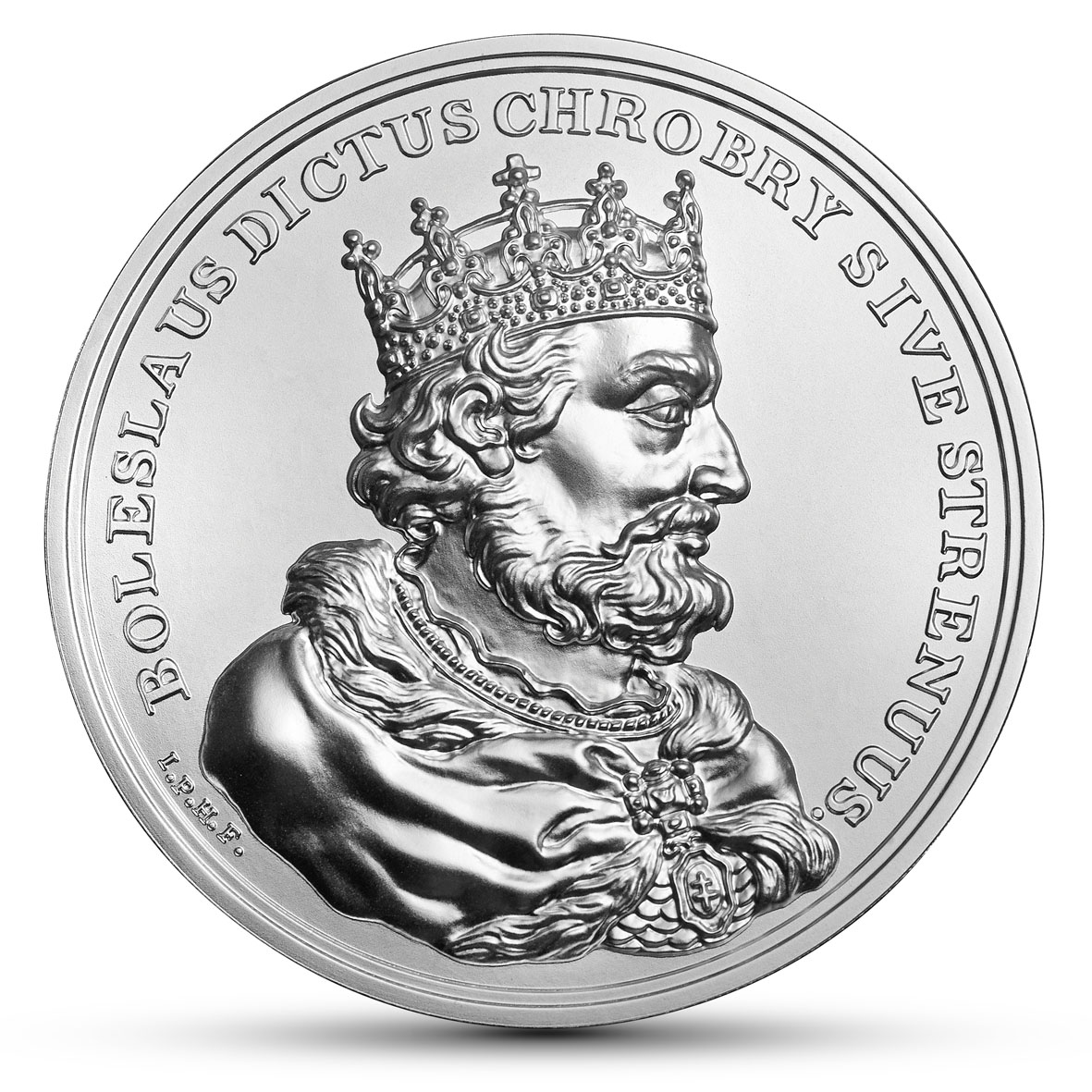
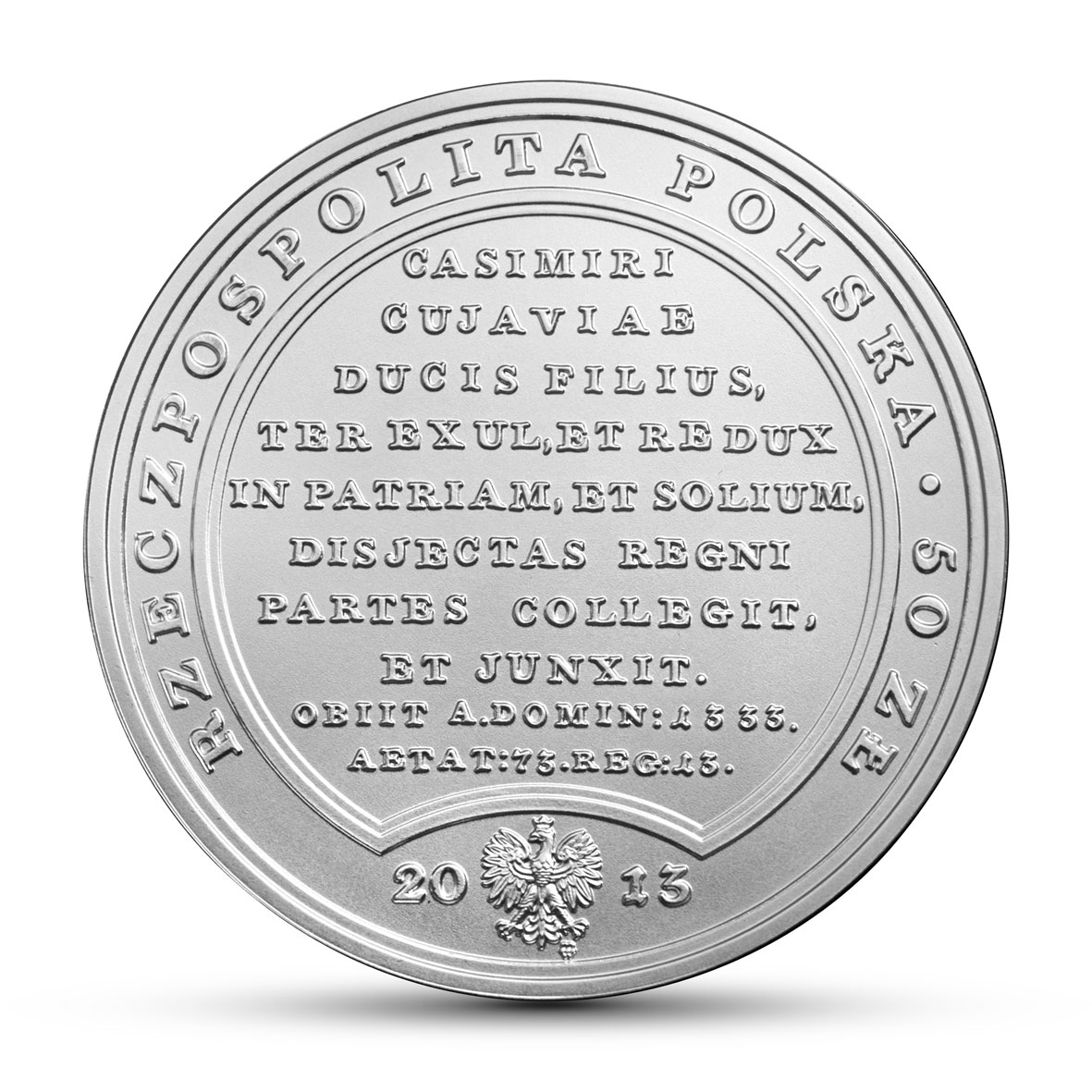

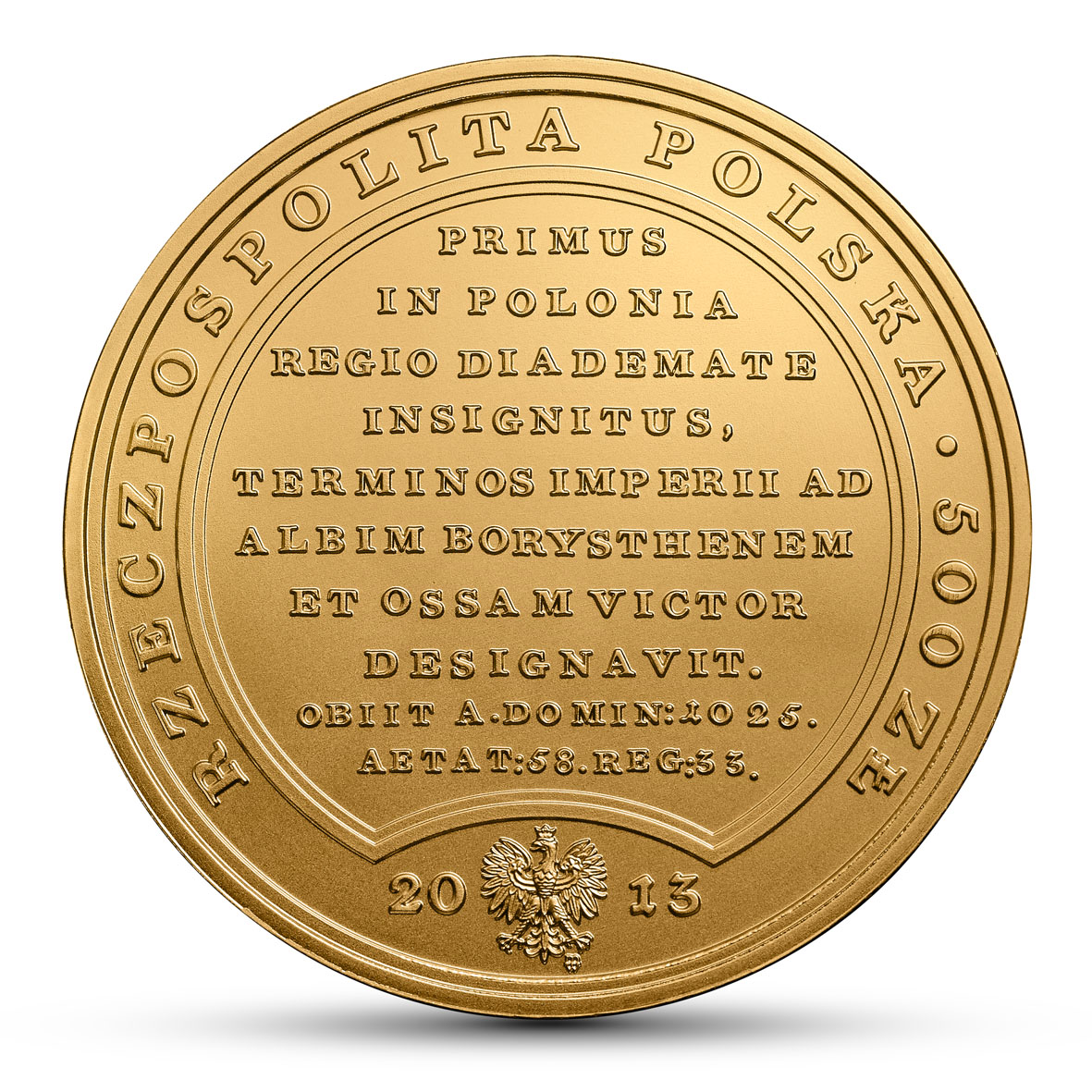
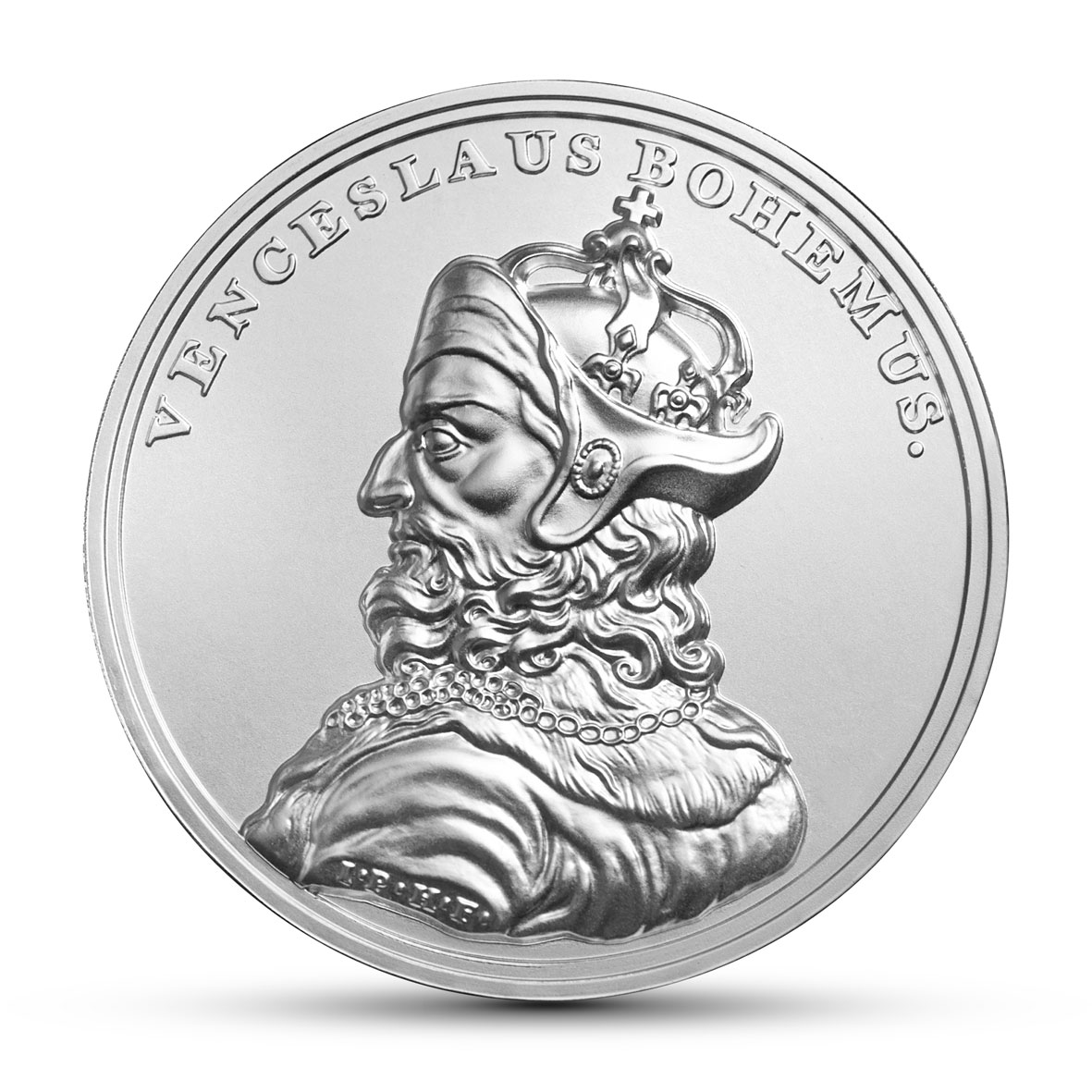


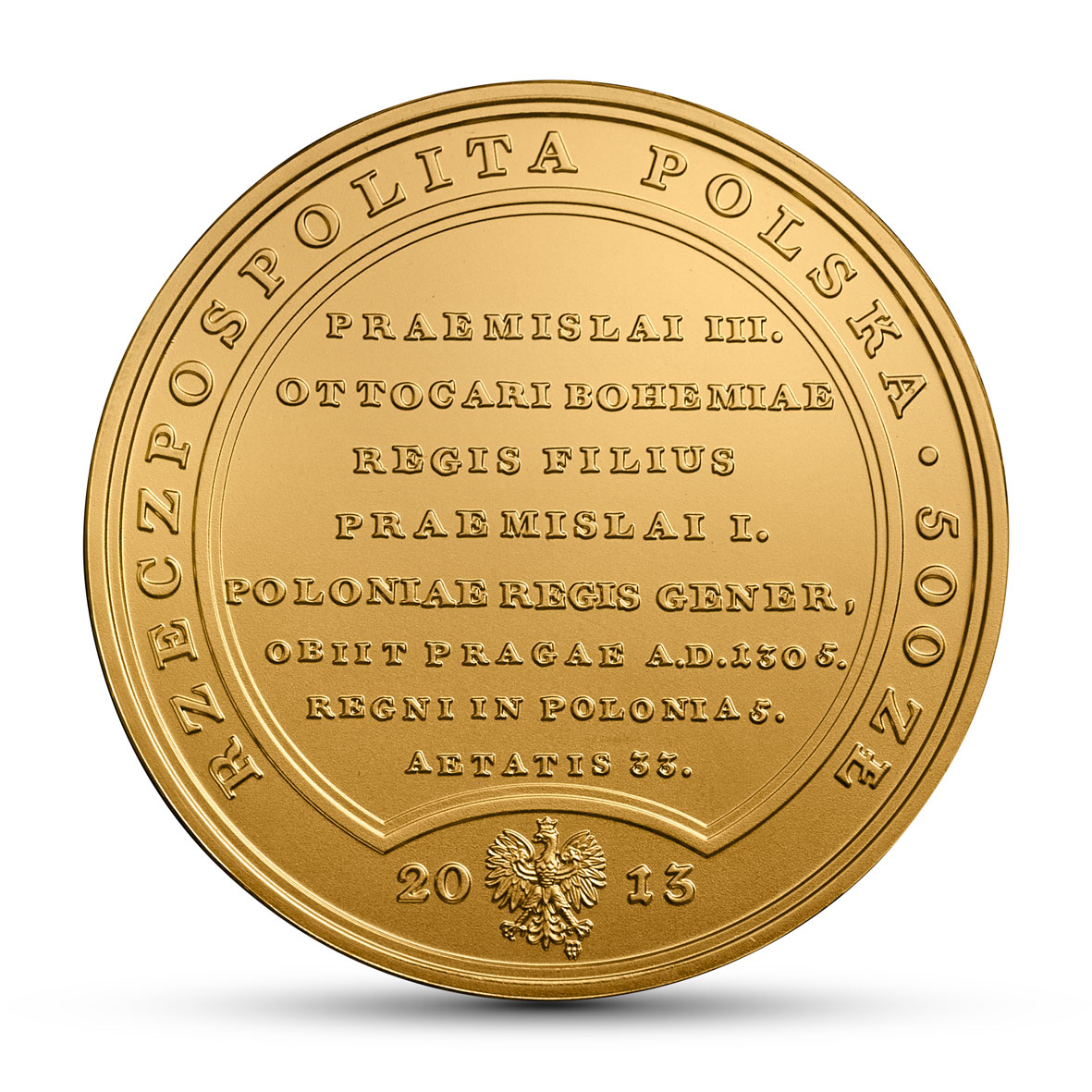


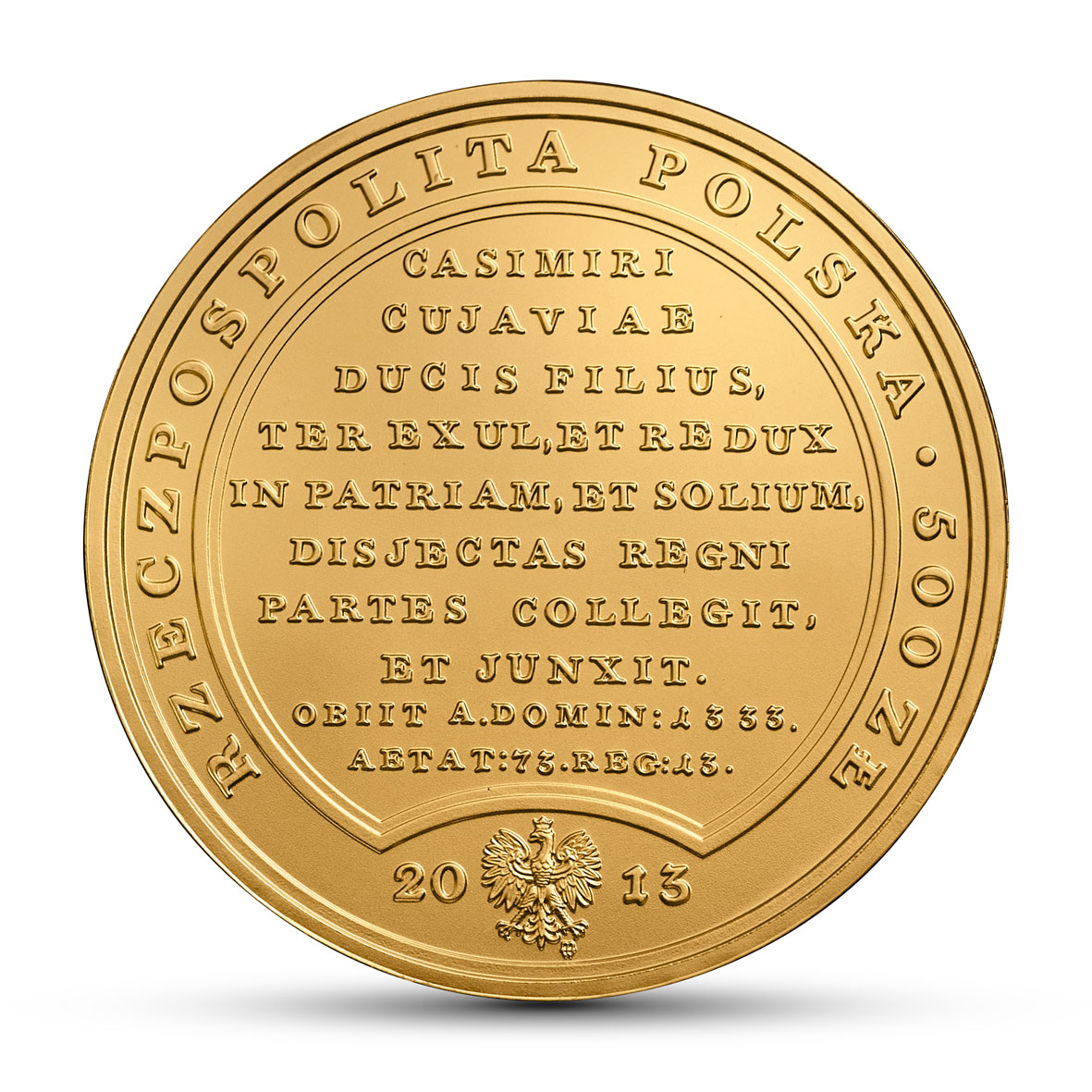
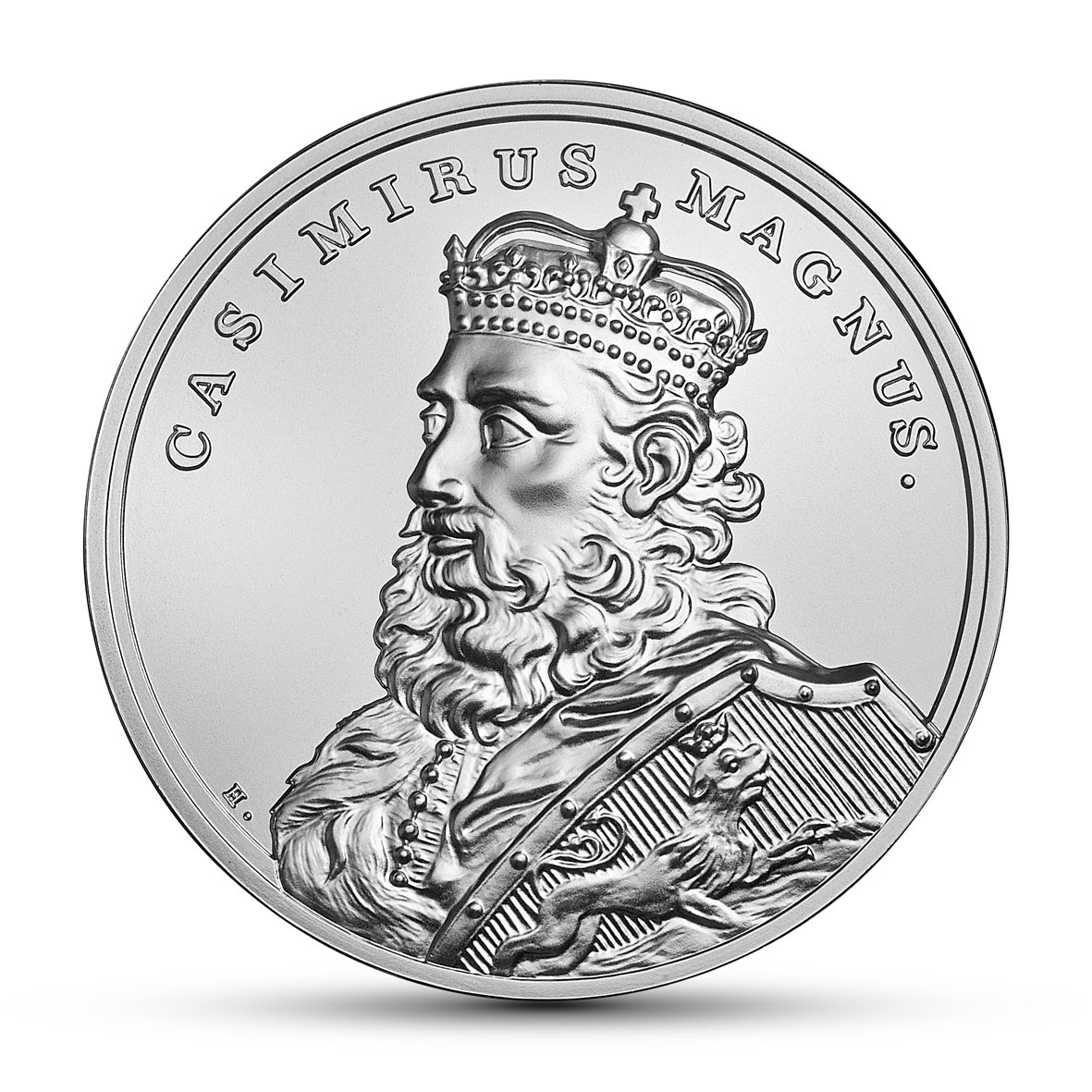
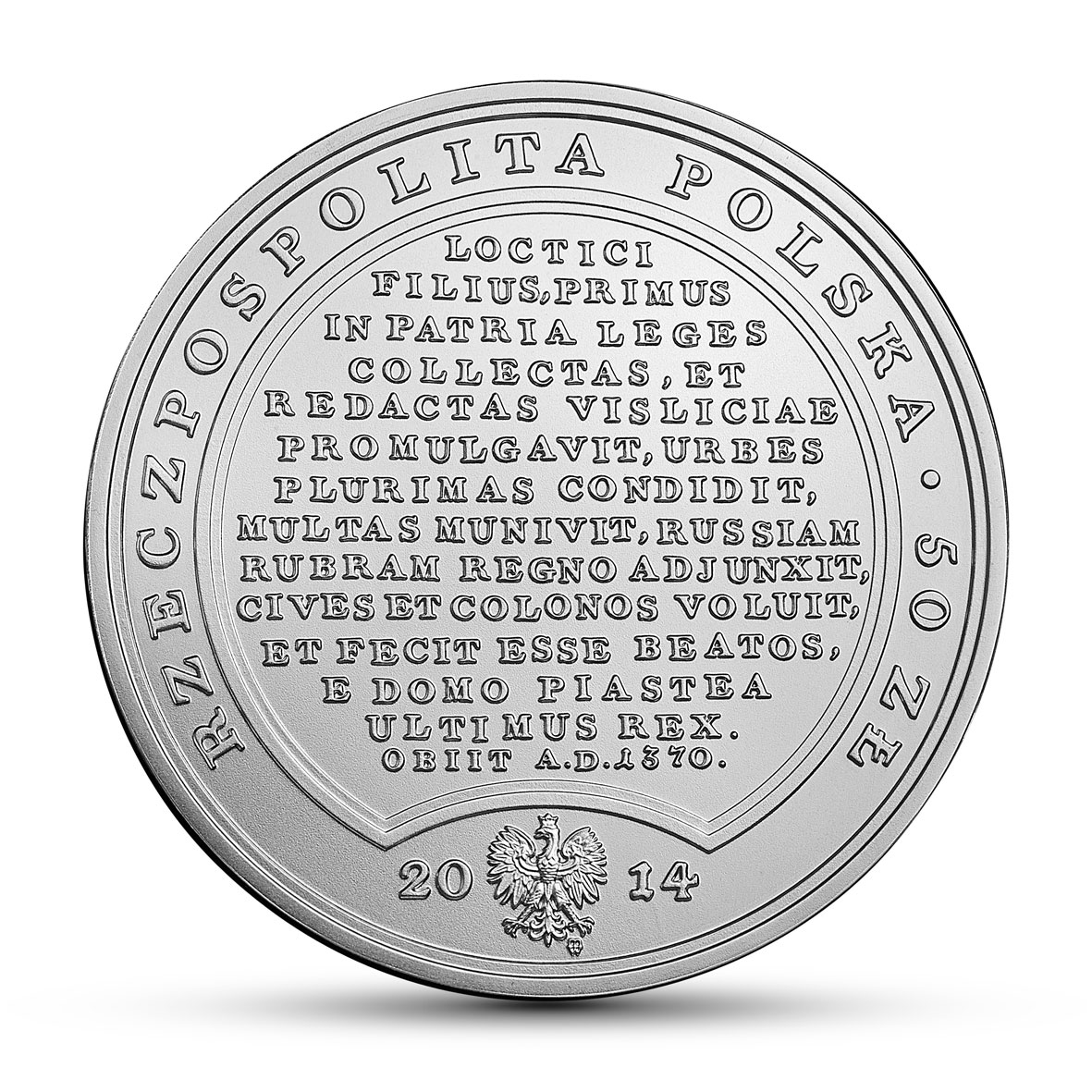
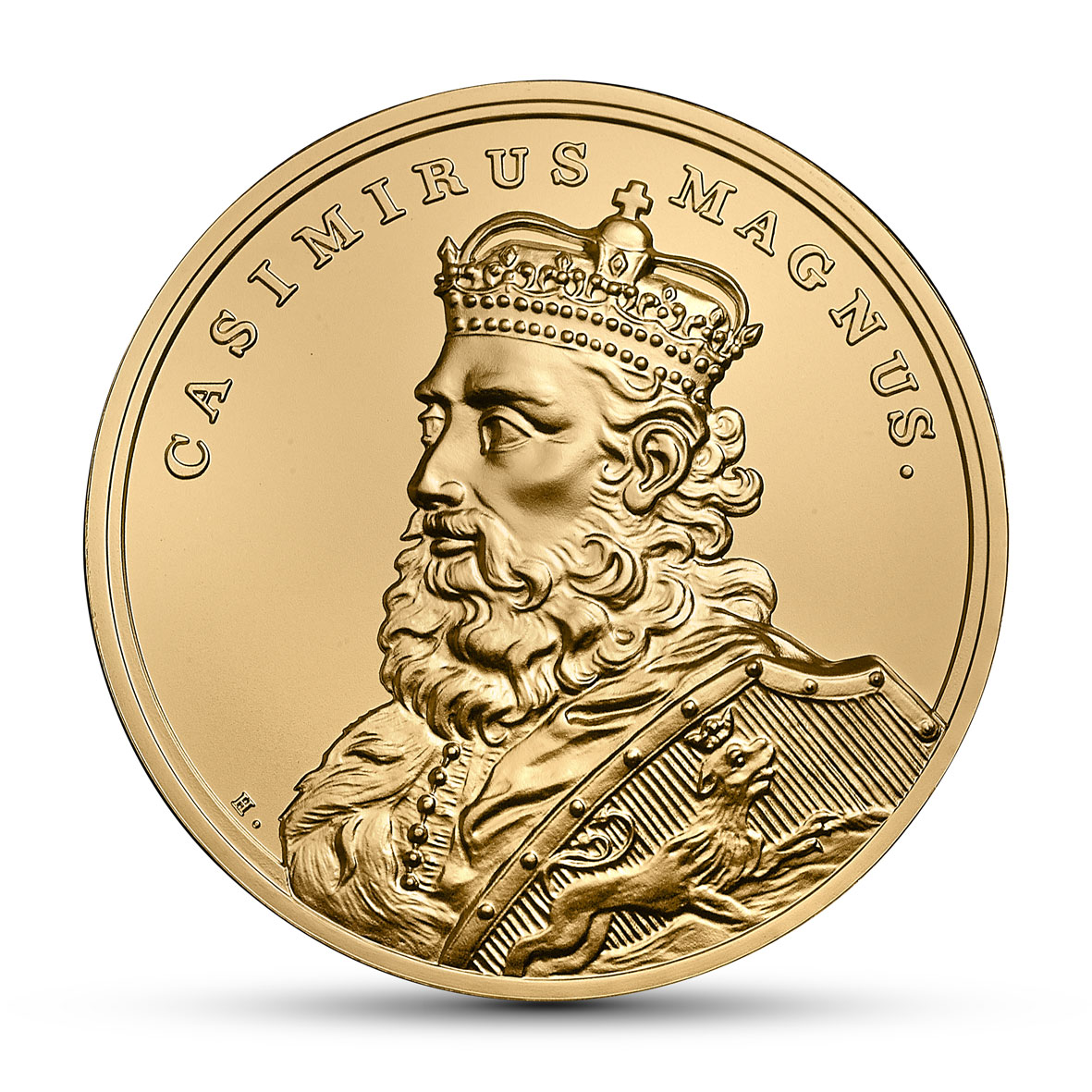

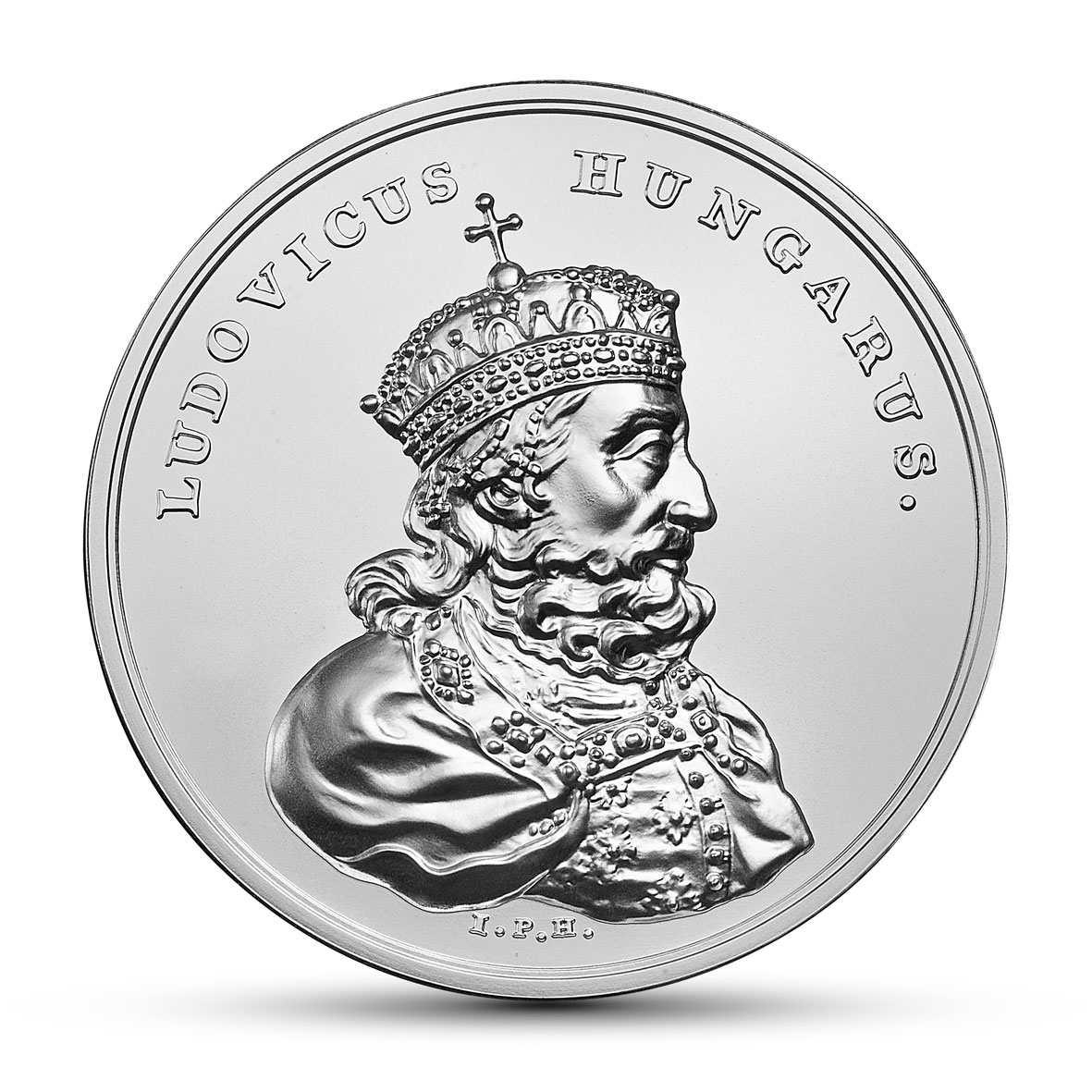


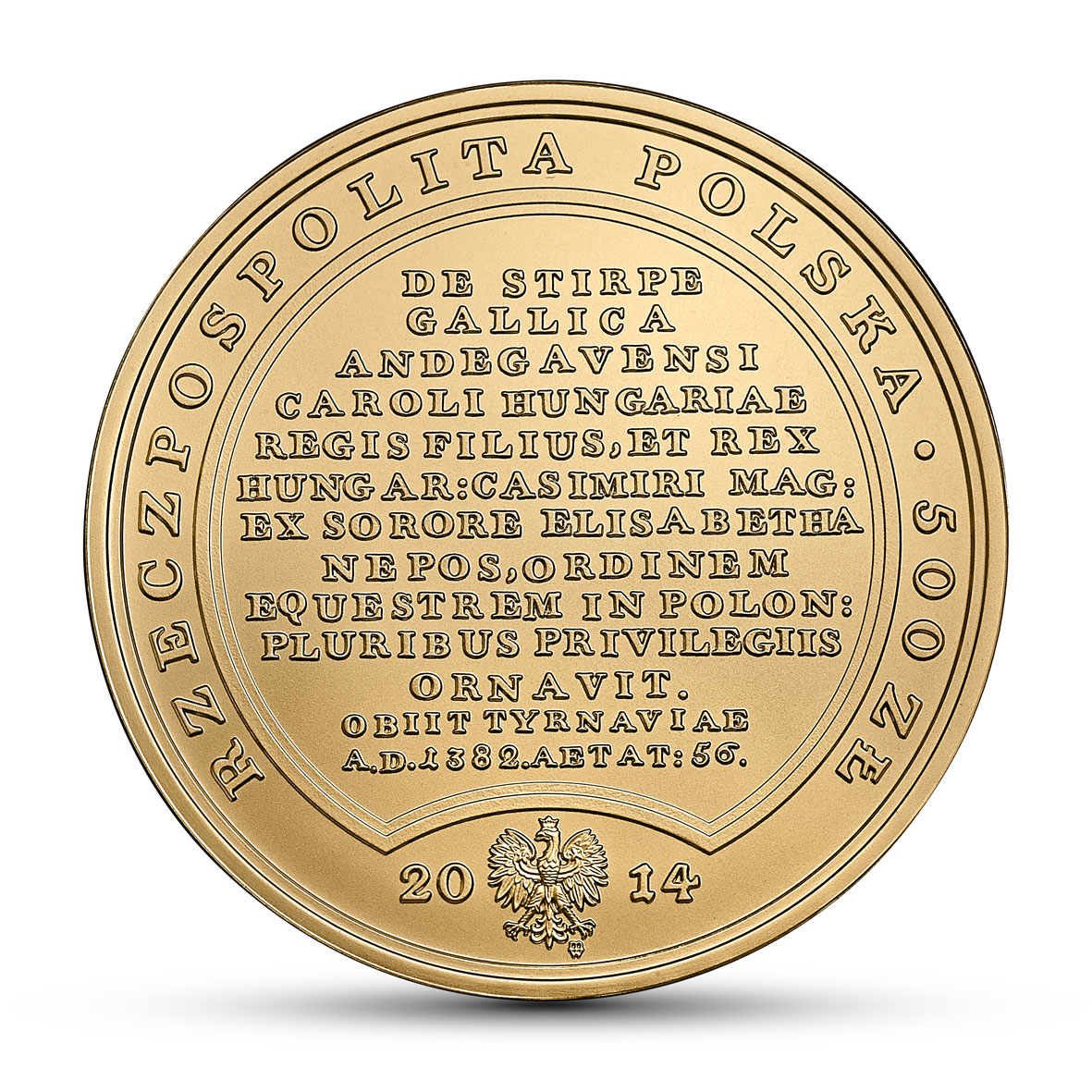


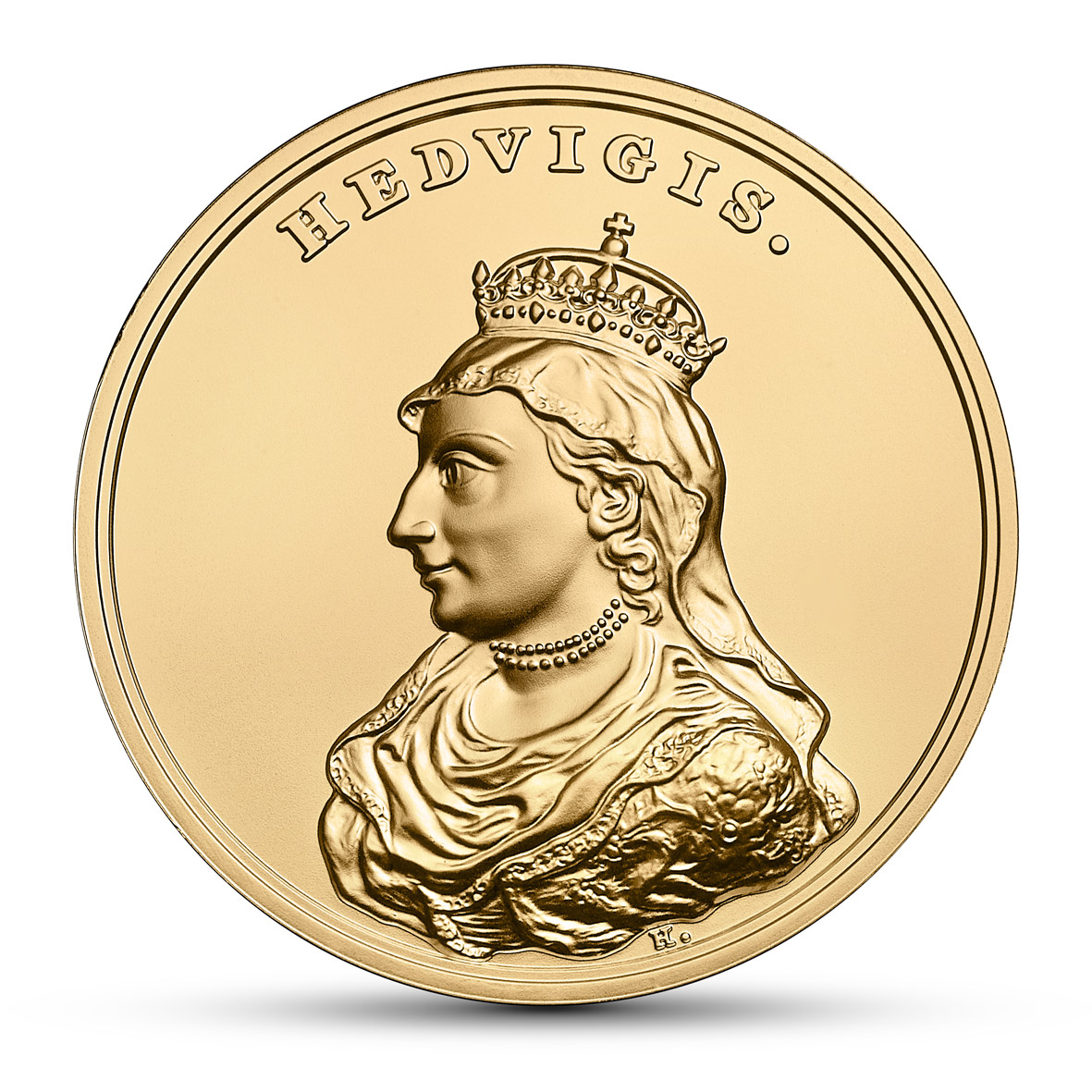
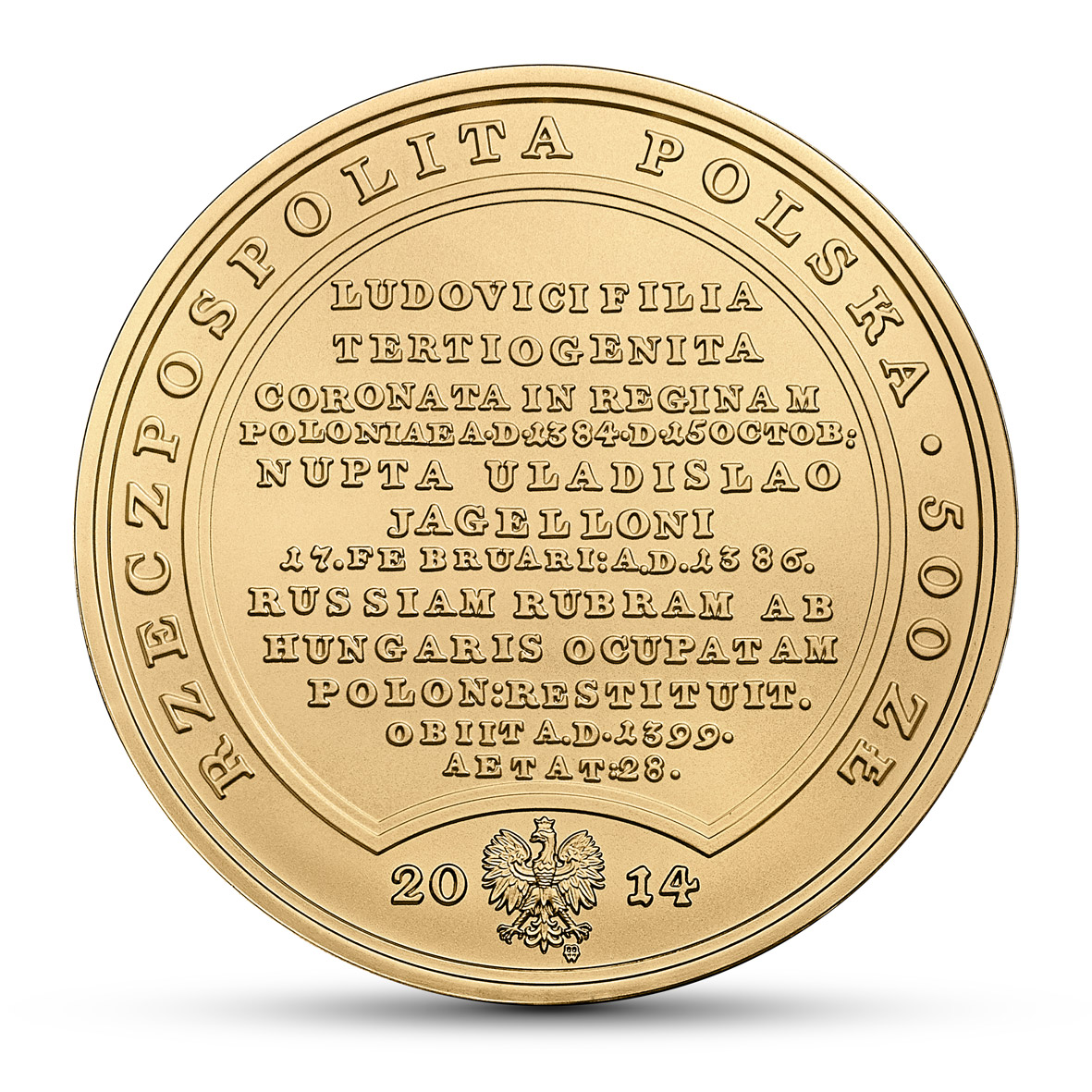
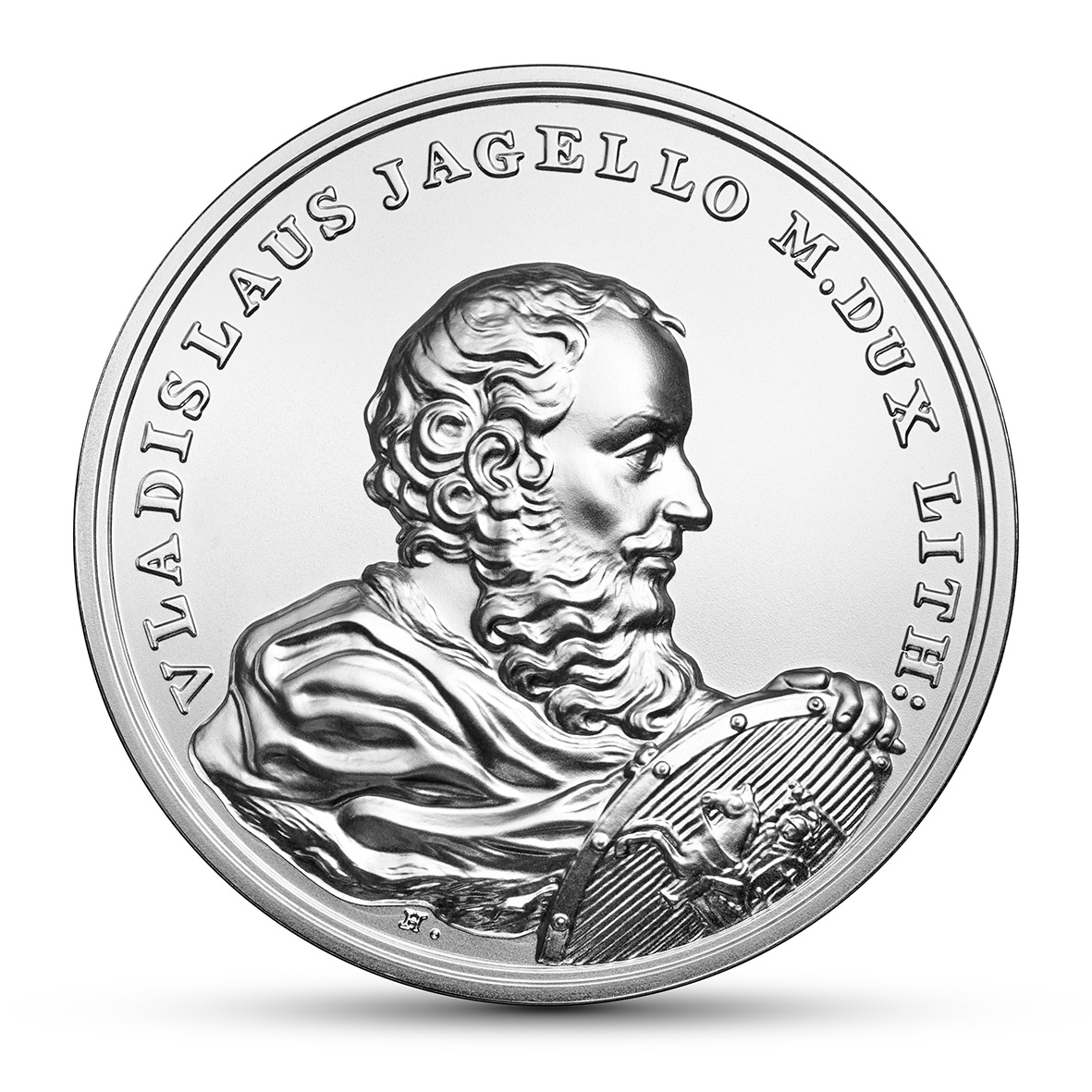
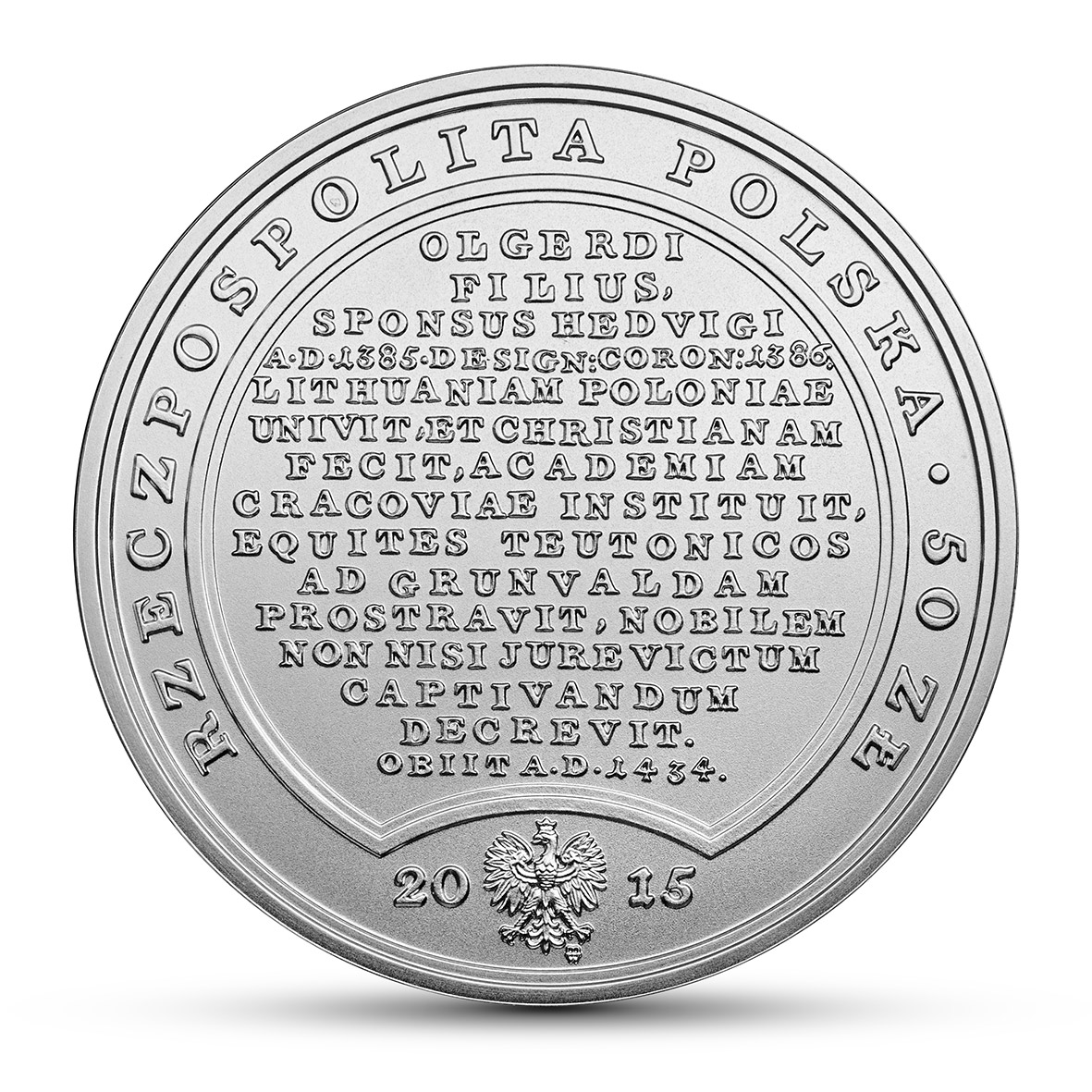
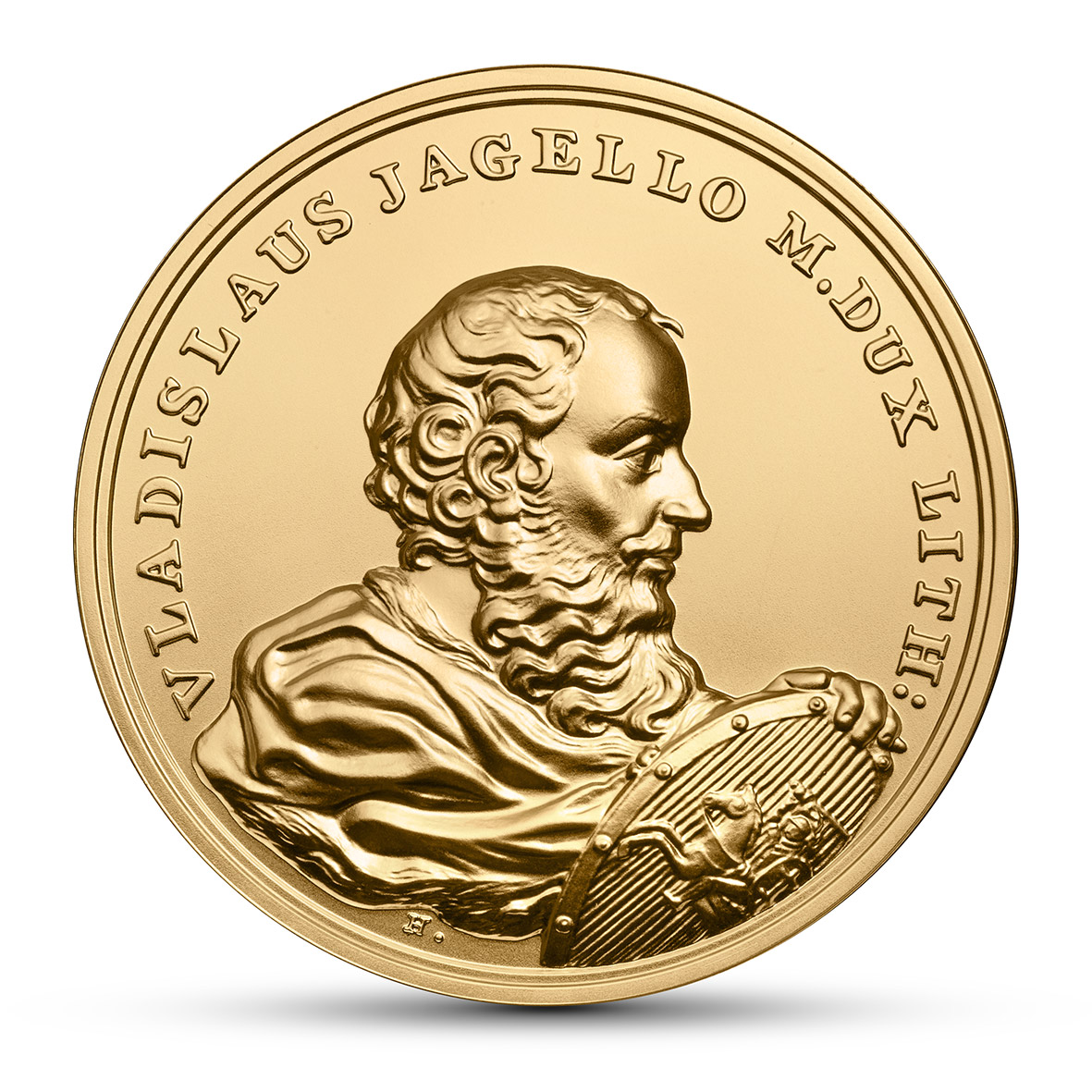
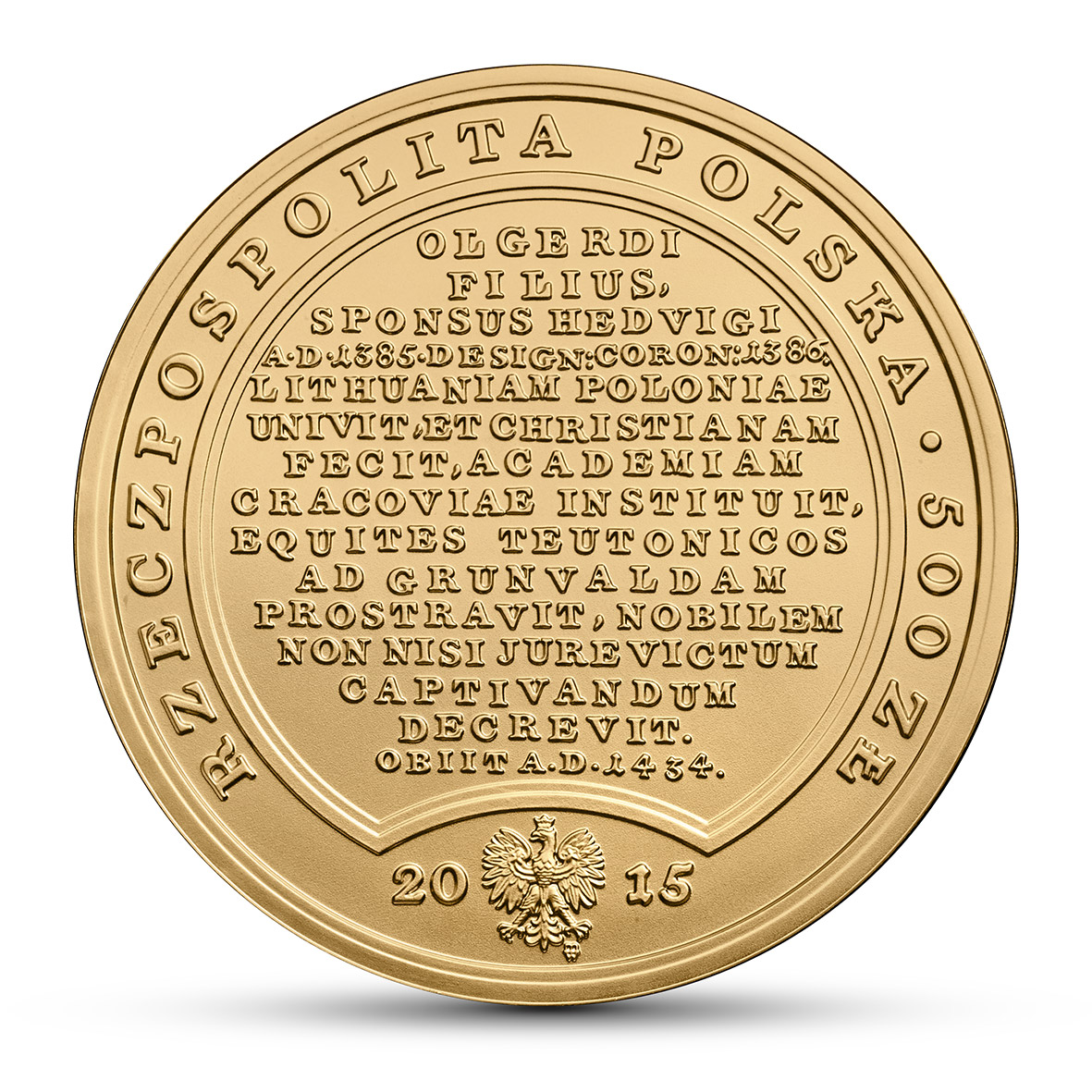
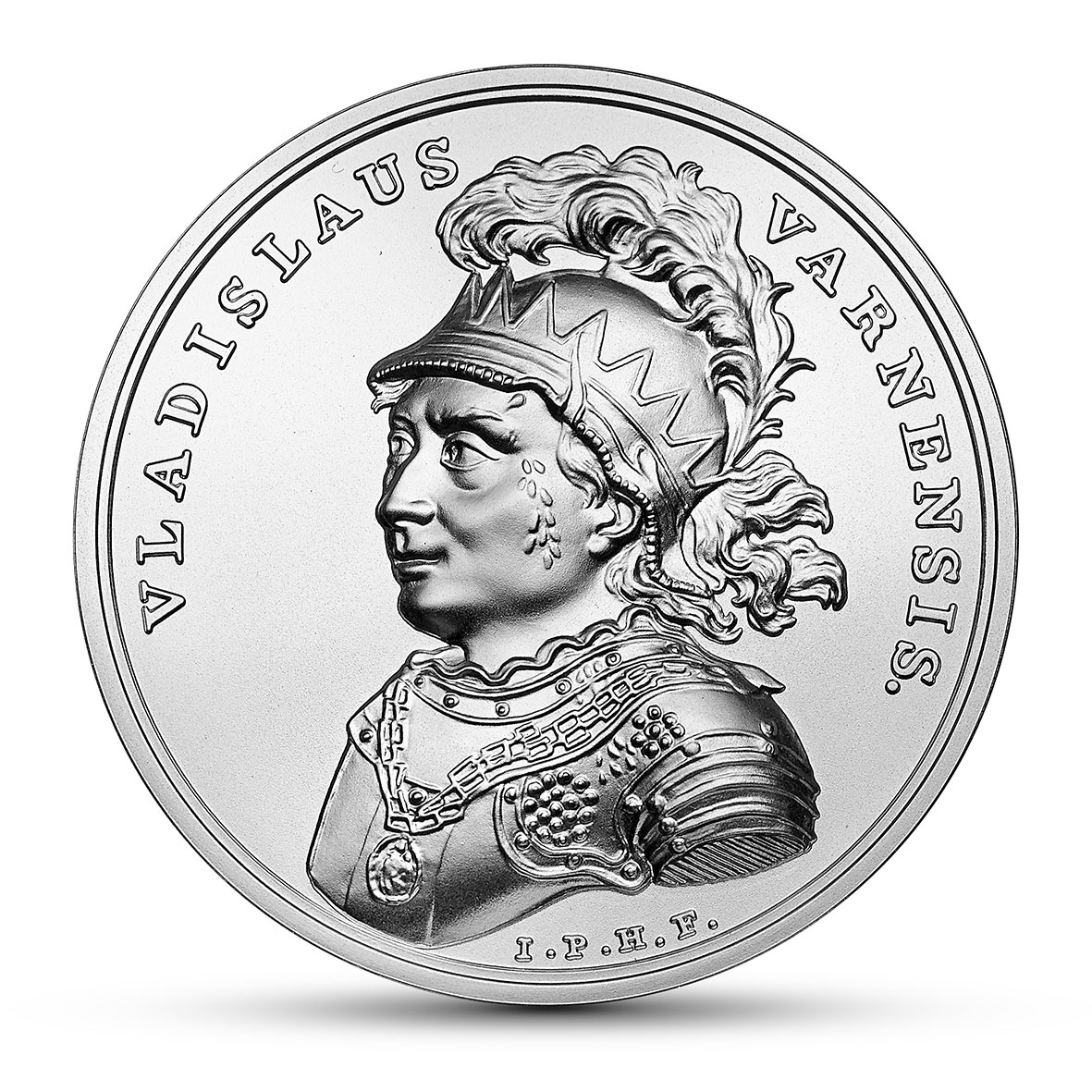

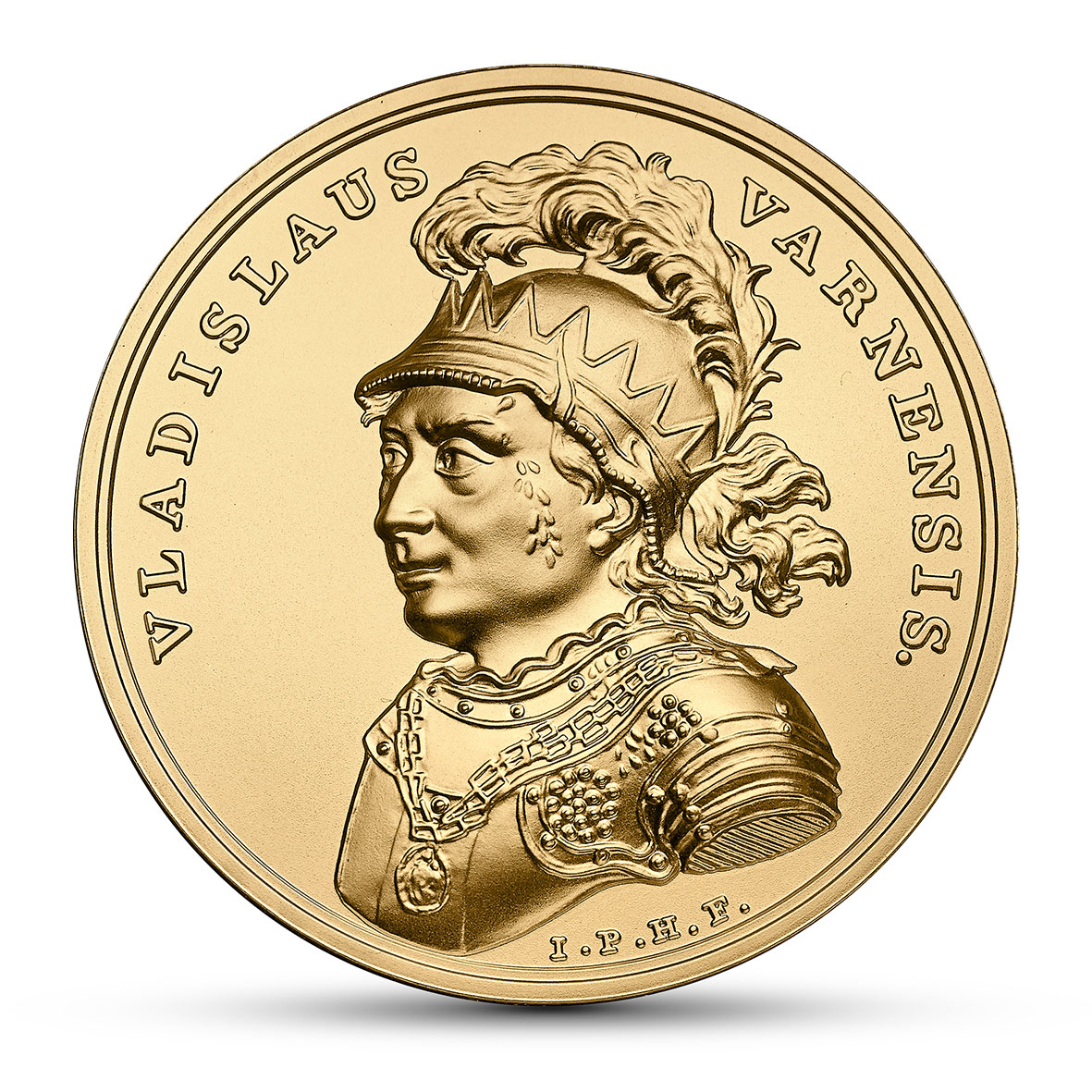




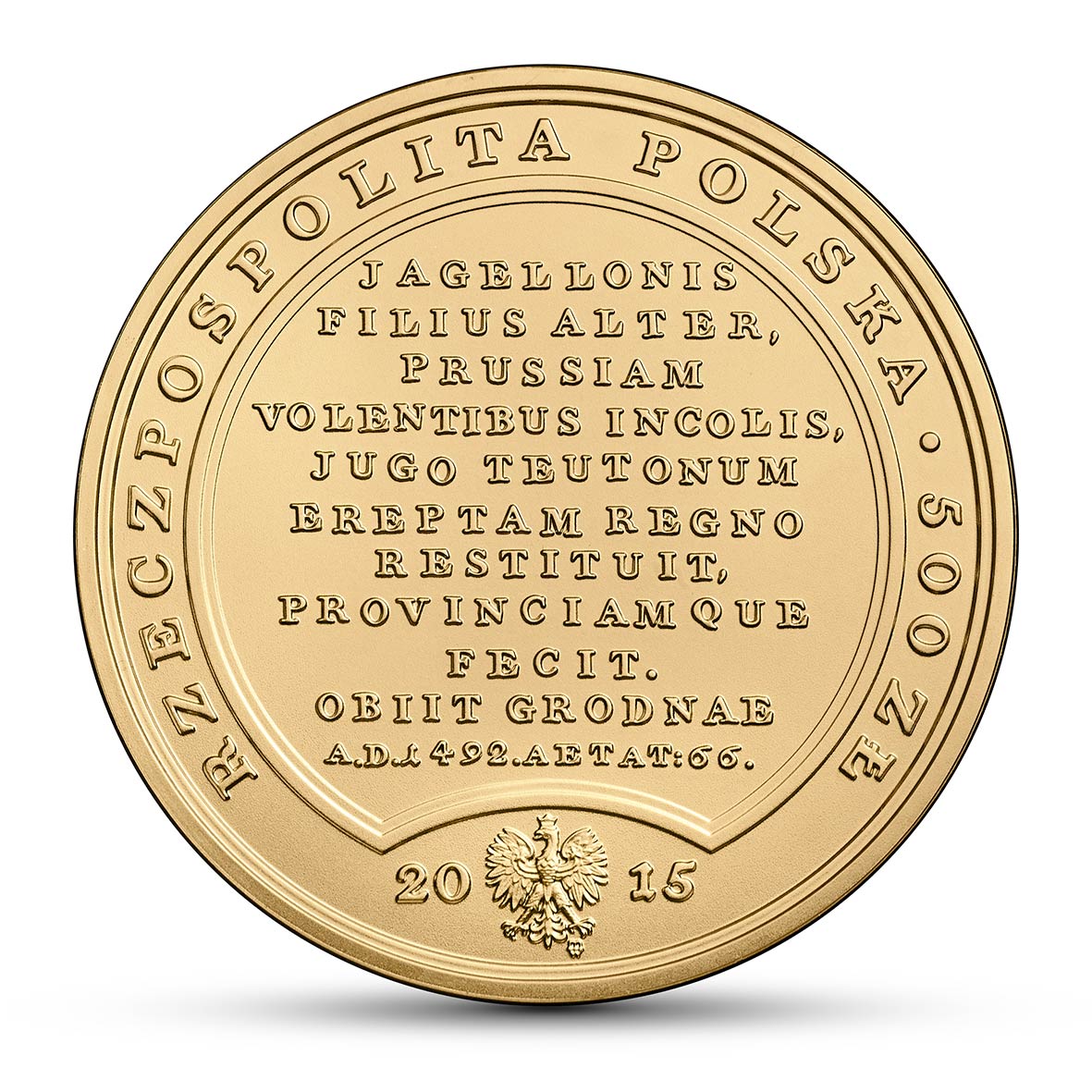
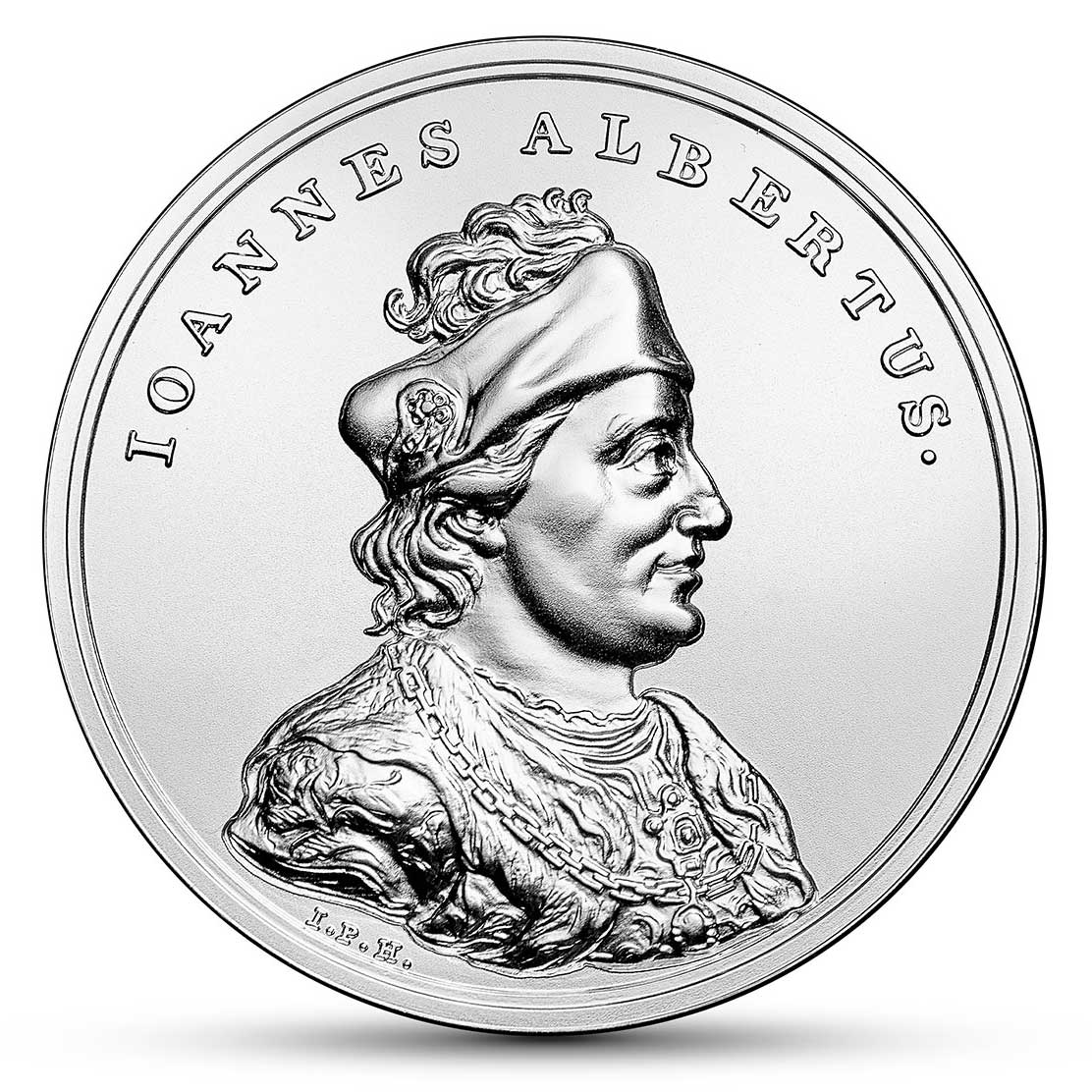
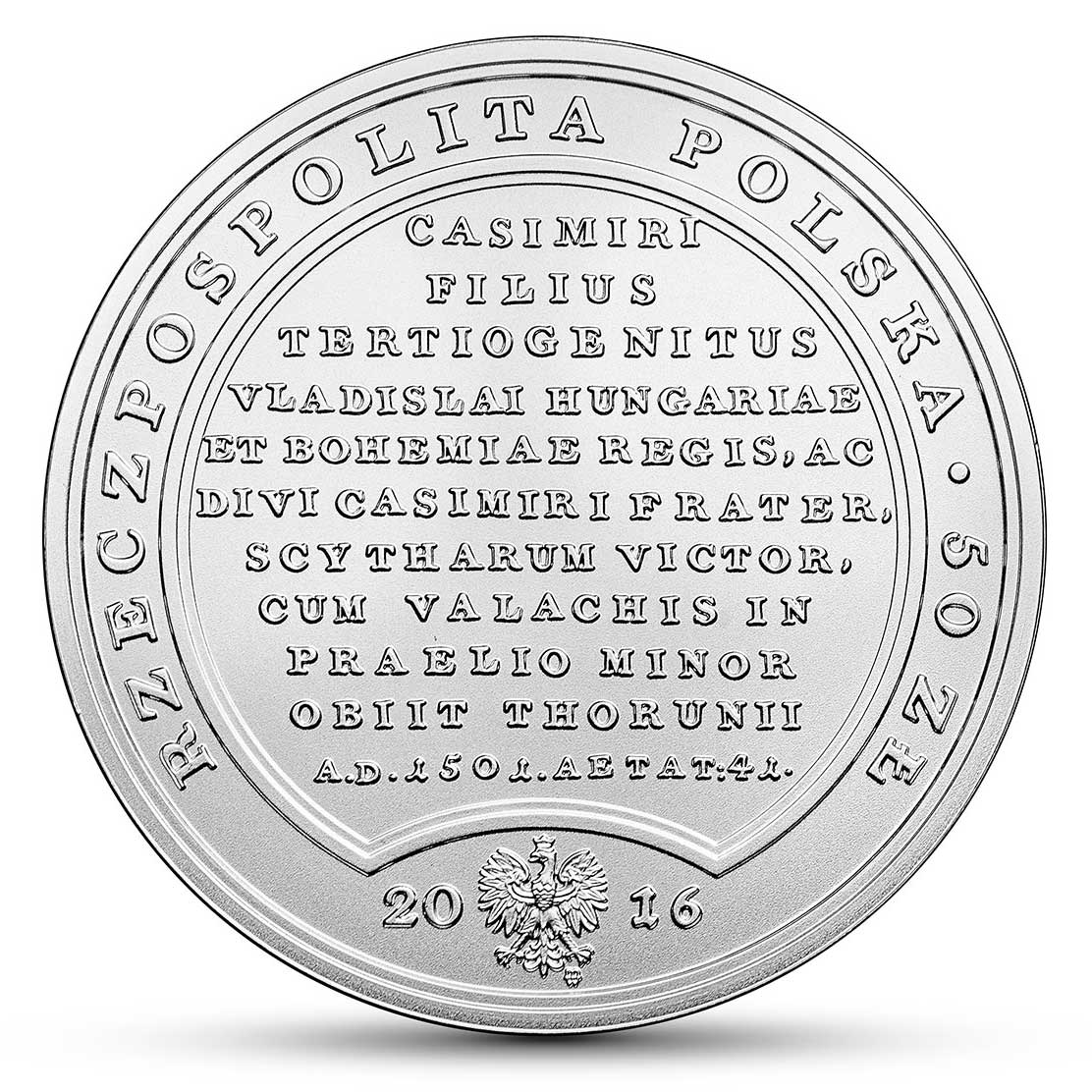



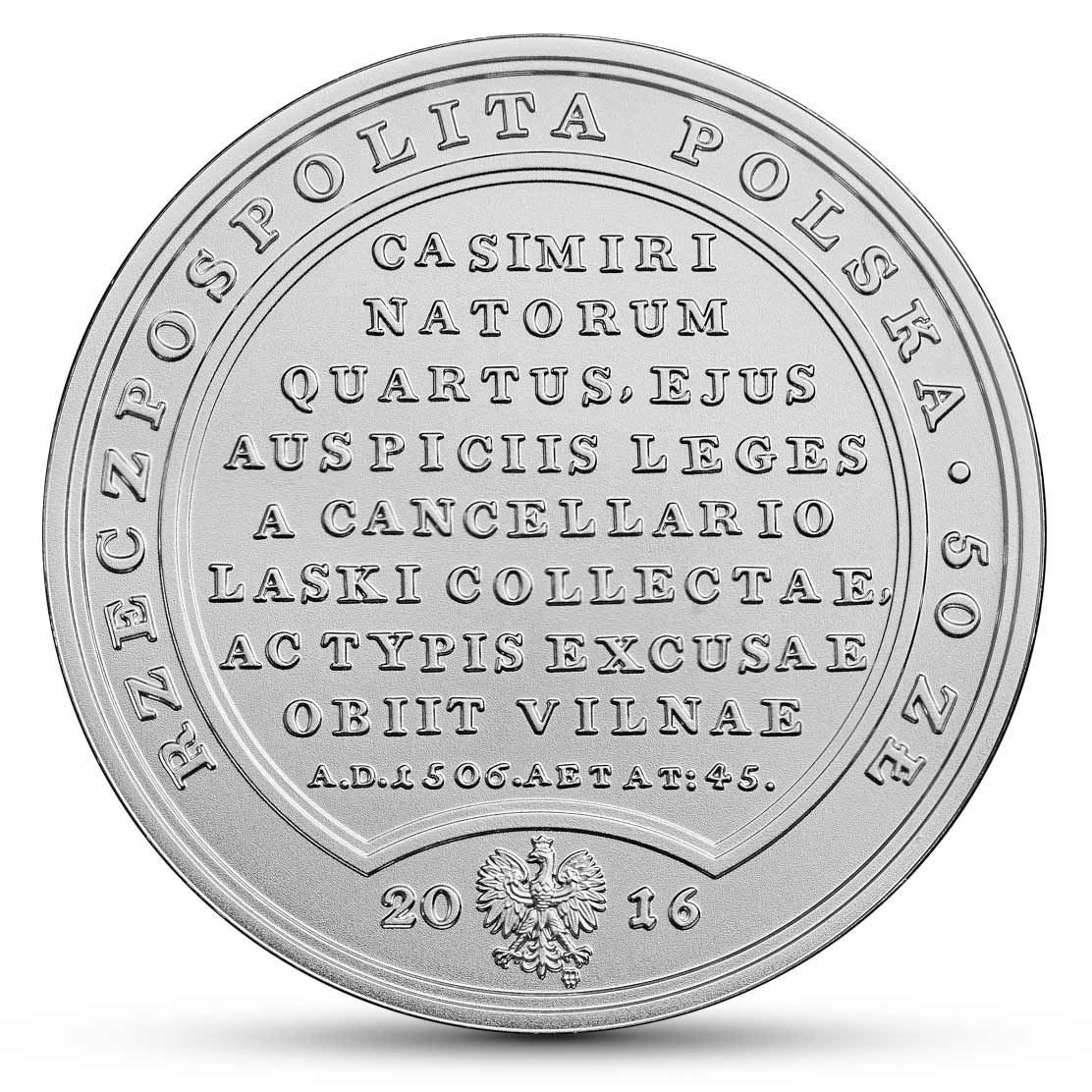
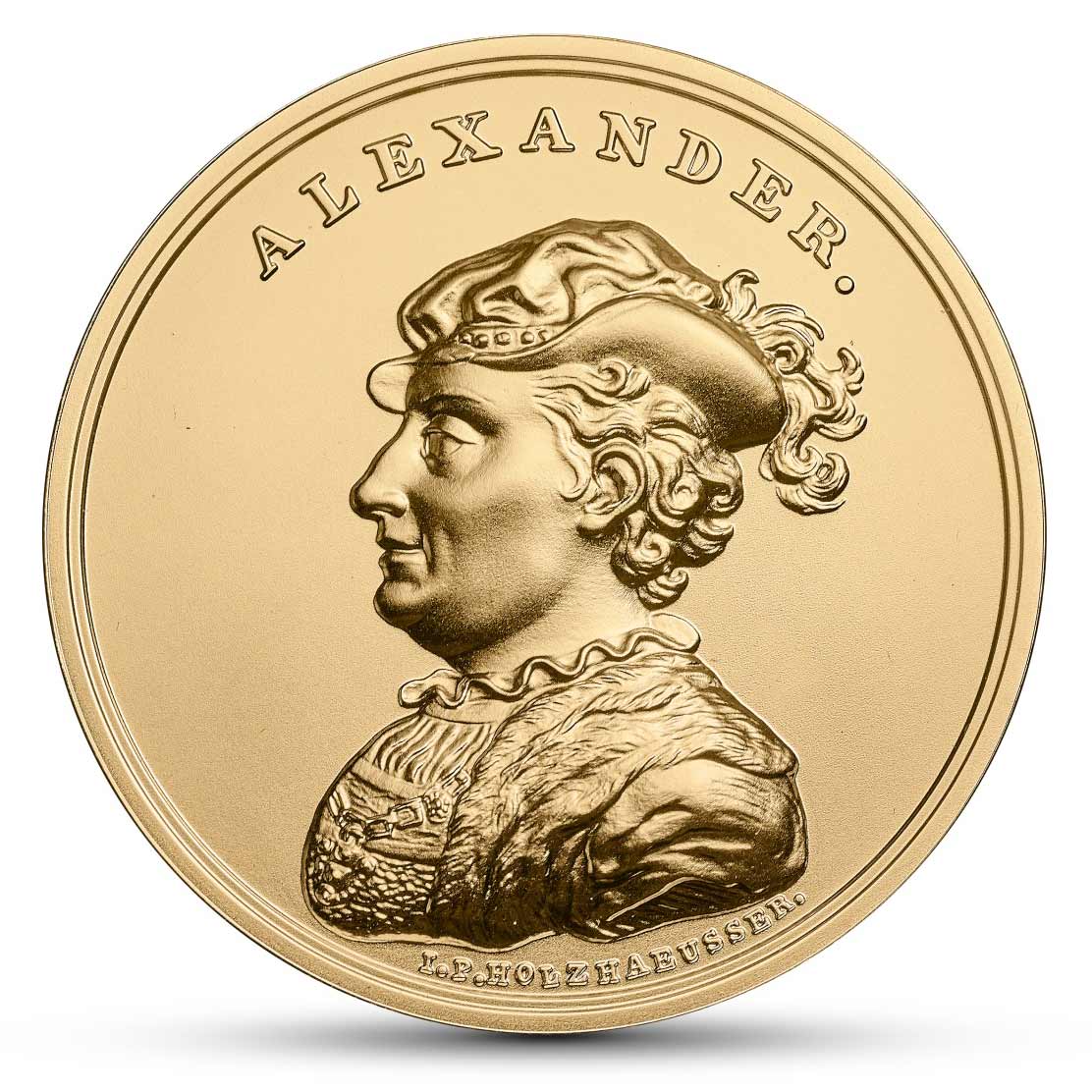



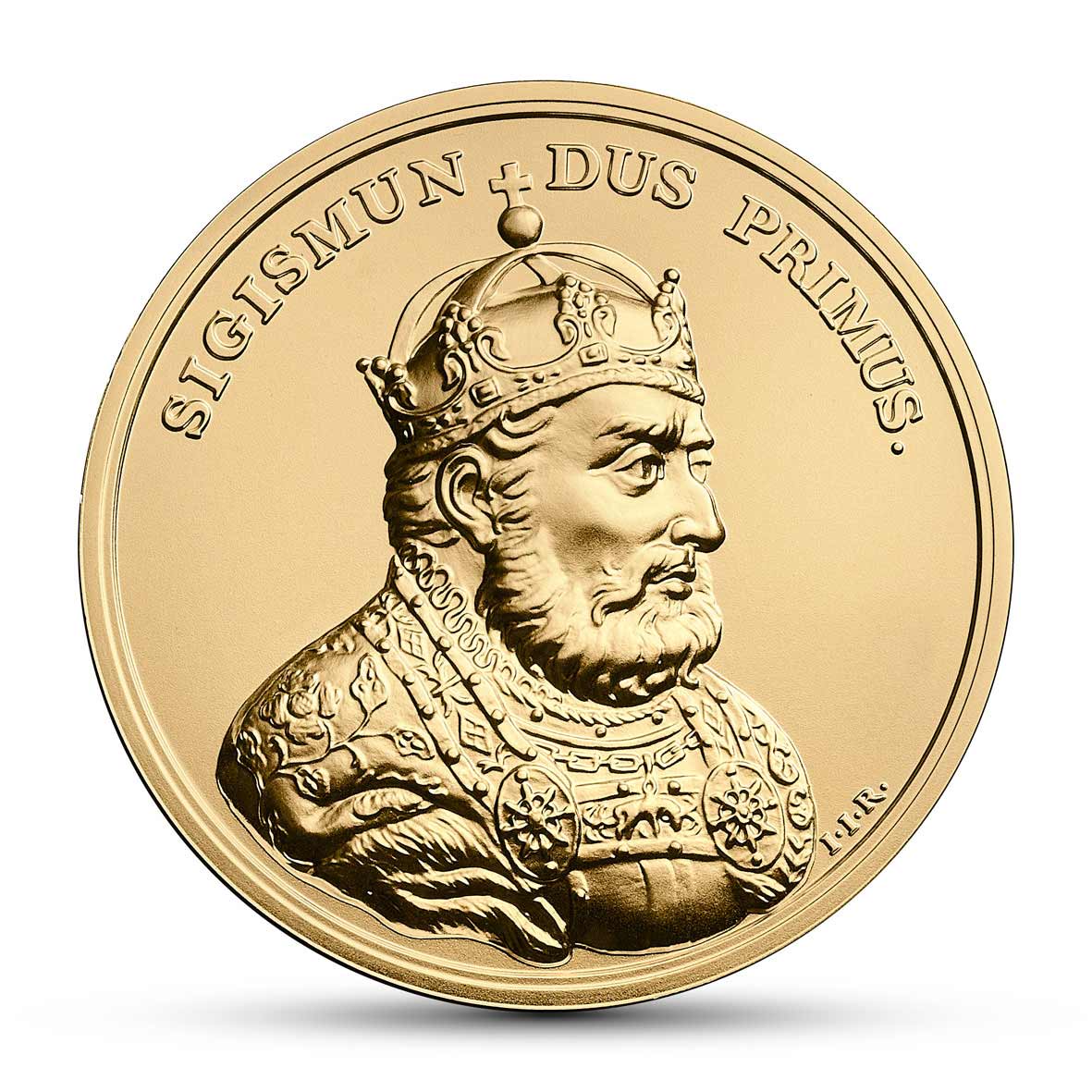
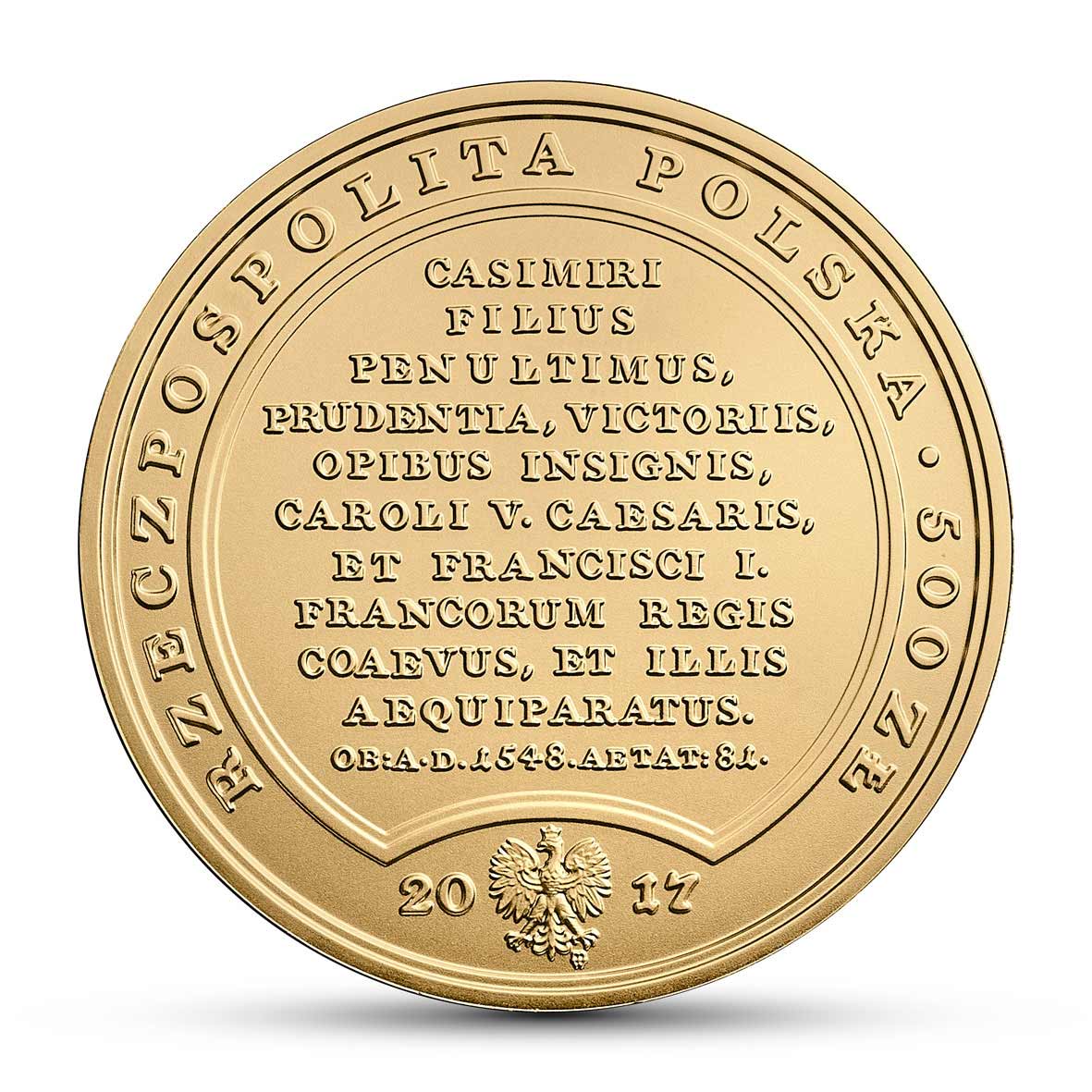
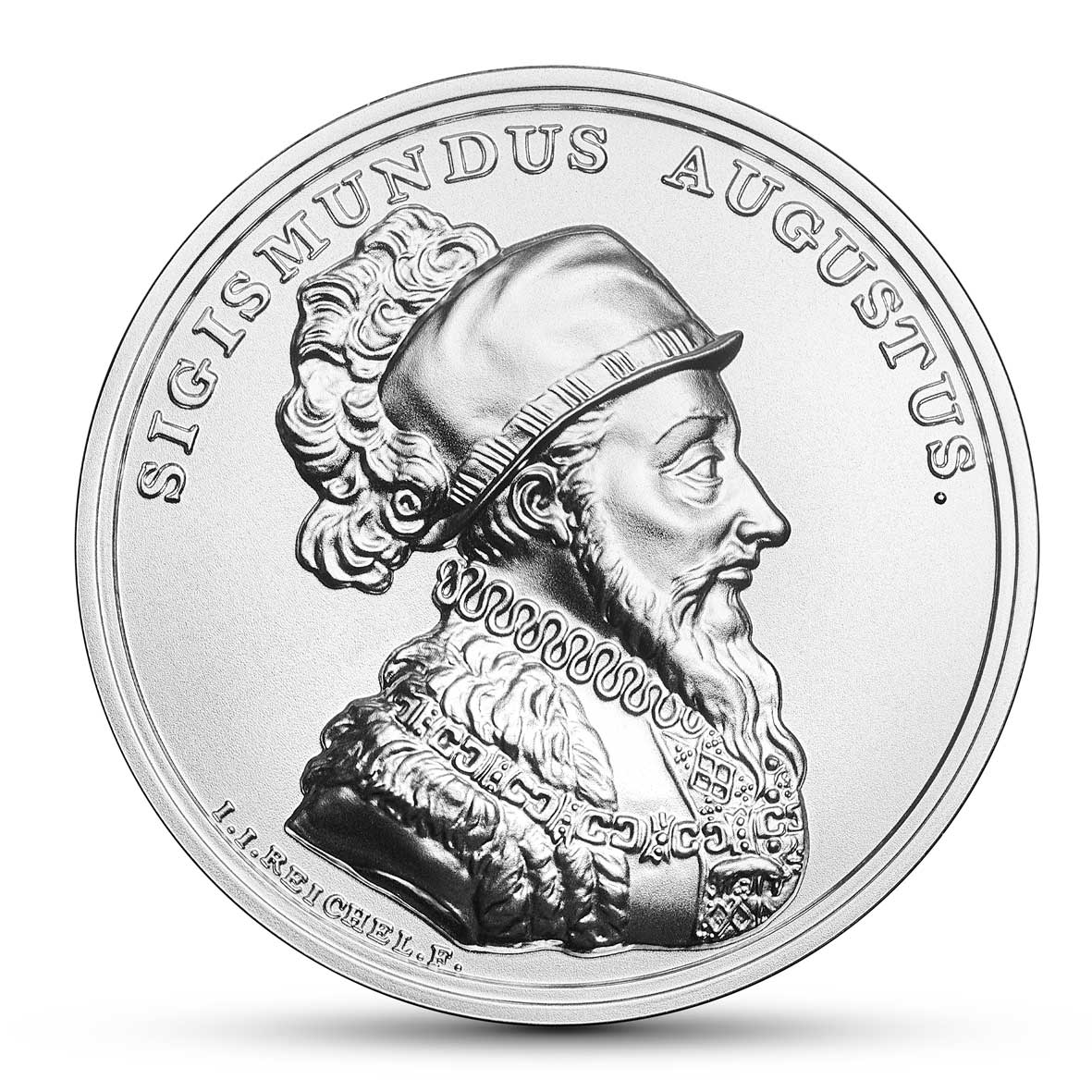

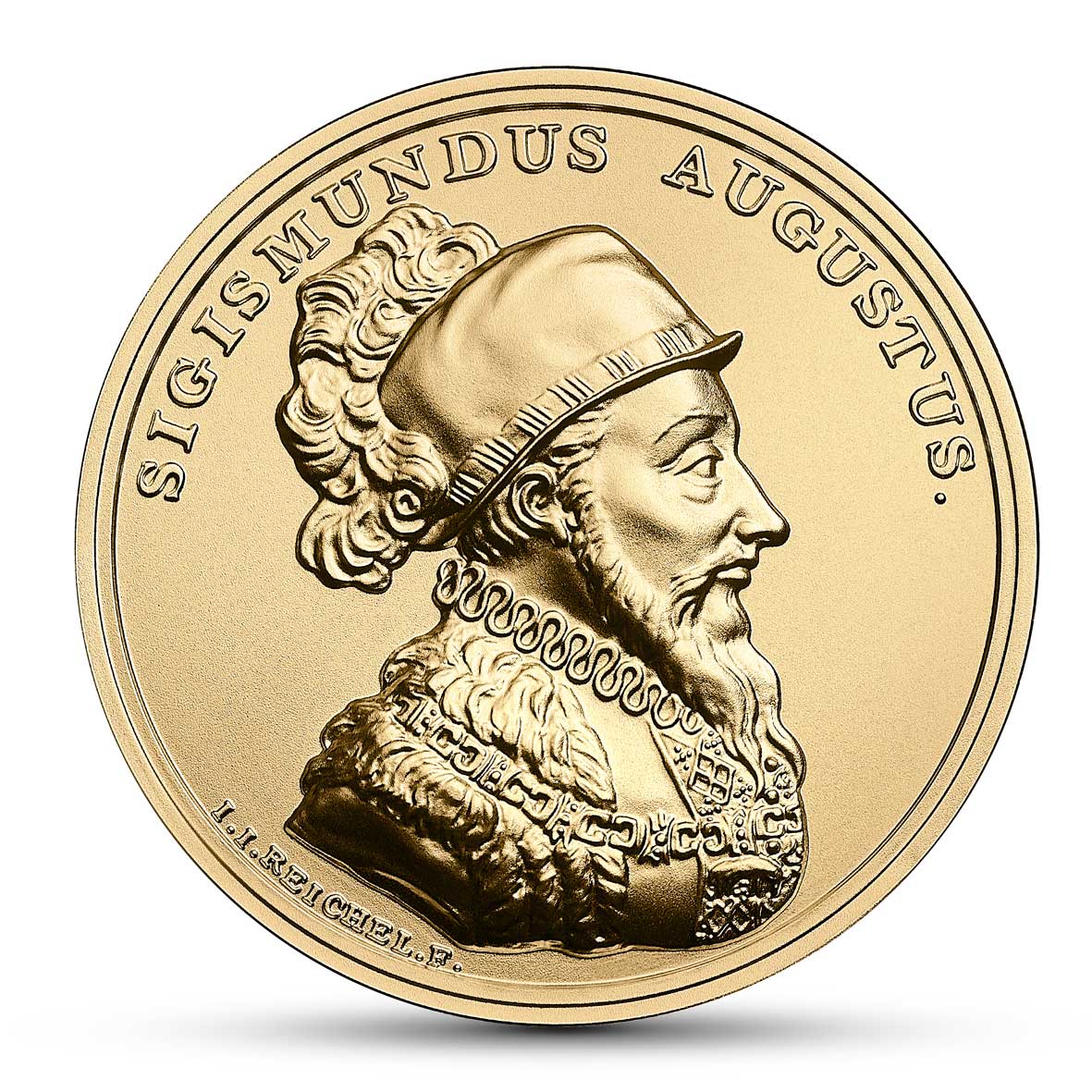
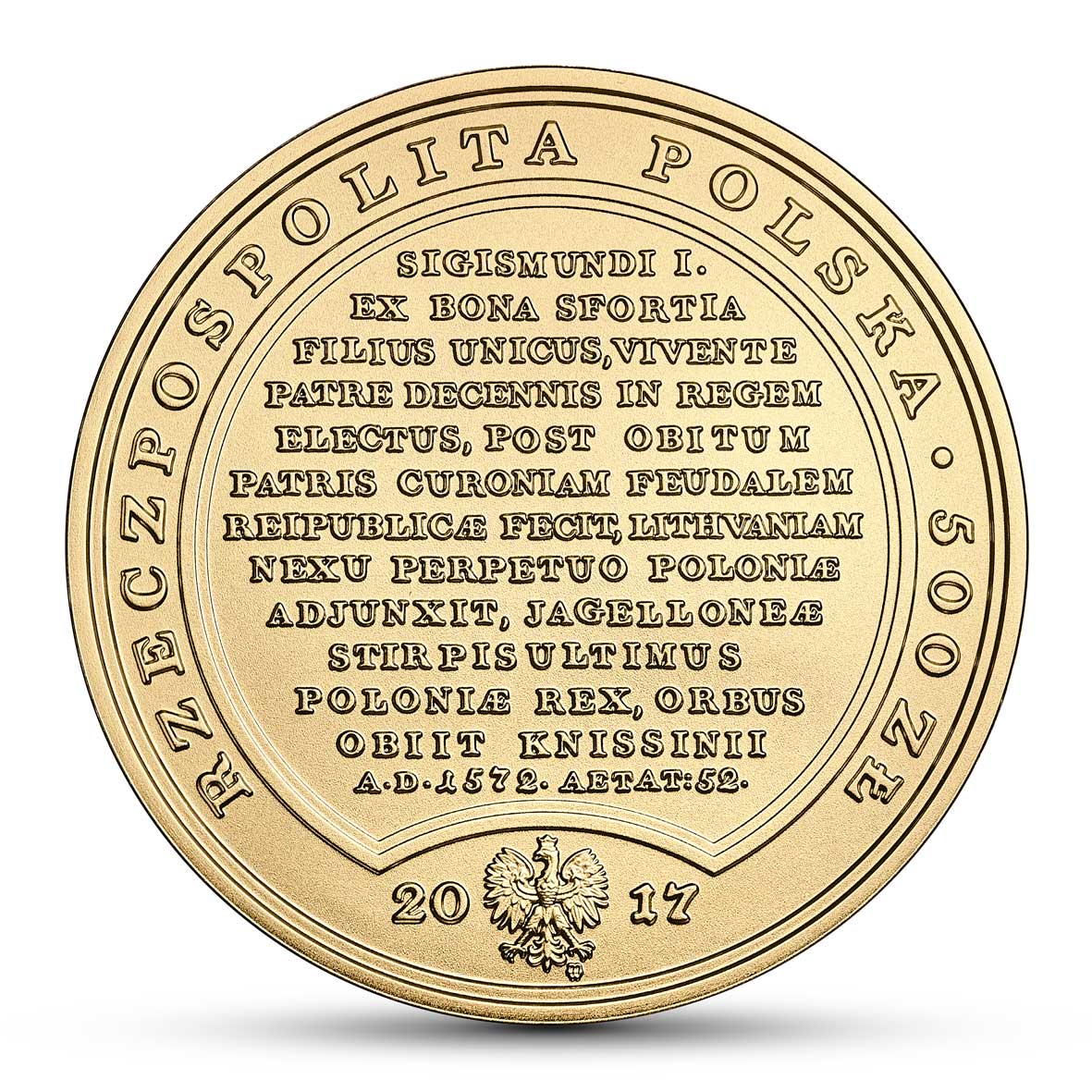


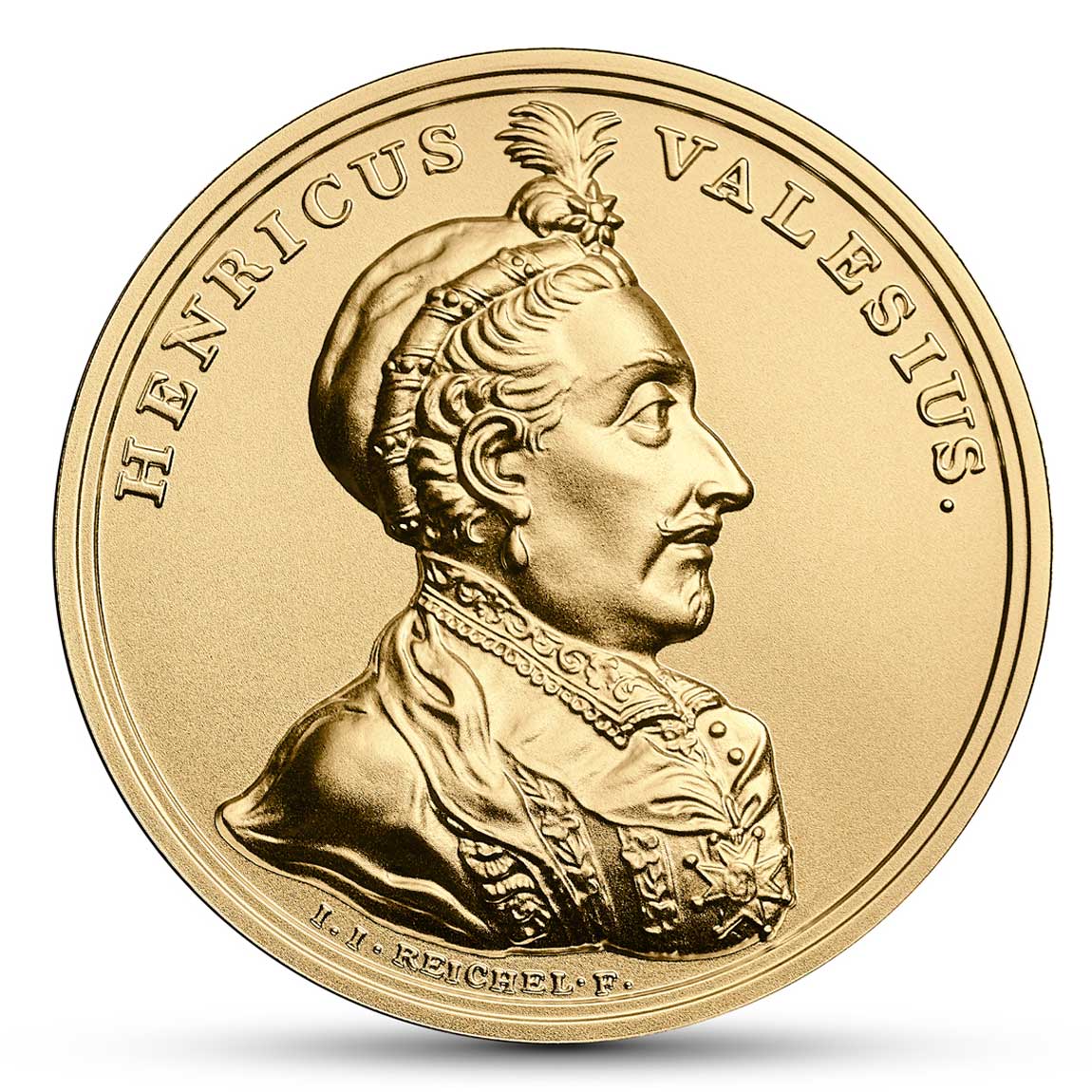
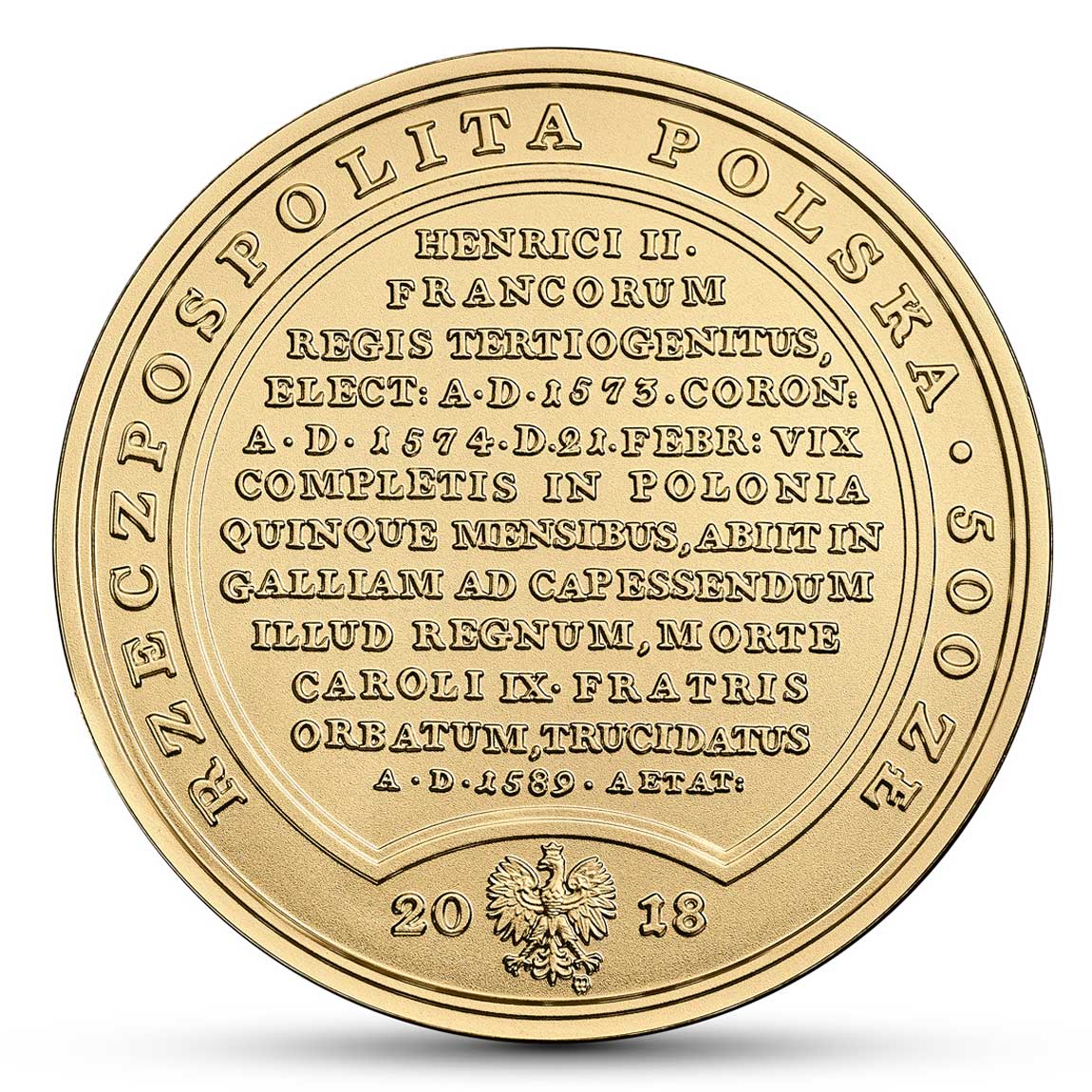

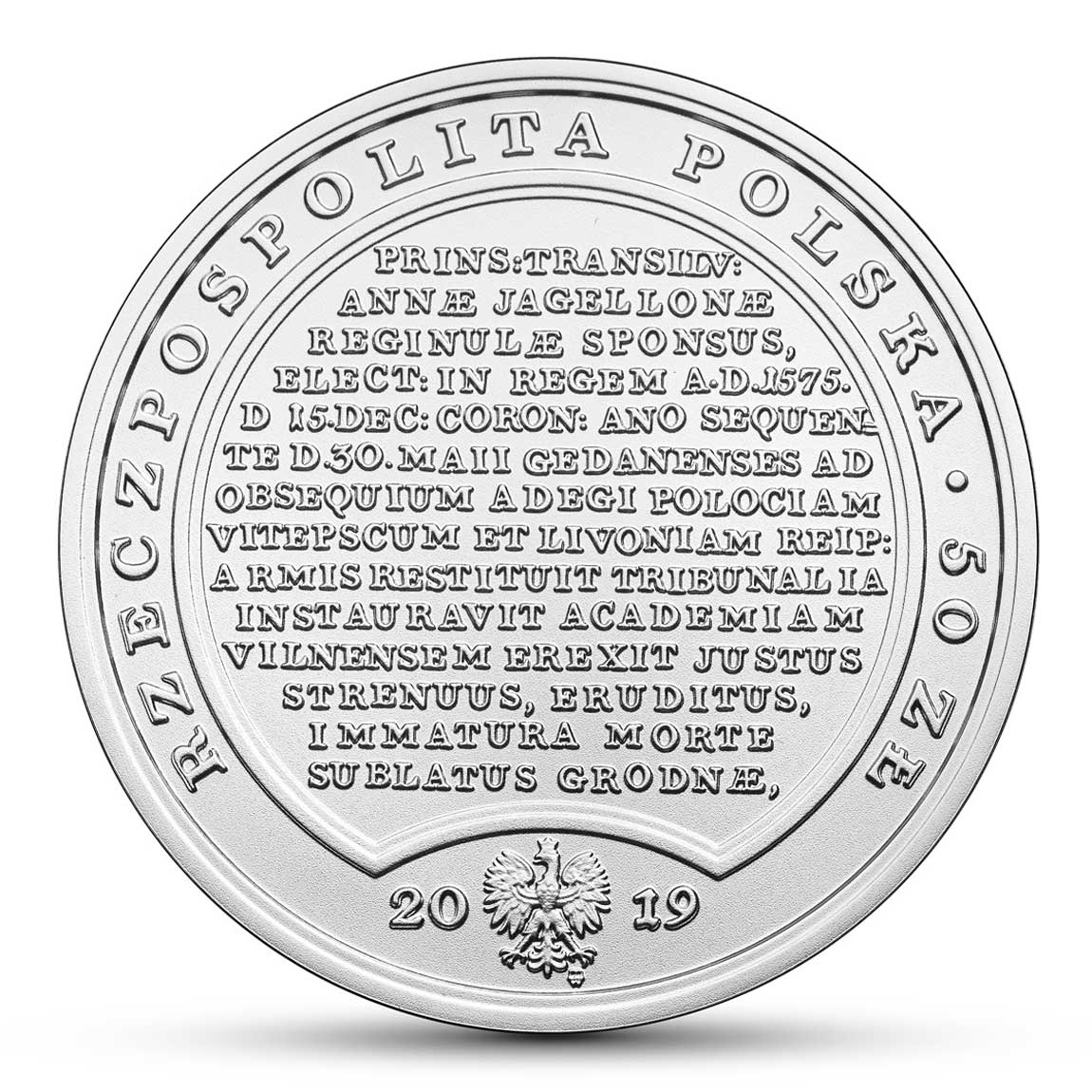
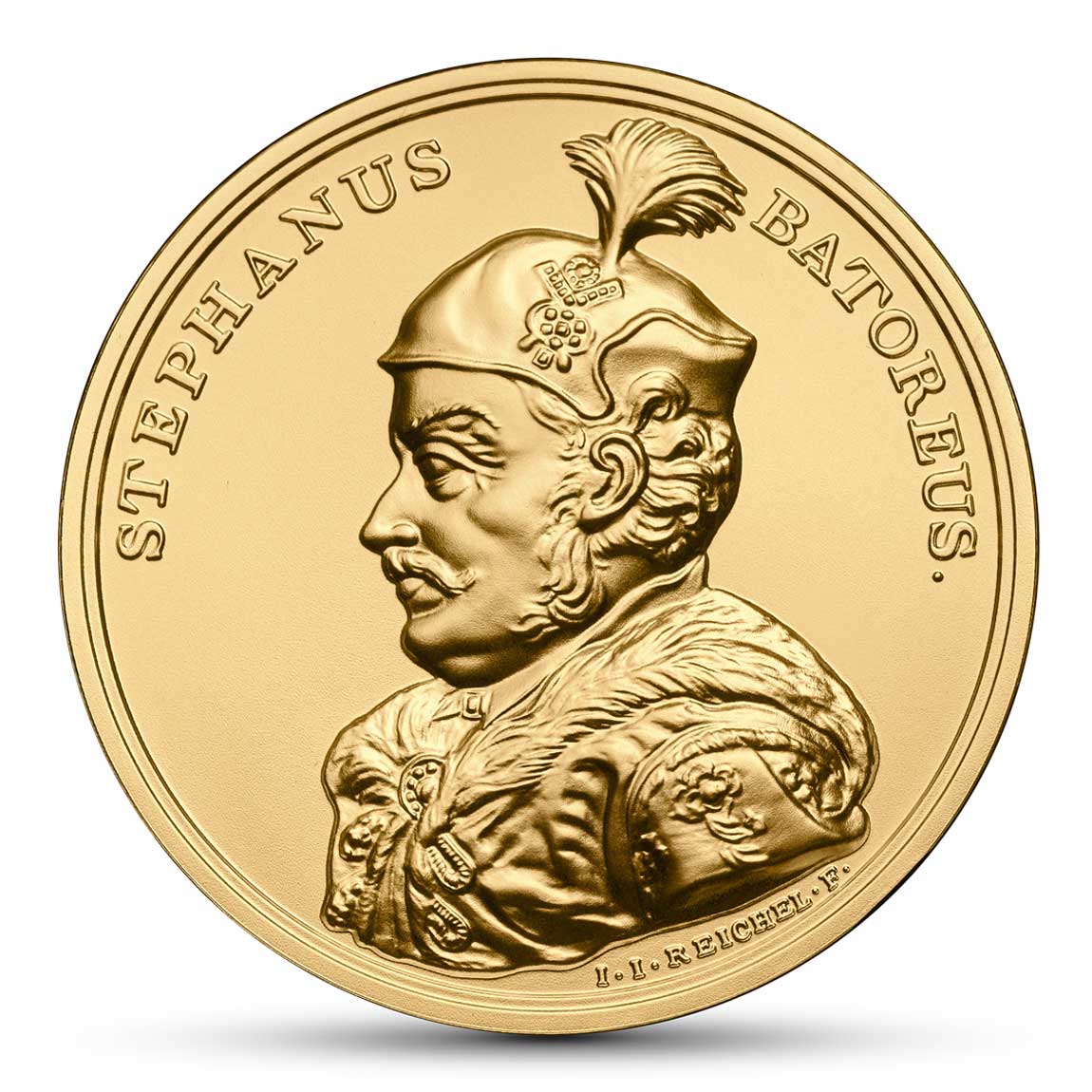

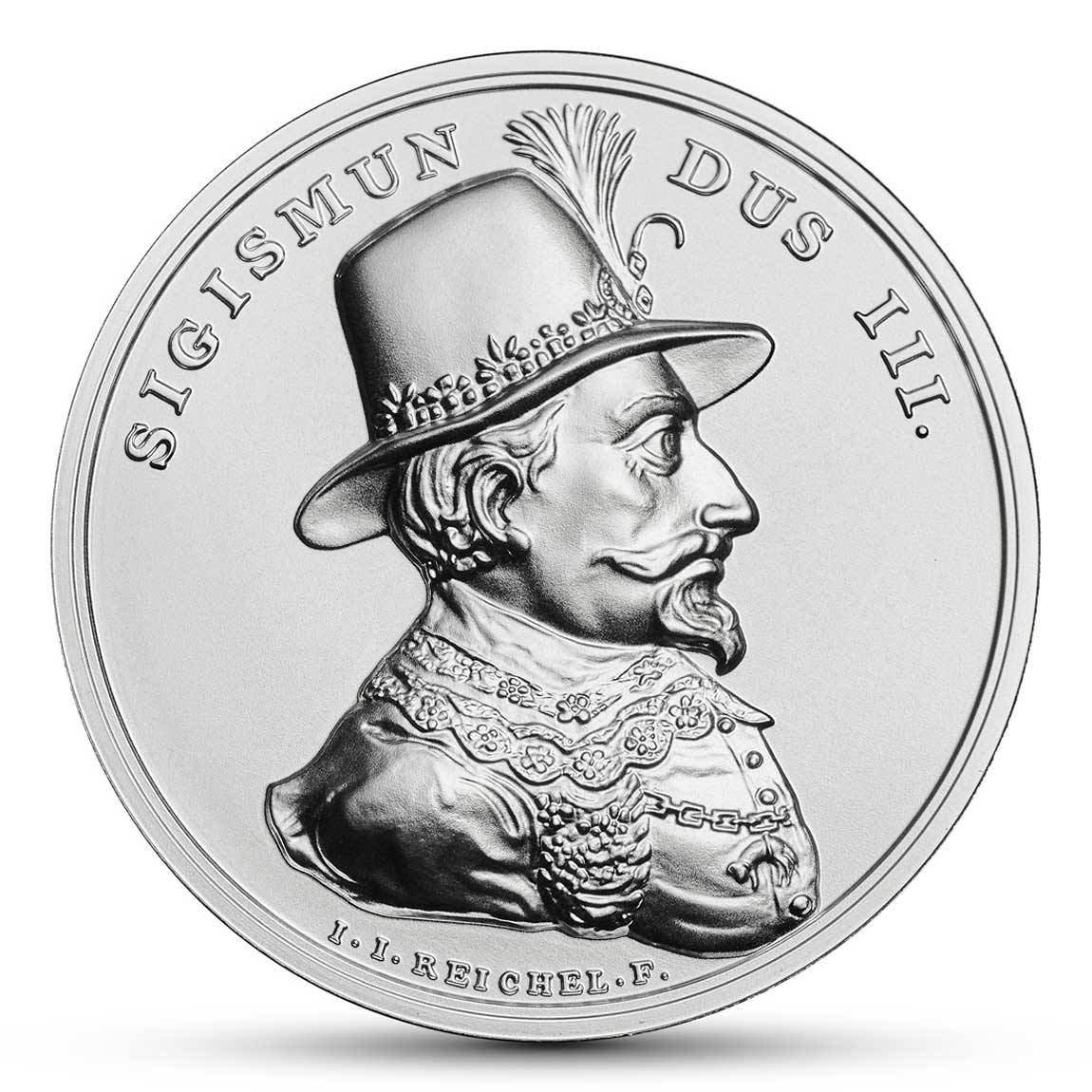

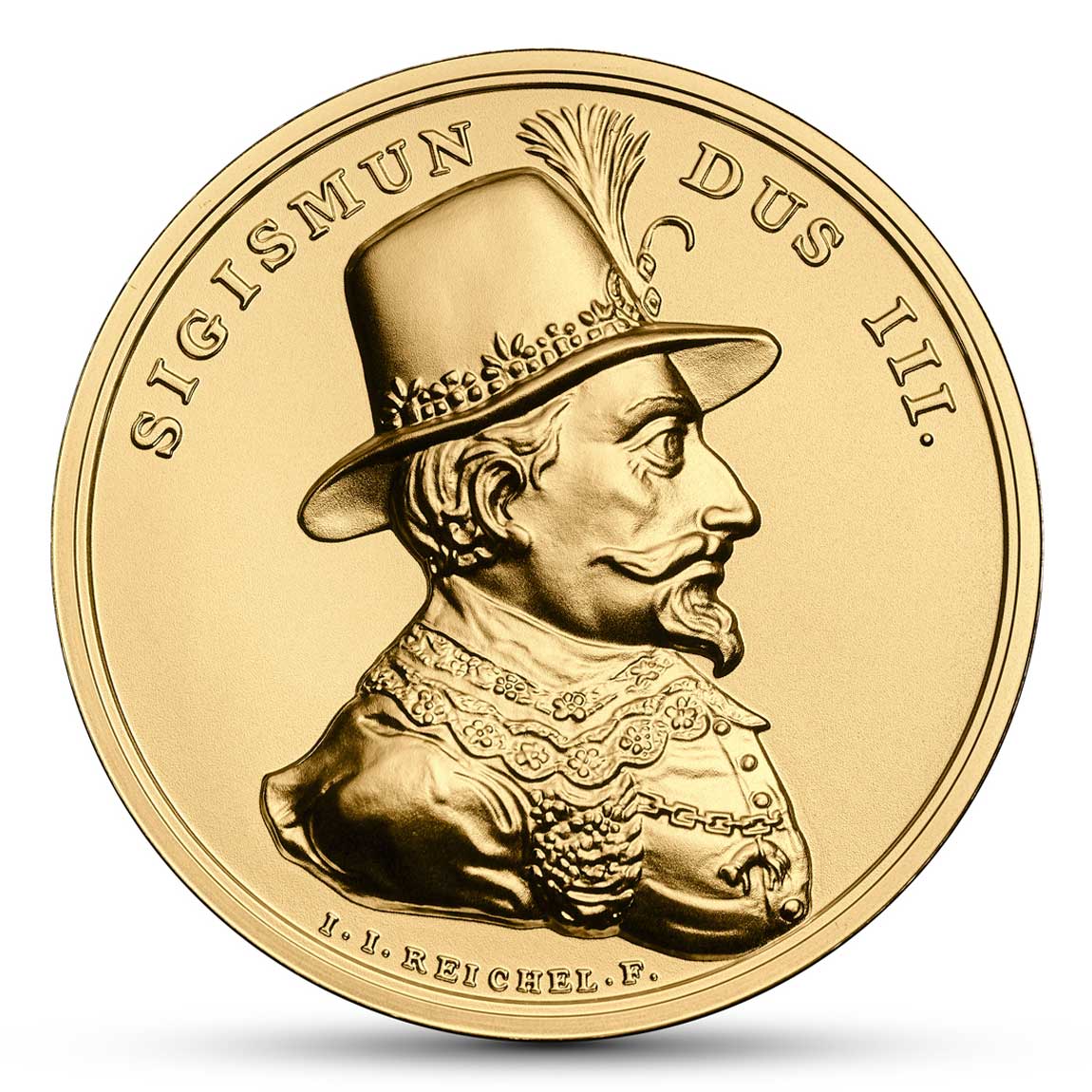
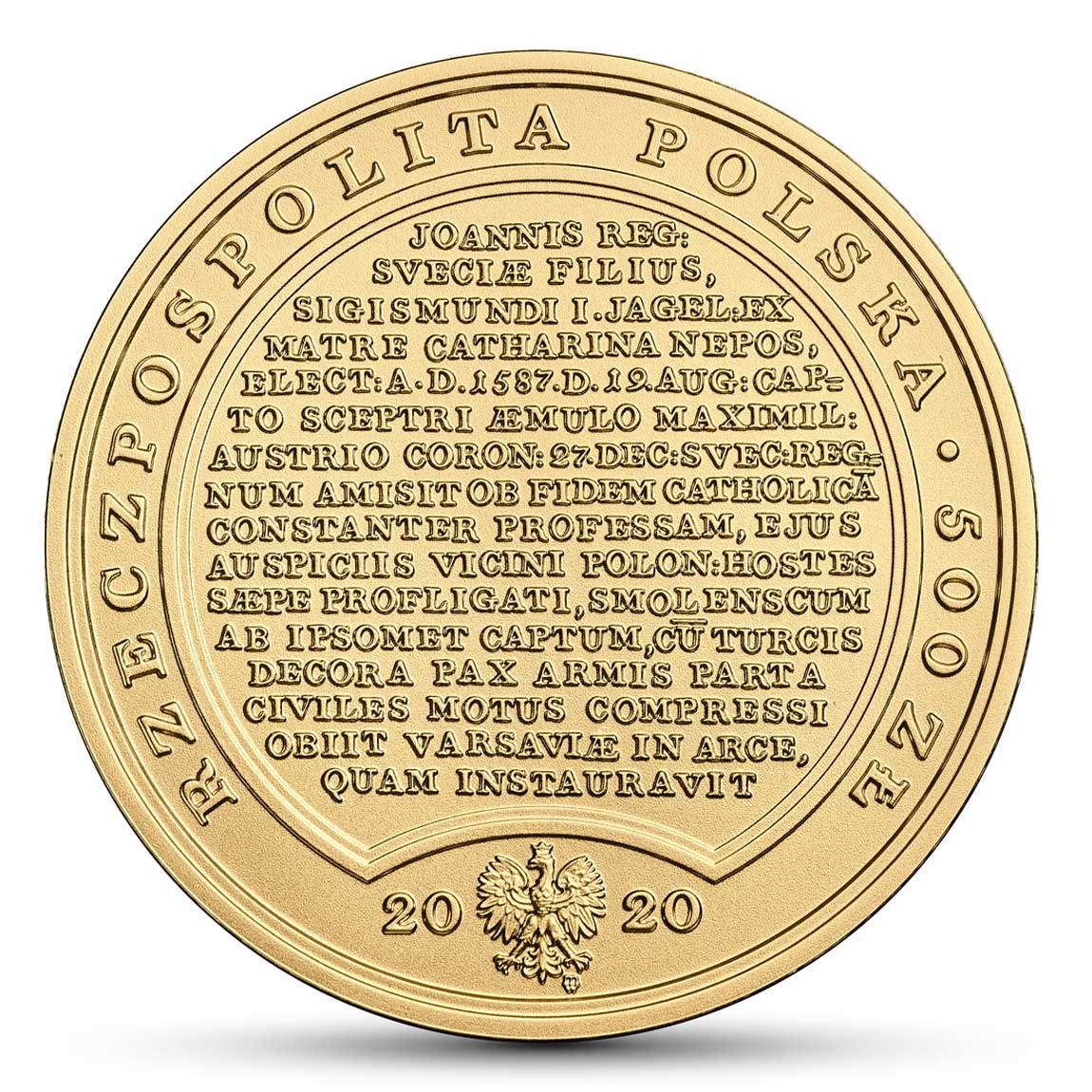
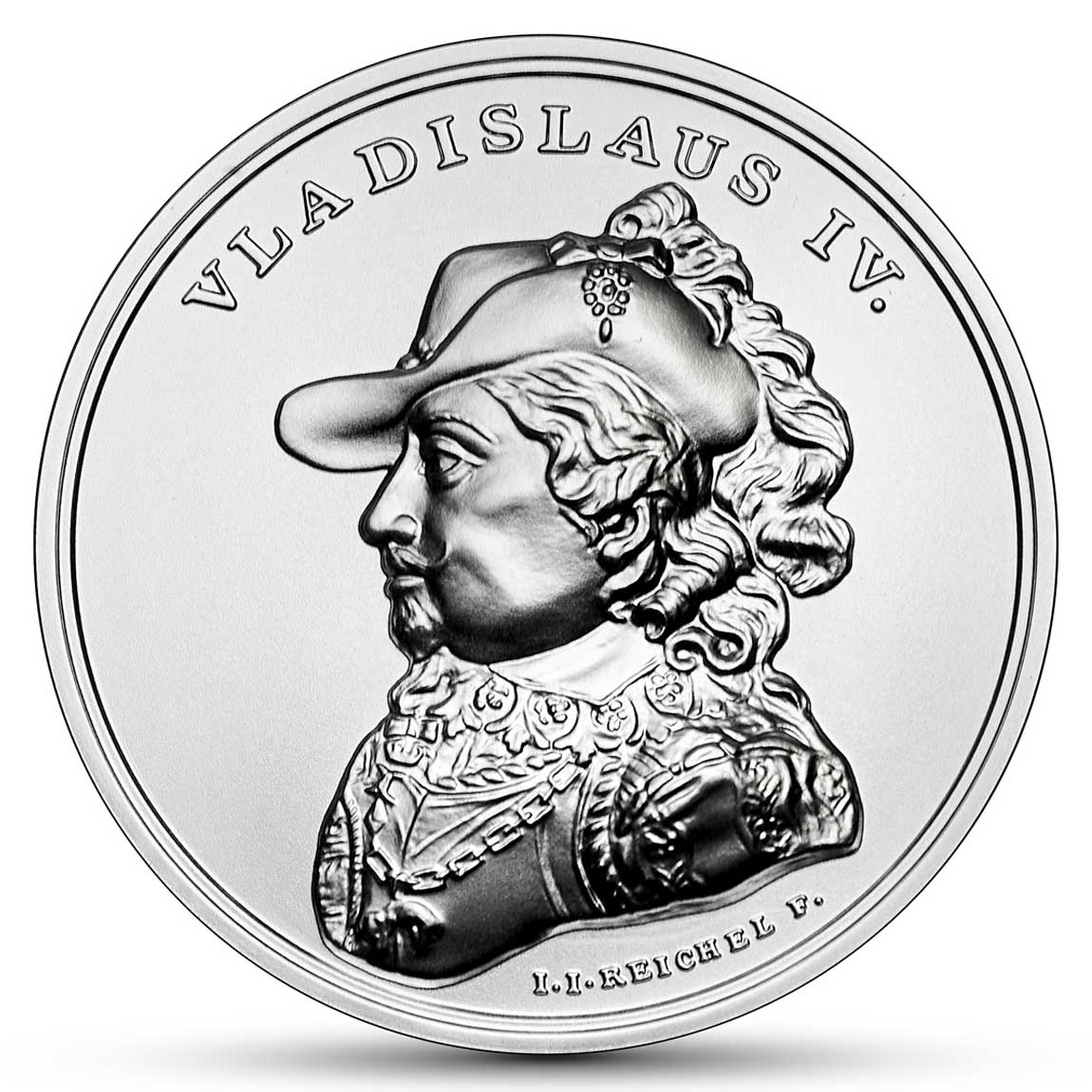
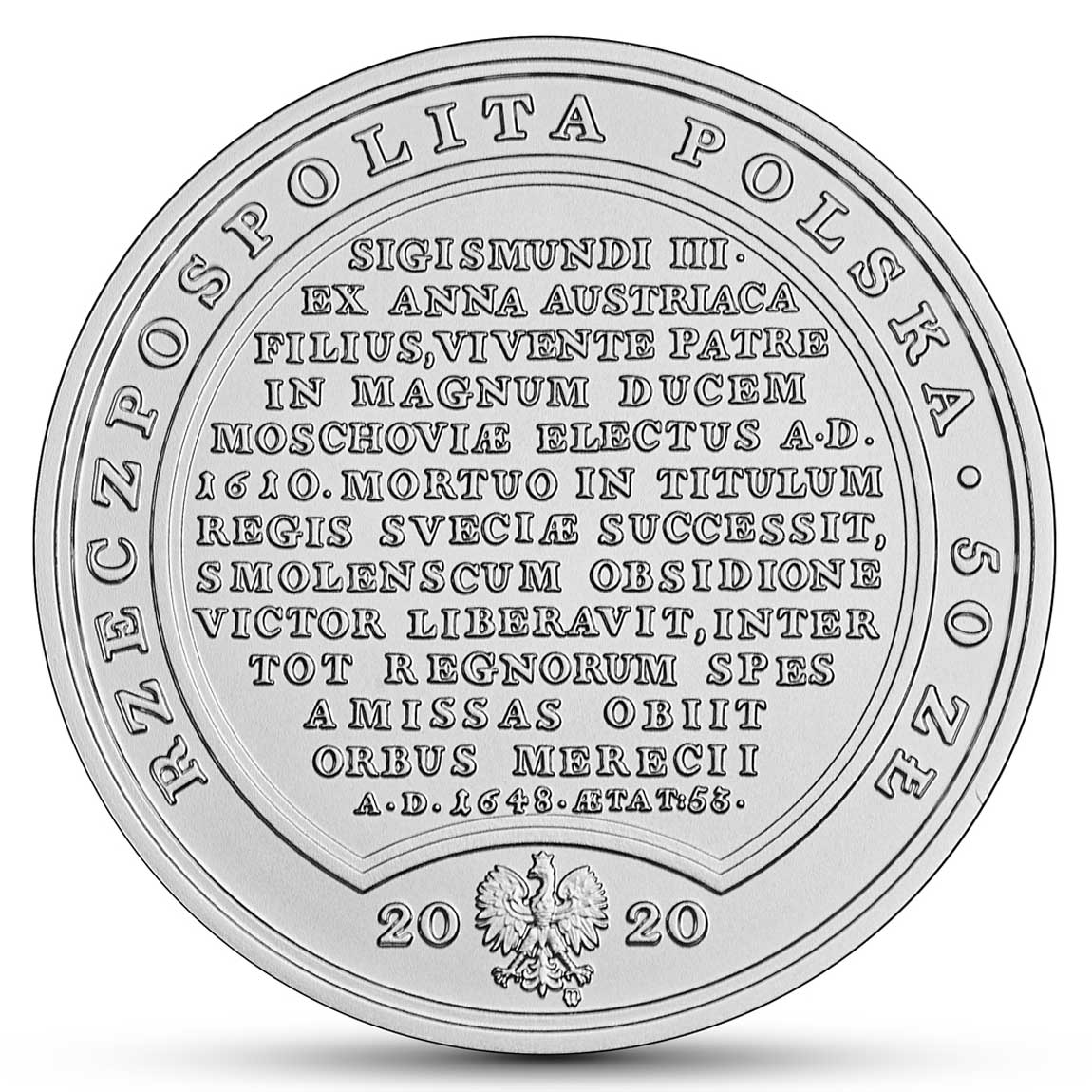


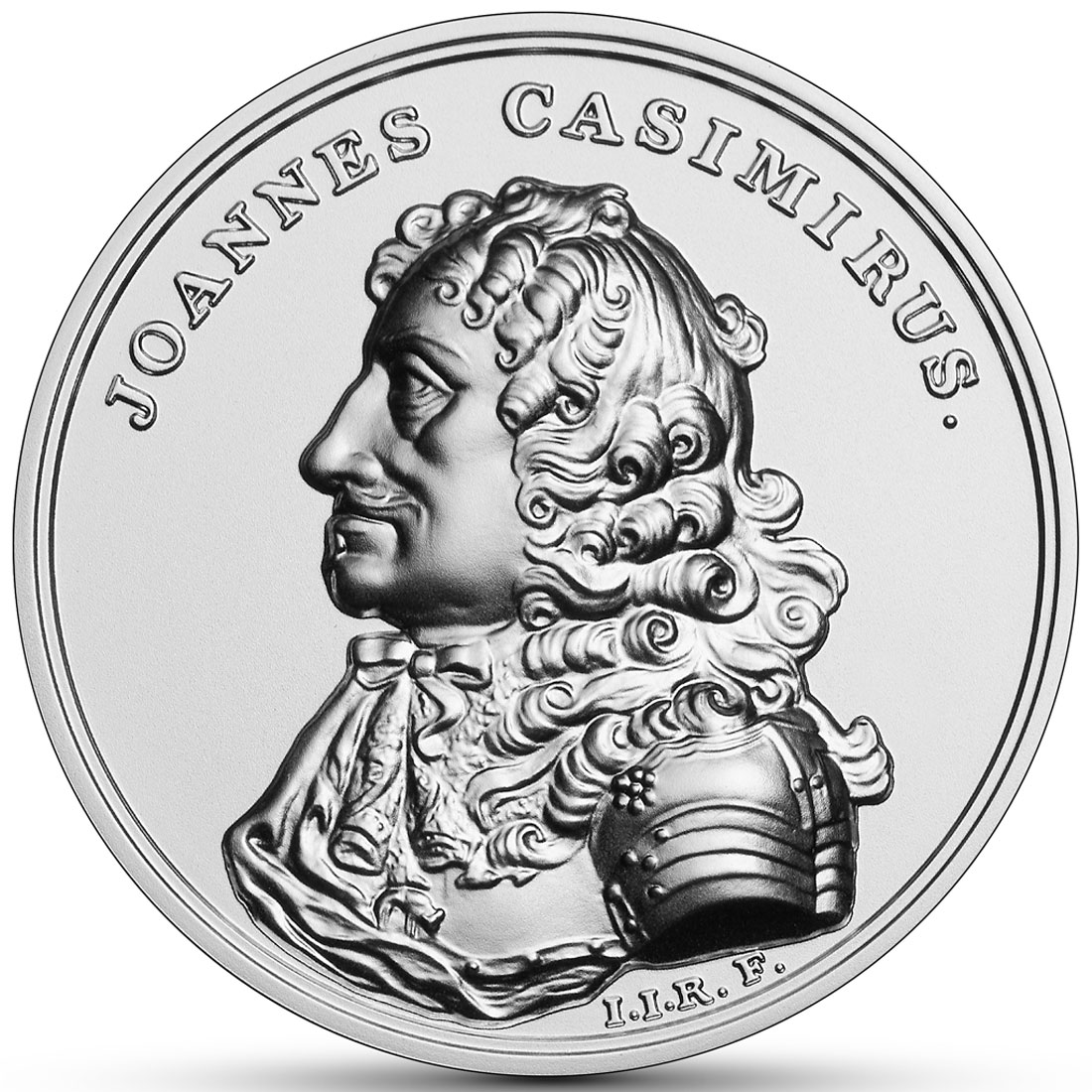
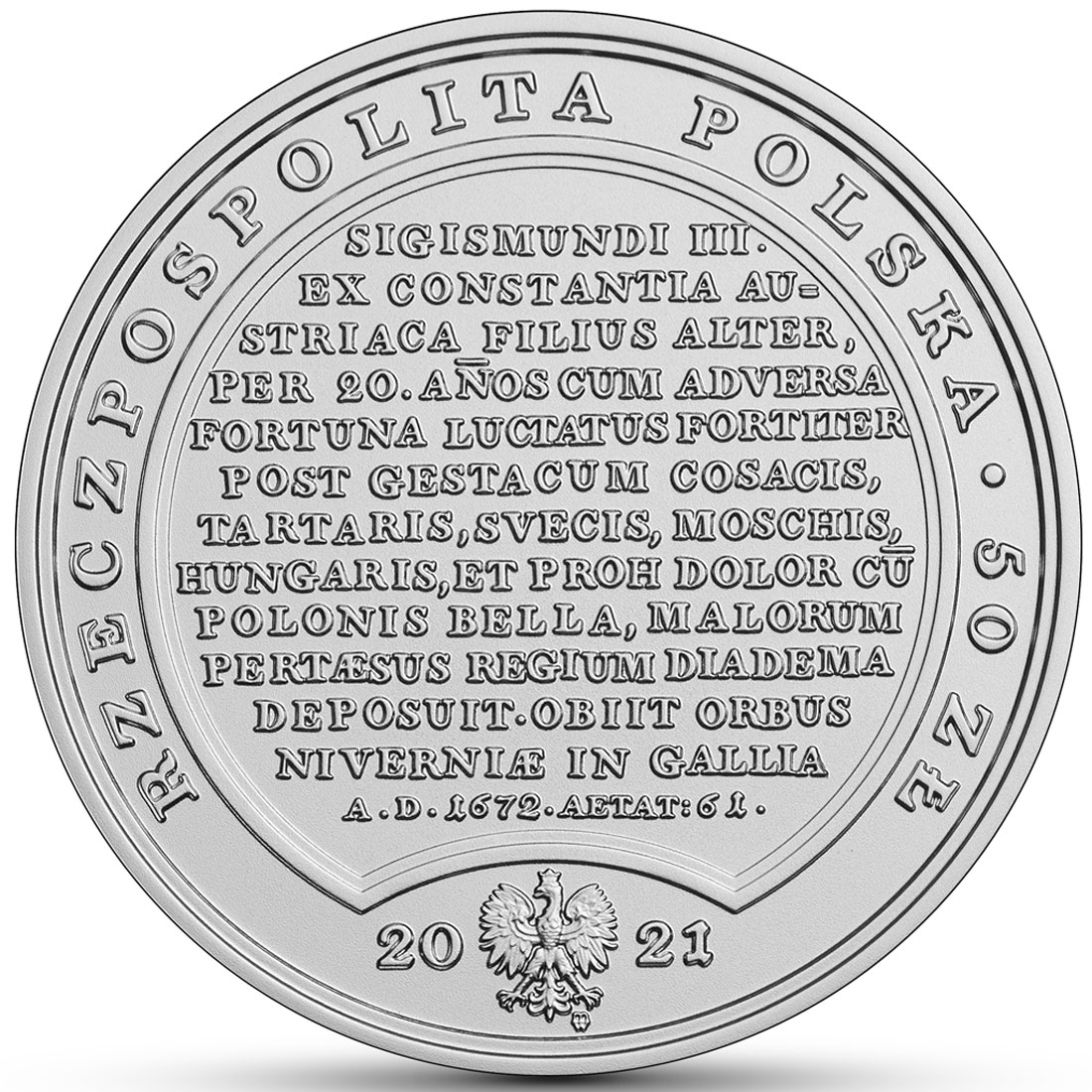
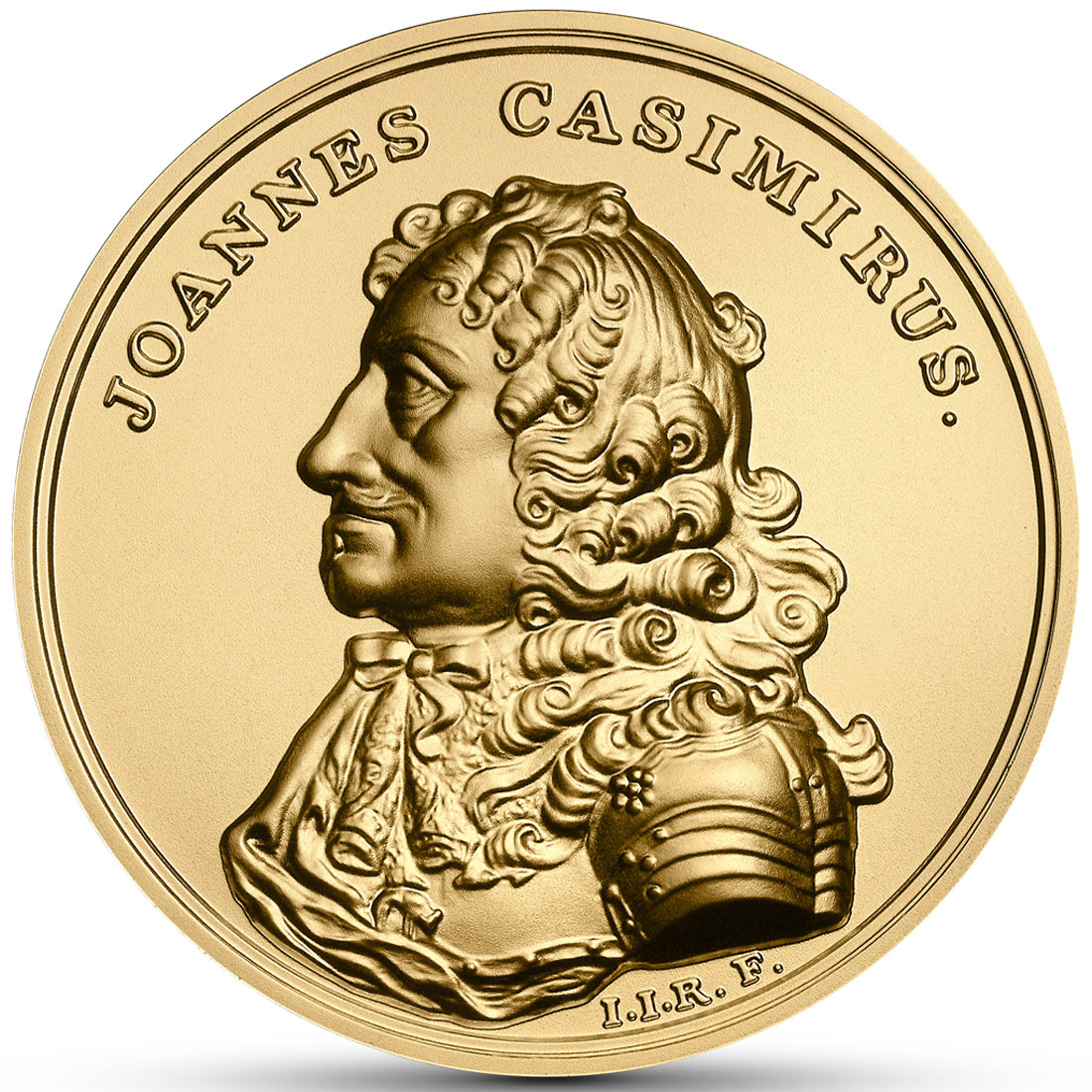

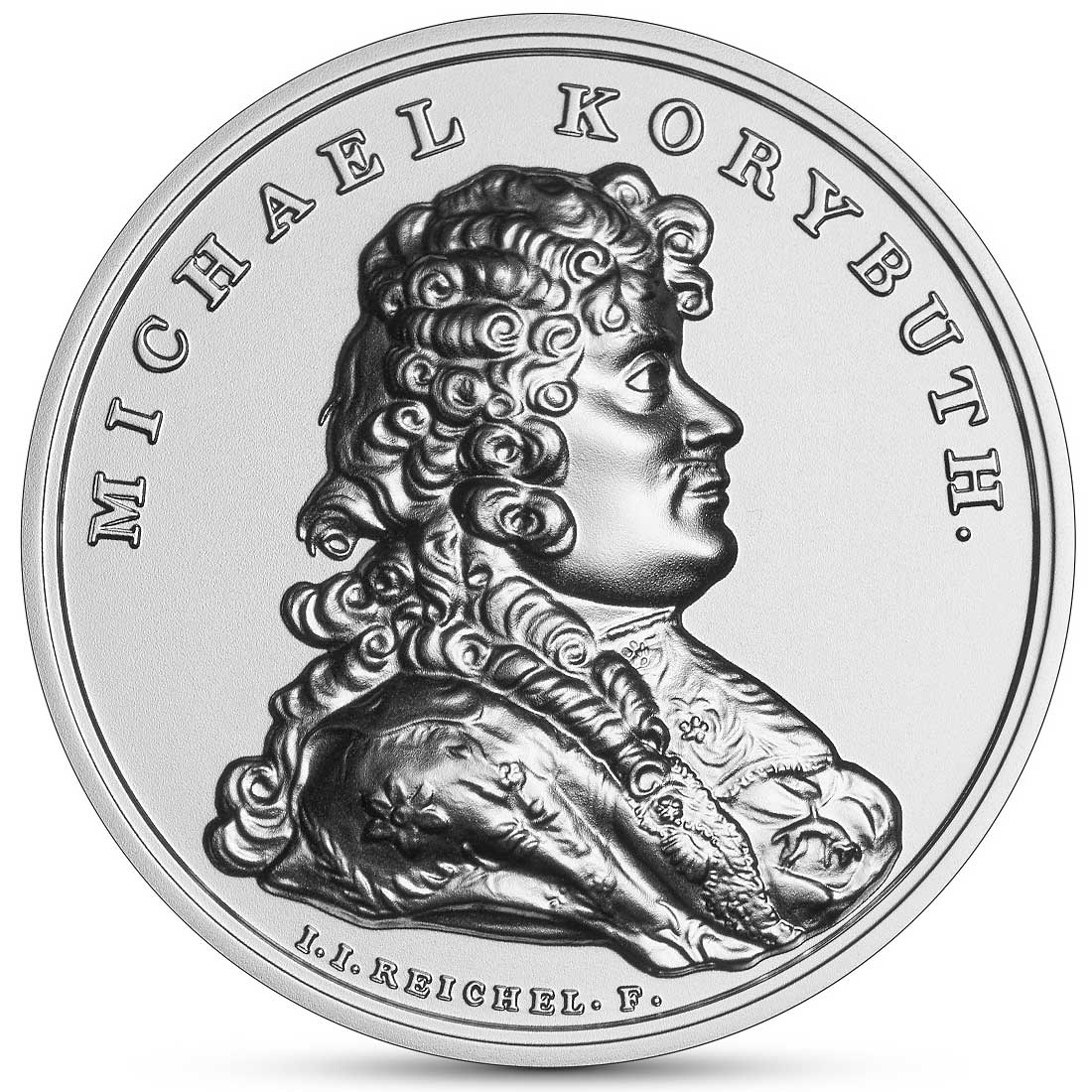



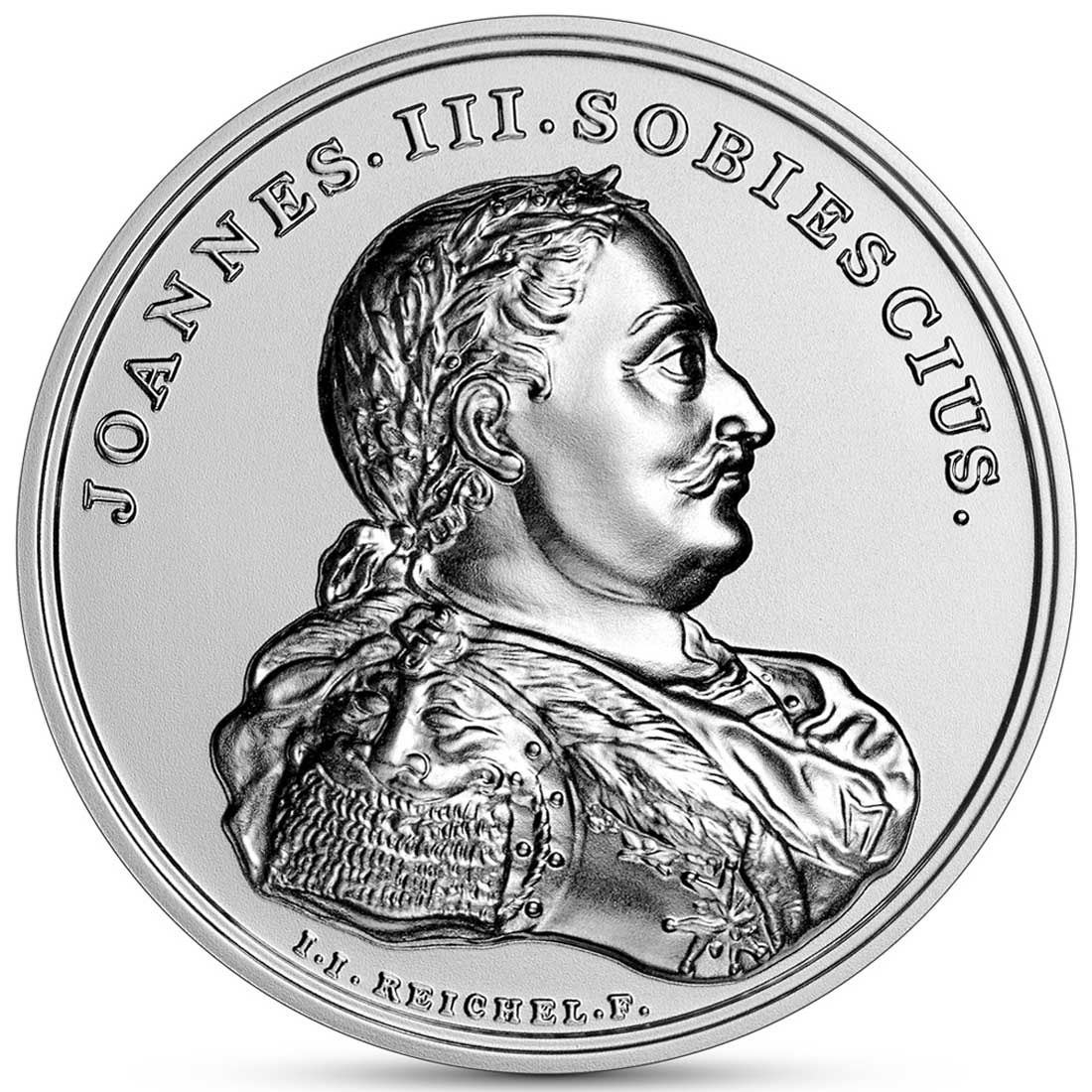
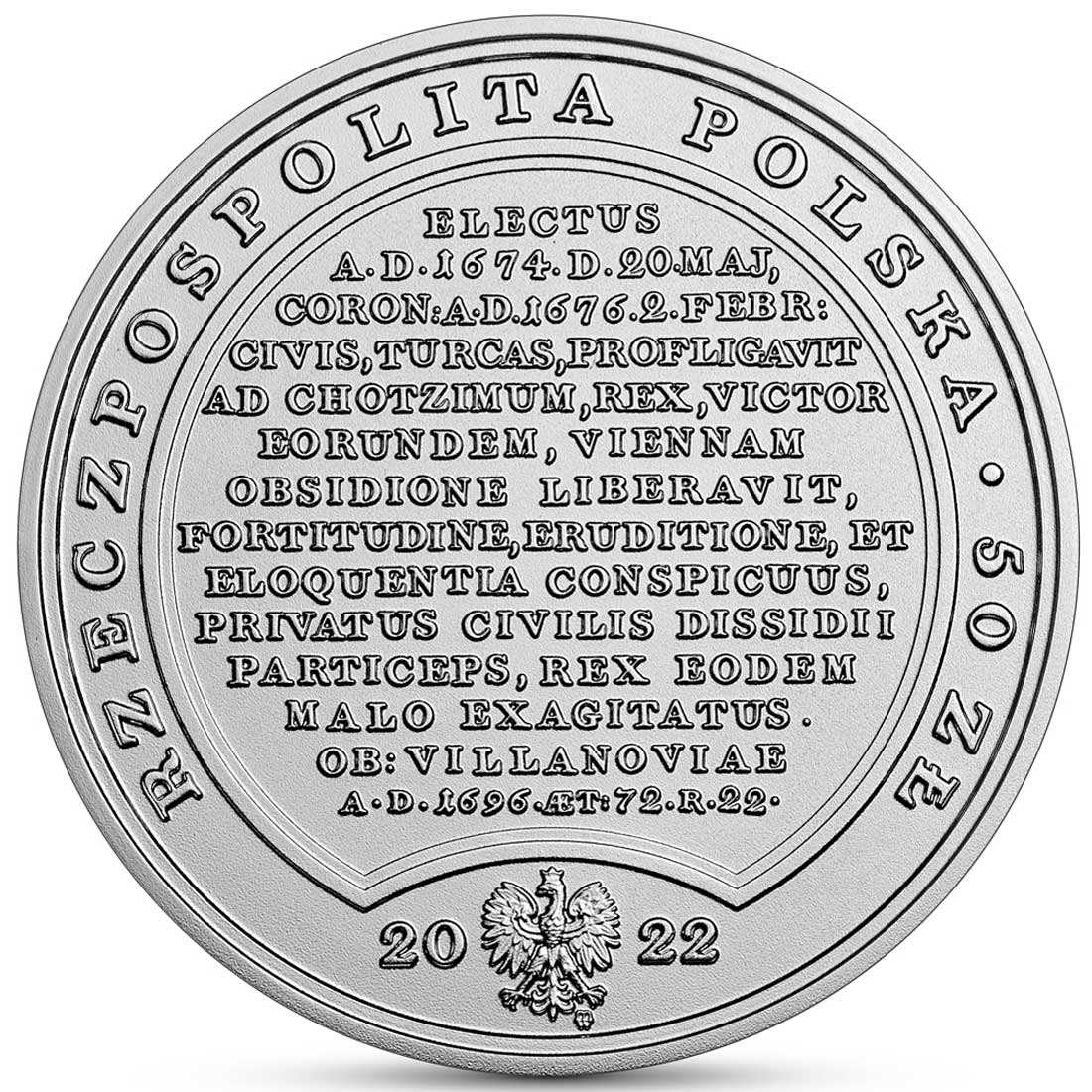

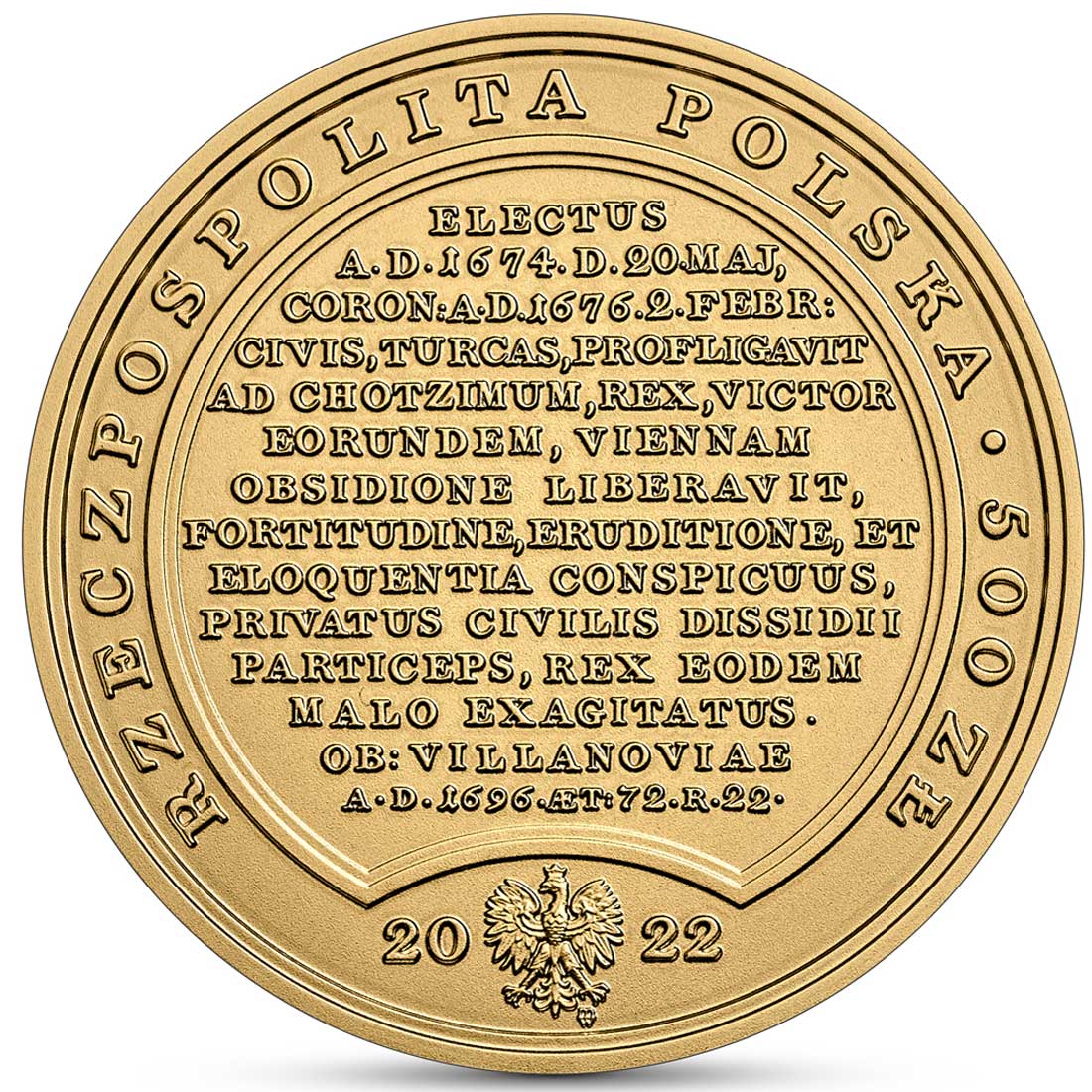
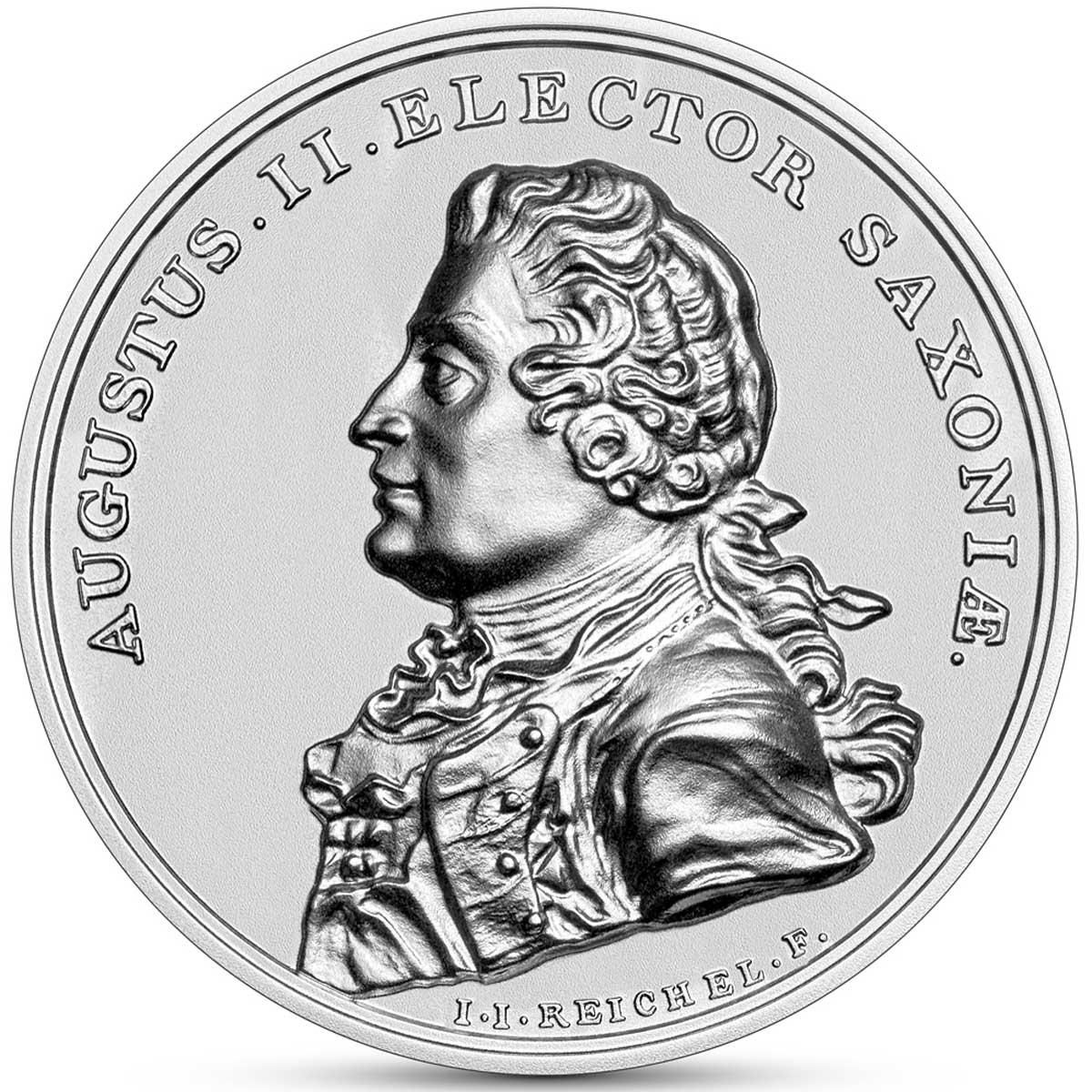
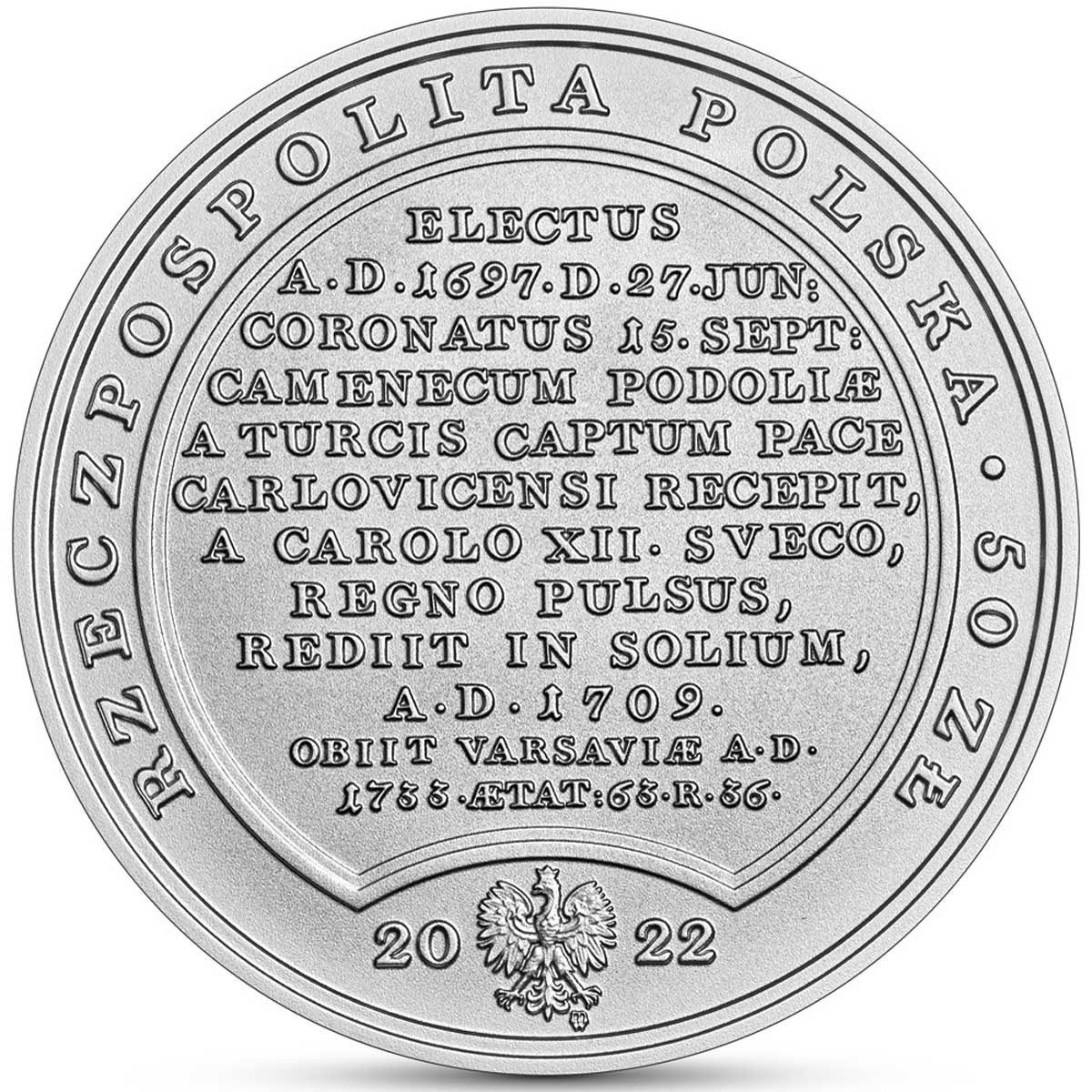



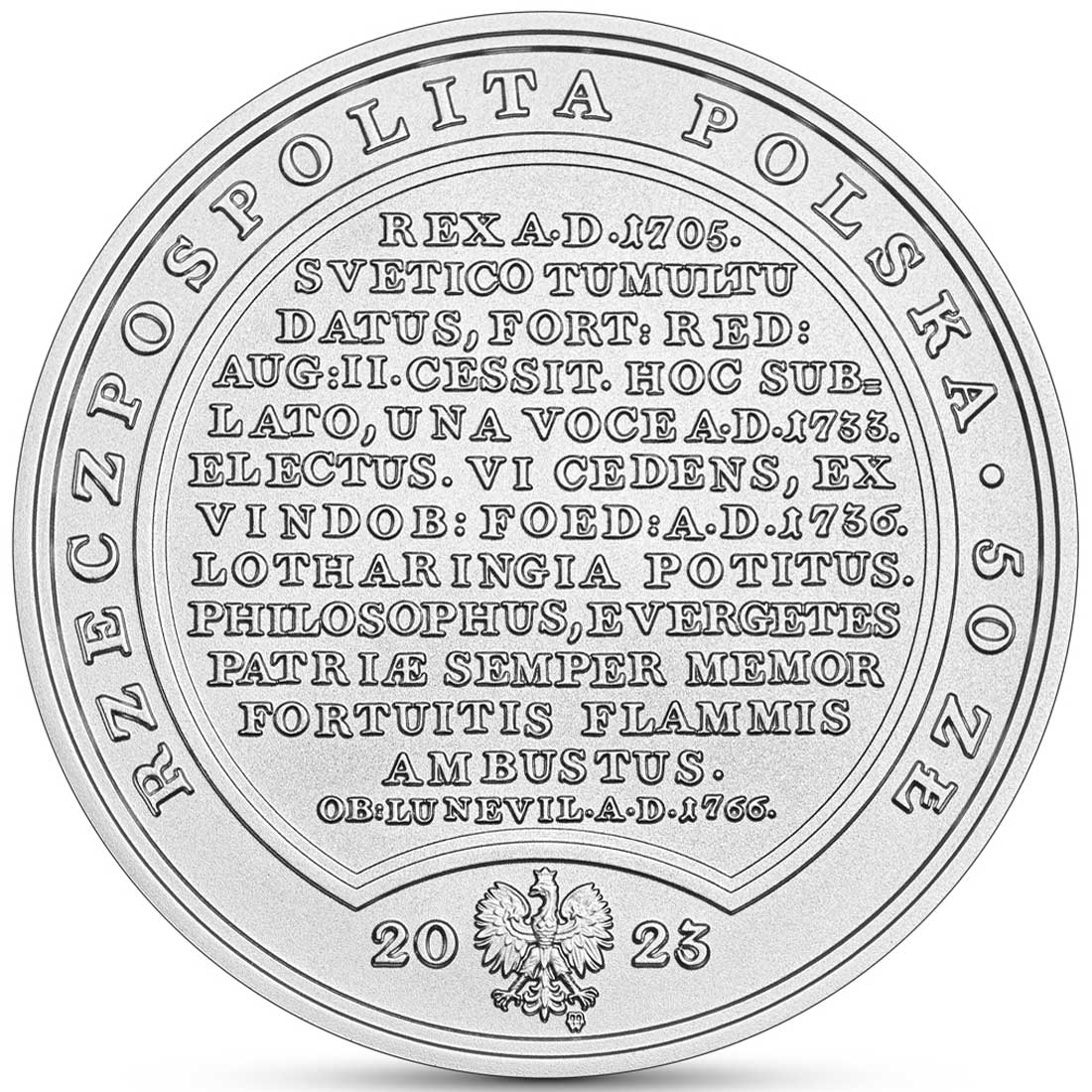
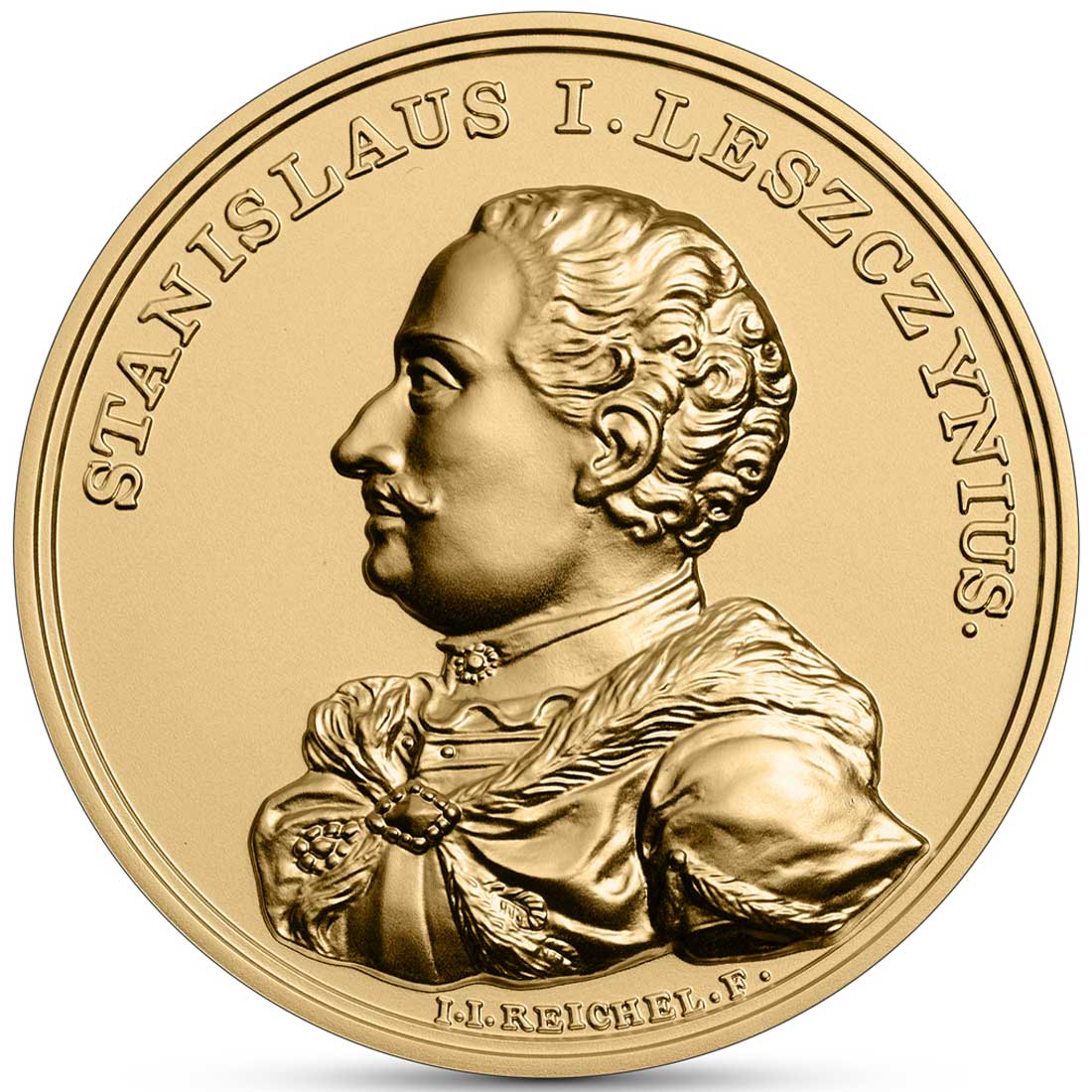
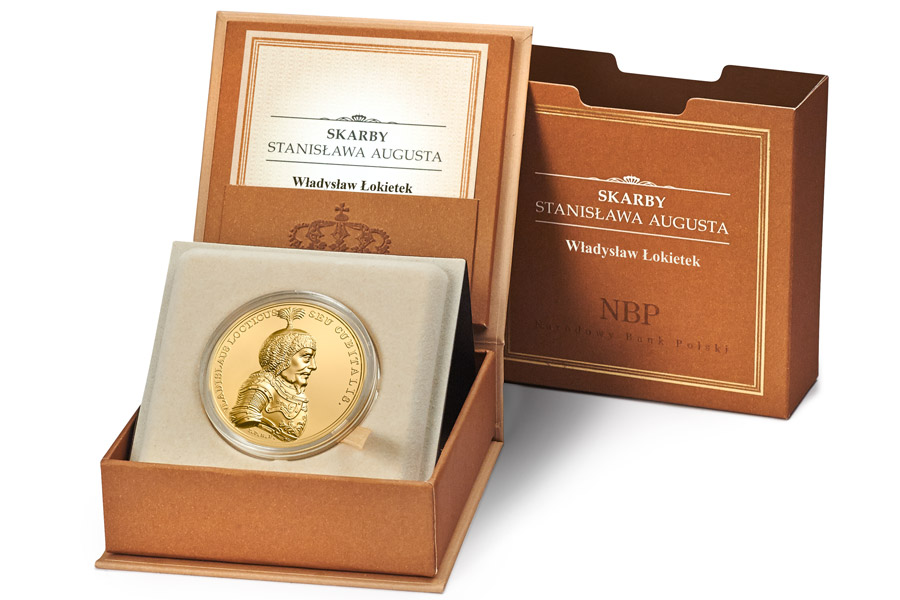
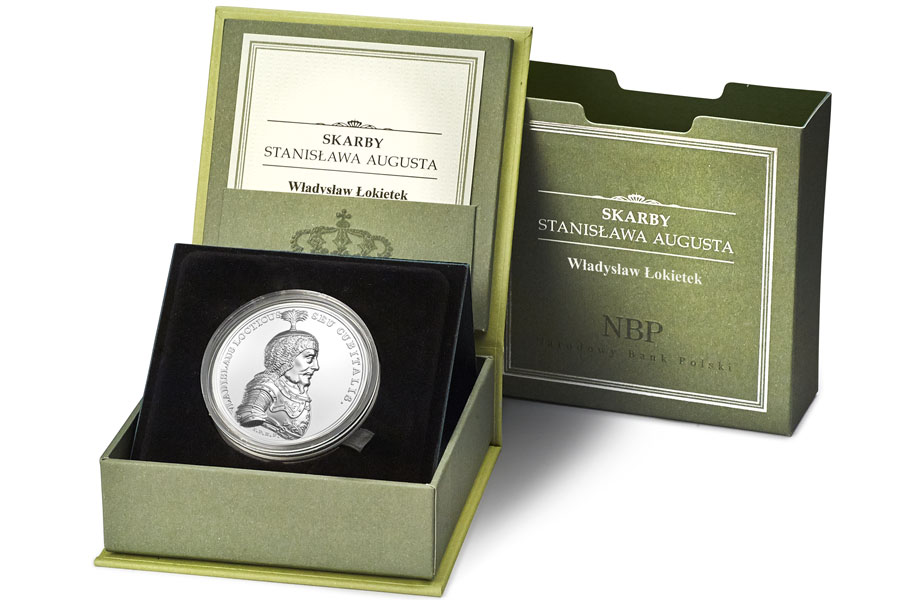


Where do you buy the box for this incredible series?
The Mint of Gdansk has them https://mennica-gdanska.pl/en/accessories/7-kasetaskarbystanisawaaugusta.html
Gdzie kupisz pudełko na tę niesamowitą serię?